Forums
- Forums
- Axis And Allies Forum
- General Discussion
- Aviation News
Aviation News
Post a reply
- Go to Next topic
- Go to Welcome
- Go to Introduce Yourself
- Go to General Discussion
- Go to Screenshots, Images and Videos
- Go to Off topic
- Go to Works in Progress
- Go to Skinning Tips / Tutorials
- Go to Skin Requests
- Go to IJAAF Library
- Go to Luftwaffe Library
- Go to RAF Library
- Go to USAAF / USN Library
- Go to Misc Library
- Go to The Ops Room
- Go to Made in Germany
- Go to Campaigns and Missions
- Go to Works in Progress
- Go to Juri's Air-Raid Shelter
- Go to Campaigns and Missions
- Go to Works in Progress
- Go to Skinpacks
- Go to External Projects Discussion
- Go to Books & Resources
-
 Main AdminATLANTIC OCEAN (Dec. 3, 2016) A C-2A Greyhound, assigned to the Rawhides of Fleet Logistics Support Squadron (VRC) 40, lands on the flight deck of the aircraft carrier USS George Washington (CVN 73). George Washington, homeported in Norfolk, is underway conducting carrier qualifications in the Atlantic Ocean. (U.S. Navy photo by Petty Officer 3rd Class Wyatt L. Anthony)
Main AdminATLANTIC OCEAN (Dec. 3, 2016) A C-2A Greyhound, assigned to the Rawhides of Fleet Logistics Support Squadron (VRC) 40, lands on the flight deck of the aircraft carrier USS George Washington (CVN 73). George Washington, homeported in Norfolk, is underway conducting carrier qualifications in the Atlantic Ocean. (U.S. Navy photo by Petty Officer 3rd Class Wyatt L. Anthony)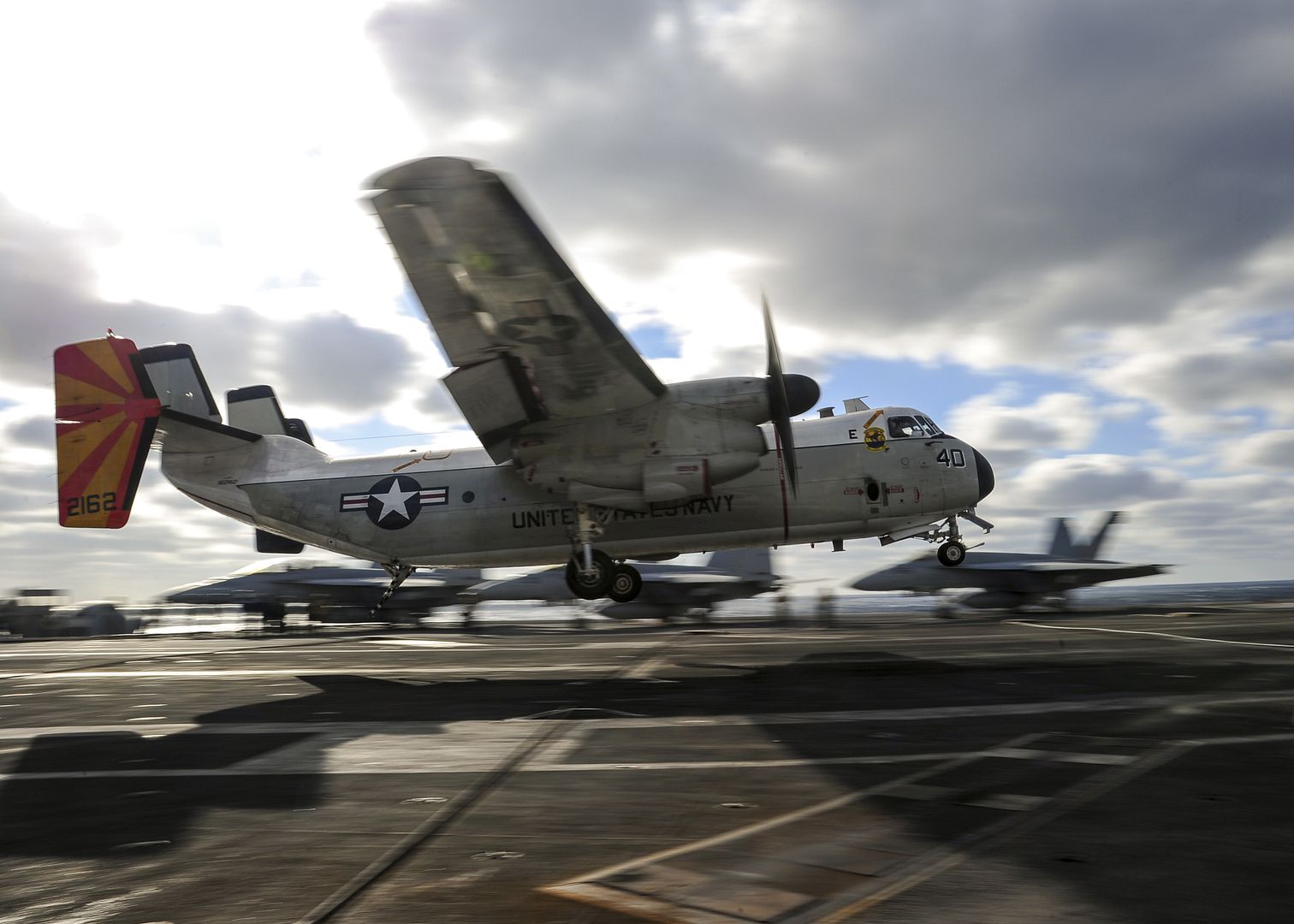
SUEZ CANAL (Dec. 4, 2016) The aircraft carrier USS Dwight D. Eisenhower (CVN 69) conducts a routine, scheduled transit through the Suez Canal. The ship and its carrier strike group are deployed in support of Operation Inherent Resolve, maritime security operations and theater security cooperation efforts in the U.S. 5th Fleet area of operations. (U.S. Navy photo by Petty Officer 2nd Class Michael R. Gendron/Released)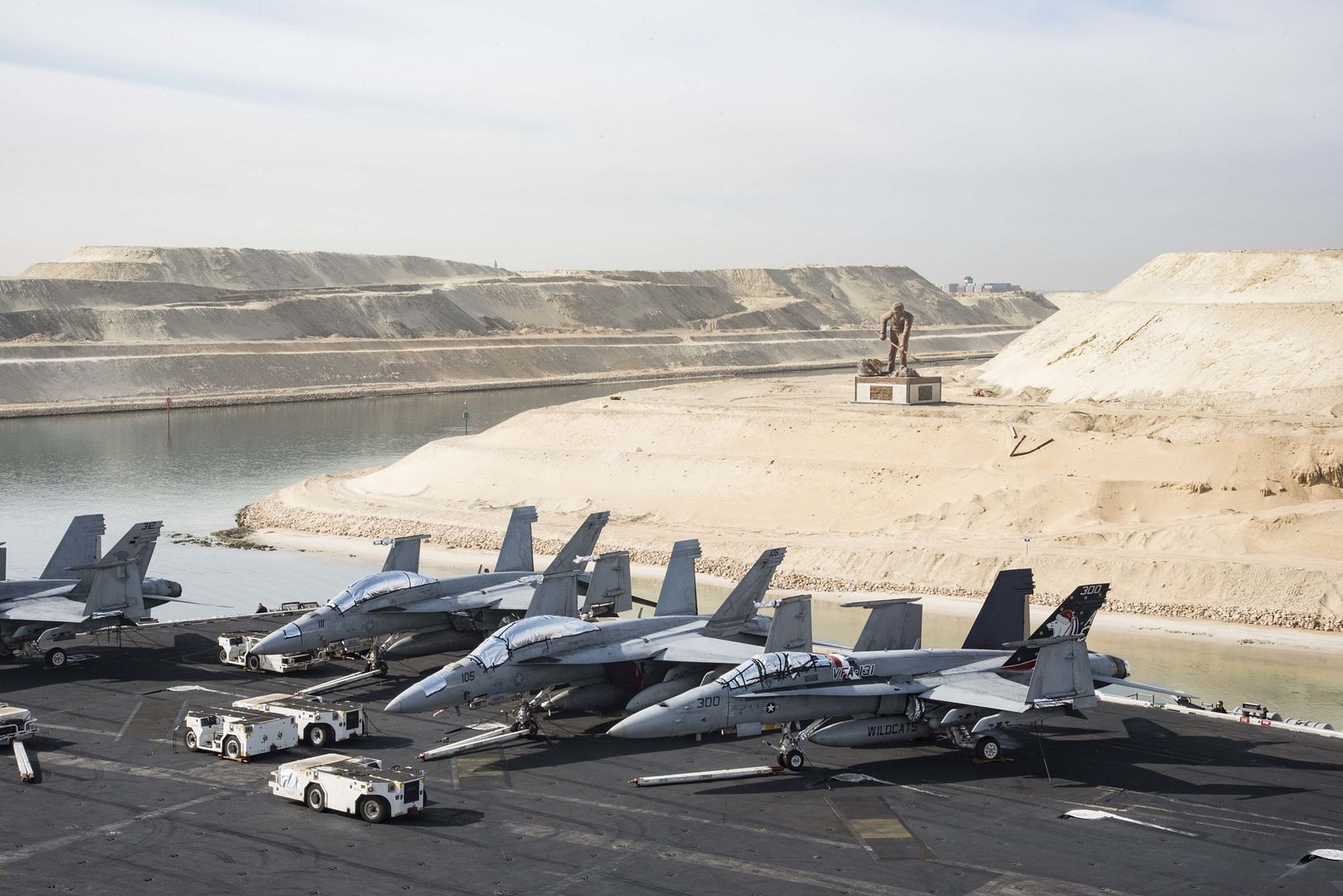
SUEZ CANAL (Dec. 4, 2016) The aircraft carrier USS Dwight D. Eisenhower (CVN 69) (Ike) conducts a routine, scheduled transit through the Suez Canal. Ike and its carrier strike group are deployed in support of Operation Inherent Resolve, maritime security operations and theater security cooperation efforts in the U.S. 5th Fleet area of operations. (U.S. Navy photo by Petty Officer 3rd Class Nathan T. Beard)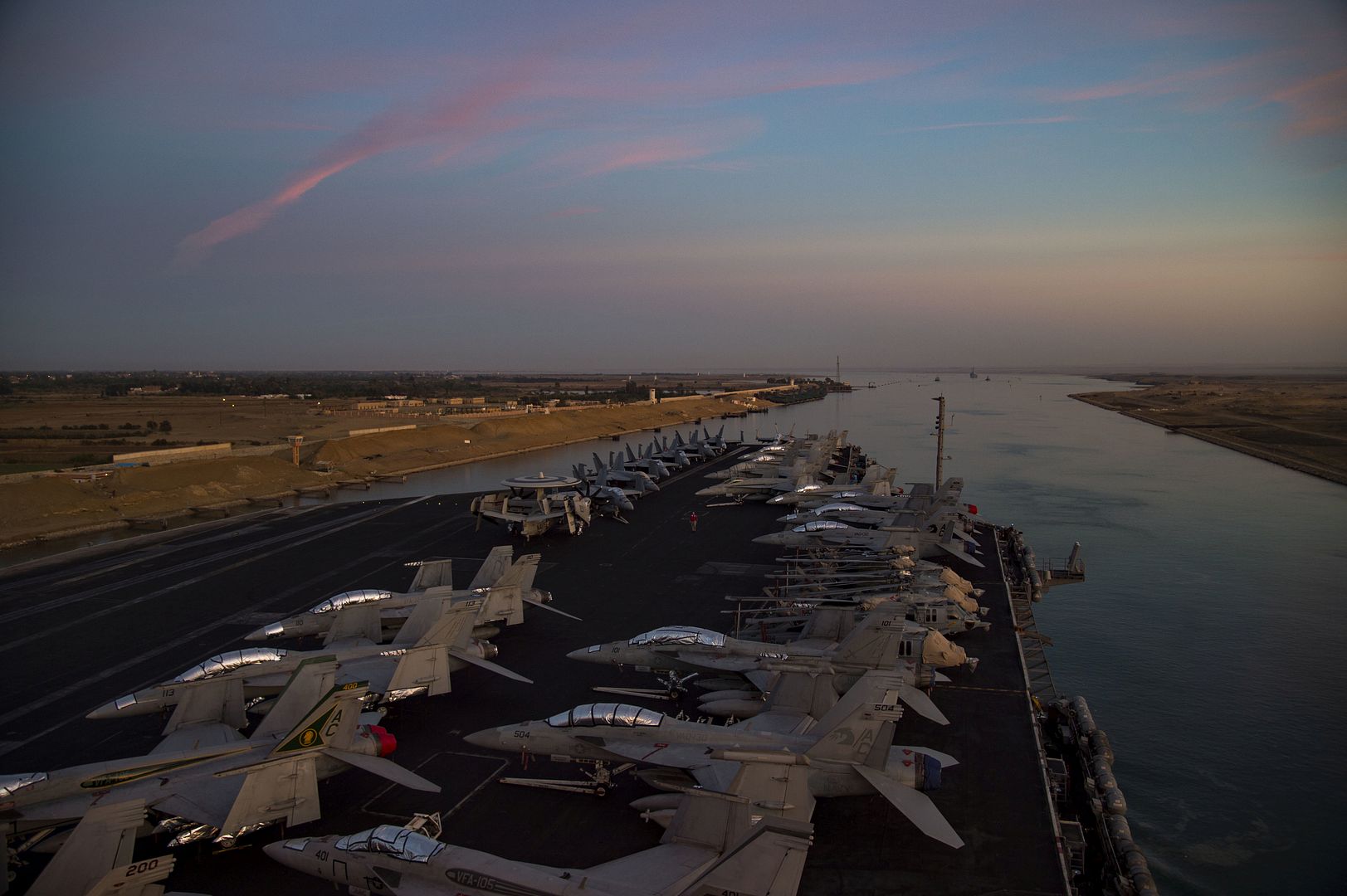
A KC-135R Stratotanker assigned to the 126th Air Refueling Wing at Scott Air Force Base, Ill., launches on a black letter flight Dec. 5, 2016. A black letter flight occurs when their are zero discrepancies or maintenance issues on the aircraft. (Air National Guard photo by Staff Sgt. Andrew Kleiser)
A U.S. Air Force F-15E Strike Eagle from the 391st Fighter Squadron, Mountain Home Air Force Base, Idaho, sits on the flightline at Tyndall Air Force Base, Fla., Dec. 5, 2016. The F-15E is taking part in Checkered Flag 17-1, an exercise that gives several Air Force units the opportunity to train together, build relationships and practice battle space tactics and procedures. (U.S. Air Force photo by Senior Airman Dustin Mullen/Released)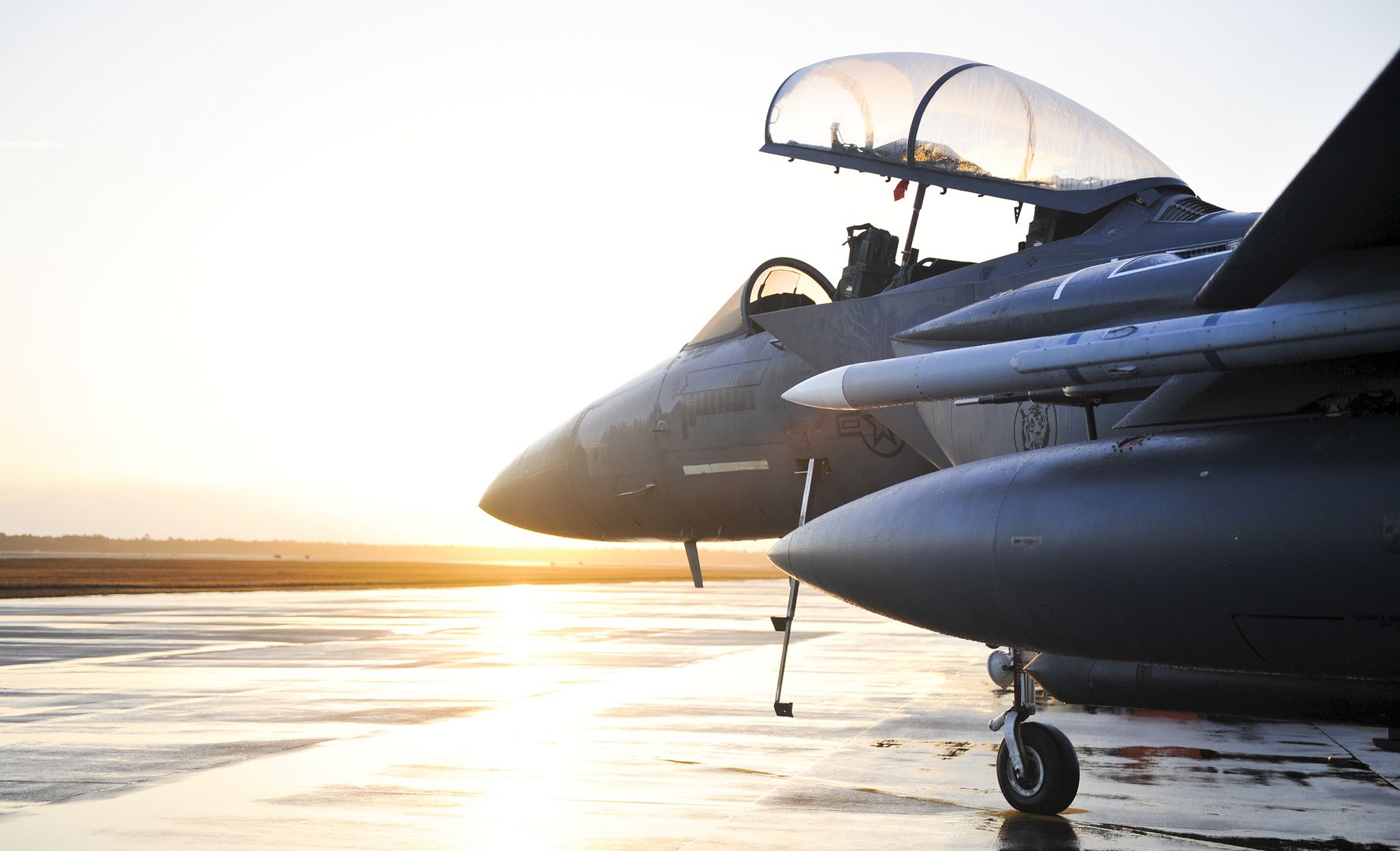
A U.S. Air Force F-22 Raptor takes off during Checkered Flag 17-1 at Tyndall Air Force Base, Fla., Dec. 5, 2016. In addition to Tyndall?s Raptors, F-35A Lightning IIs, F-15E Strike Eagles, F-16 Fighting Falcons, HH-60G Pave Hawks, and command and control aircraft like the E-3 Sentry are participating in Checkered Flag, a large-scale total force exercise. (U.S. Air Force photo by Staff Sgt. Alex Fox Echols III/Released)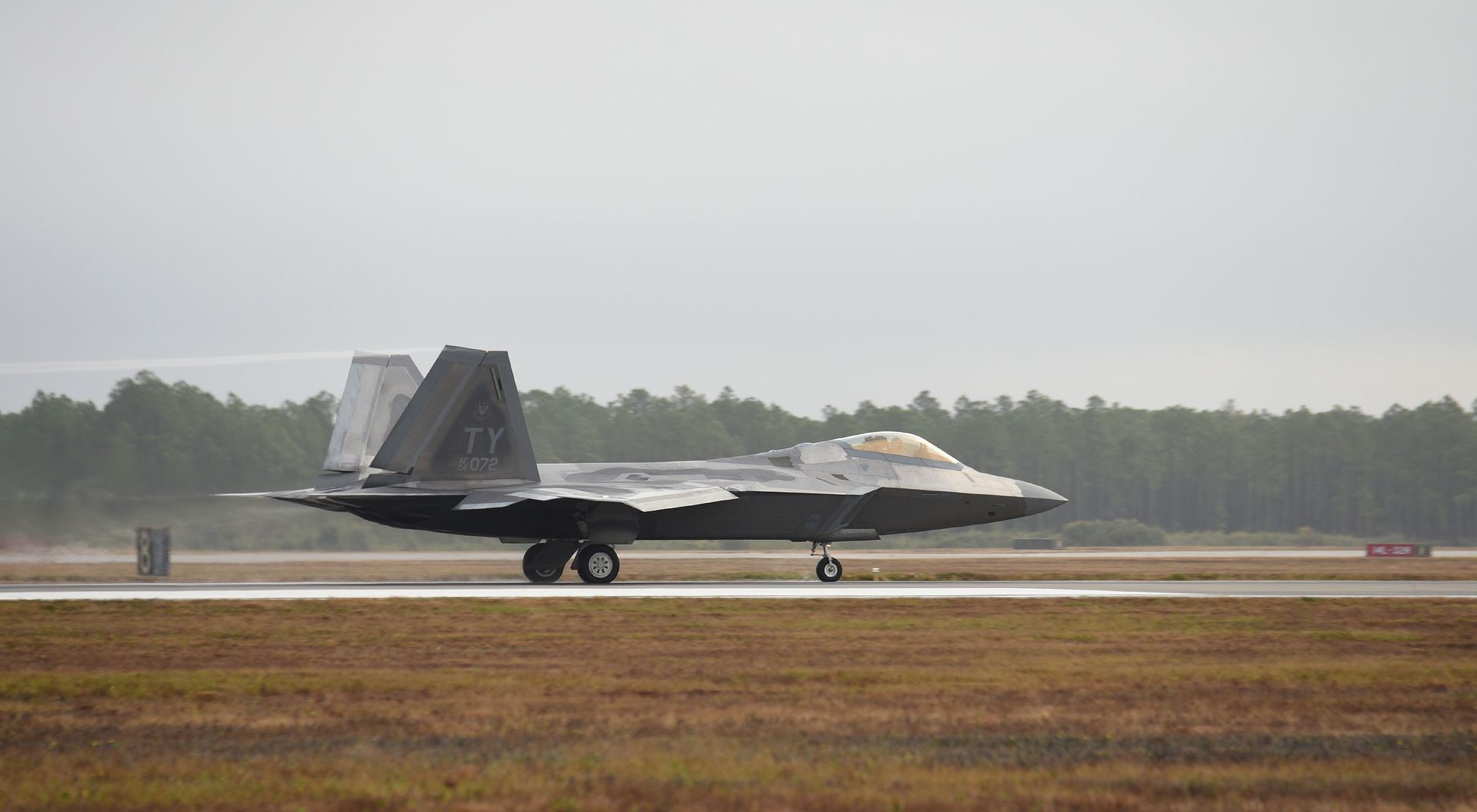
A U.S. Marine Corps AV-8B Harrier takes its spot on the flight line after arrival to Chitose, Japan, Dec. 5, 2016. Following the arrival of the squadron?s Harriers, a press conference was held to acknowledge questions pertaining to the aircraft and the Aviation Training Relocation Program. (U.S. Marine Corps photo by Cpl. James A. Guillory)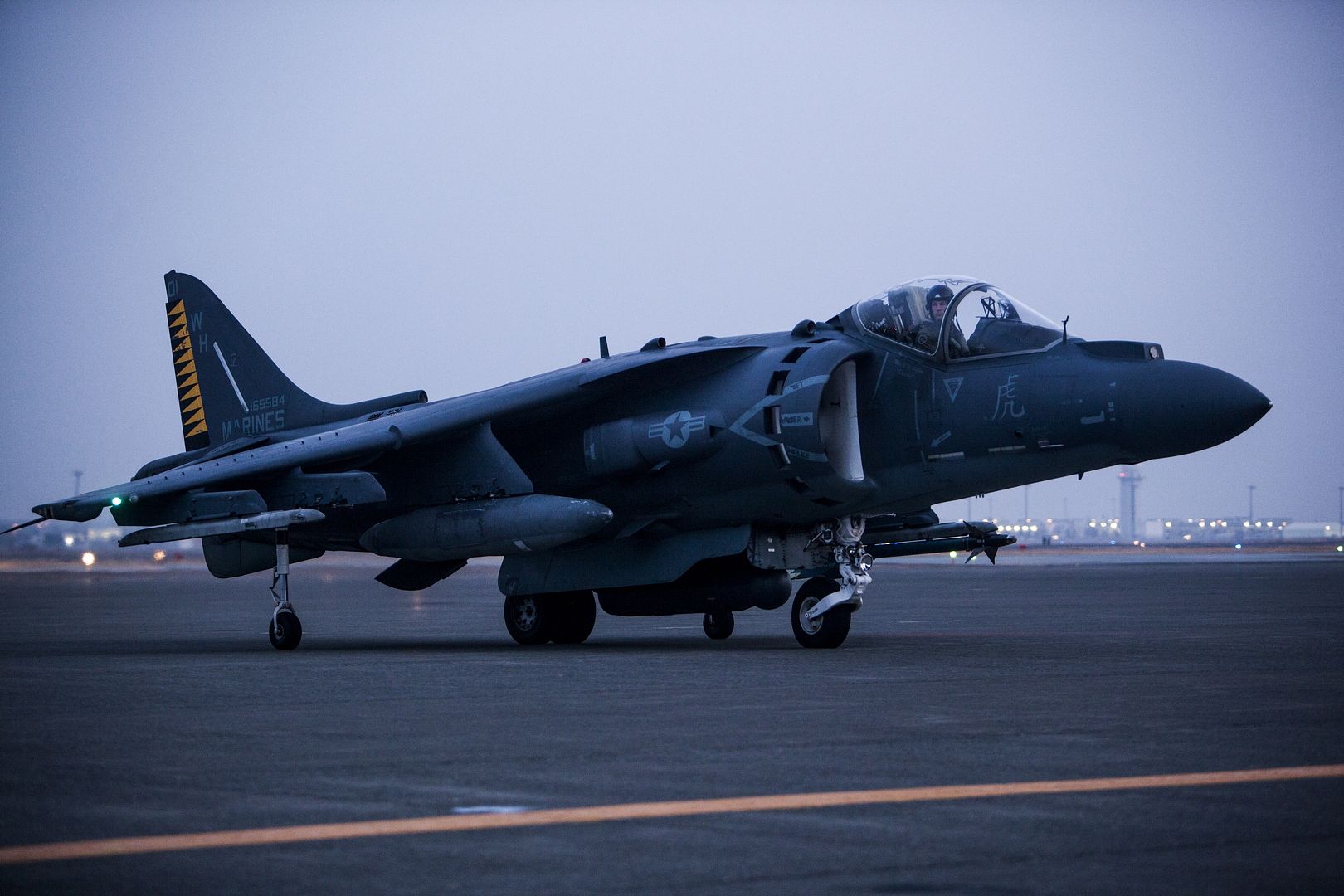
ANDERSEN AIR FORCE BASE, Guam --
Military members from the U.S. Air Force, Coast Guard and Navy, with international support from the Japan Air Self-Defense Force and Royal Australian Air Force are joining forces to airdrop and deliver donated toys, clothes, food items and other necessities to remote islands across the Pacific Ocean as part of Operation Christmas Drop 2016.
The annual training mission officially kicked off during a ceremony Dec. 6 at Andersen Air Force Base, Guam, where military leaders across the island pushed the first pallet of donated goods into a C-130 Hercules.
?I?m proud that Andersen is hosting Operation Christmas Drop,? said Brig. Gen. Douglas Cox, 36th Wing commander. ?I am happy to welcome our partners from Australia and Japan, it is wonderful to have you with us this holiday season.?
C-130s from the 36th Airlift Squadron, Yokota Air Base, Japan, Royal Australian Air Force, and Japan Air Self-Defense Force will be flying over the Pacific to airdrop goods to the islanders. More than 45 airmen are participating from both the RAAF and the JASDF.
Sixty-five years in the running, Christmas Drop is the Department of Defense?s longest-running humanitarian airlift operation. The tradition began during the Christmas season in 1952 when a B-29 Superfortress aircrew saw islanders waving at them from the island of Kapingamarangi, 3,500 miles southwest of Hawaii. In the spirit of Christmas the aircrew dropped a bundle of supplies attached to a parachute to the islanders below, giving the operation its name. This year brings together three nations, three corporate sponsors and three U.S. military branches. Today, air drop operations include more than 50 islands and thousands of people.
?It feels great to give back no matter what background you come from,? Capt. Aaron Bowens, 734th Air Mobility Squadron, Operation Christmas Drop organizer. ?It?s also a great training opportunity because everything we do now for the drops is useful in the real world.?
More than 11 months of planning and preparing went into Christmas drop, said Bowens. The Operation Christmas Drop volunteers at Andersen AFB and Yokota AB raised more than $52,000 from fundraisers and collected more than $20,000 in donated goods to aid in the humanitarian mission.
Military and civilian volunteers loaded 30,000 to 40,000 pounds of clothes, rice, fishhooks and other necessities into large-capacity boxes, before Airmen weighed and secured the boxes in preparation for delivery.
Twenty-two sorties are scheduled to be flown, covering more than 50 islands, where 140 boxes of donated goods will be dropped.
Even though military cargo aircraft are much louder than Santa?s sleigh, they are just as ready to bring joy to the island families.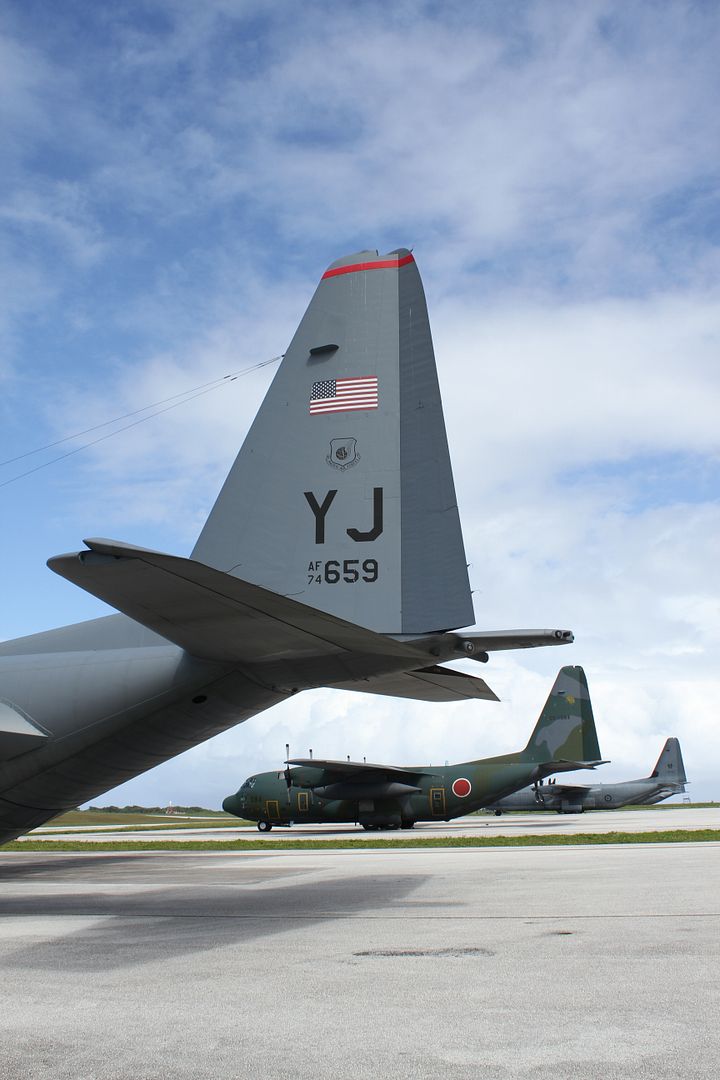
-
 Main AdminMEDITERRANEAN SEA (Dec. 5, 2016) An AV-8B Harrier, from the 22nd Marine Expeditionary Unit (MEU), takes off from the amphibious assault ship USS Wasp (LHD 1). The 22nd MEU, embarked on Wasp, is conducting precision air strikes in support of the Libyan Government aligned forces against Daesh targets in Sirte, Libya, as part of Operation Odyssey Lightning. (U.S. Navy photo by Petty Officer 2nd Class Nathan Wilkes/Released)
Main AdminMEDITERRANEAN SEA (Dec. 5, 2016) An AV-8B Harrier, from the 22nd Marine Expeditionary Unit (MEU), takes off from the amphibious assault ship USS Wasp (LHD 1). The 22nd MEU, embarked on Wasp, is conducting precision air strikes in support of the Libyan Government aligned forces against Daesh targets in Sirte, Libya, as part of Operation Odyssey Lightning. (U.S. Navy photo by Petty Officer 2nd Class Nathan Wilkes/Released)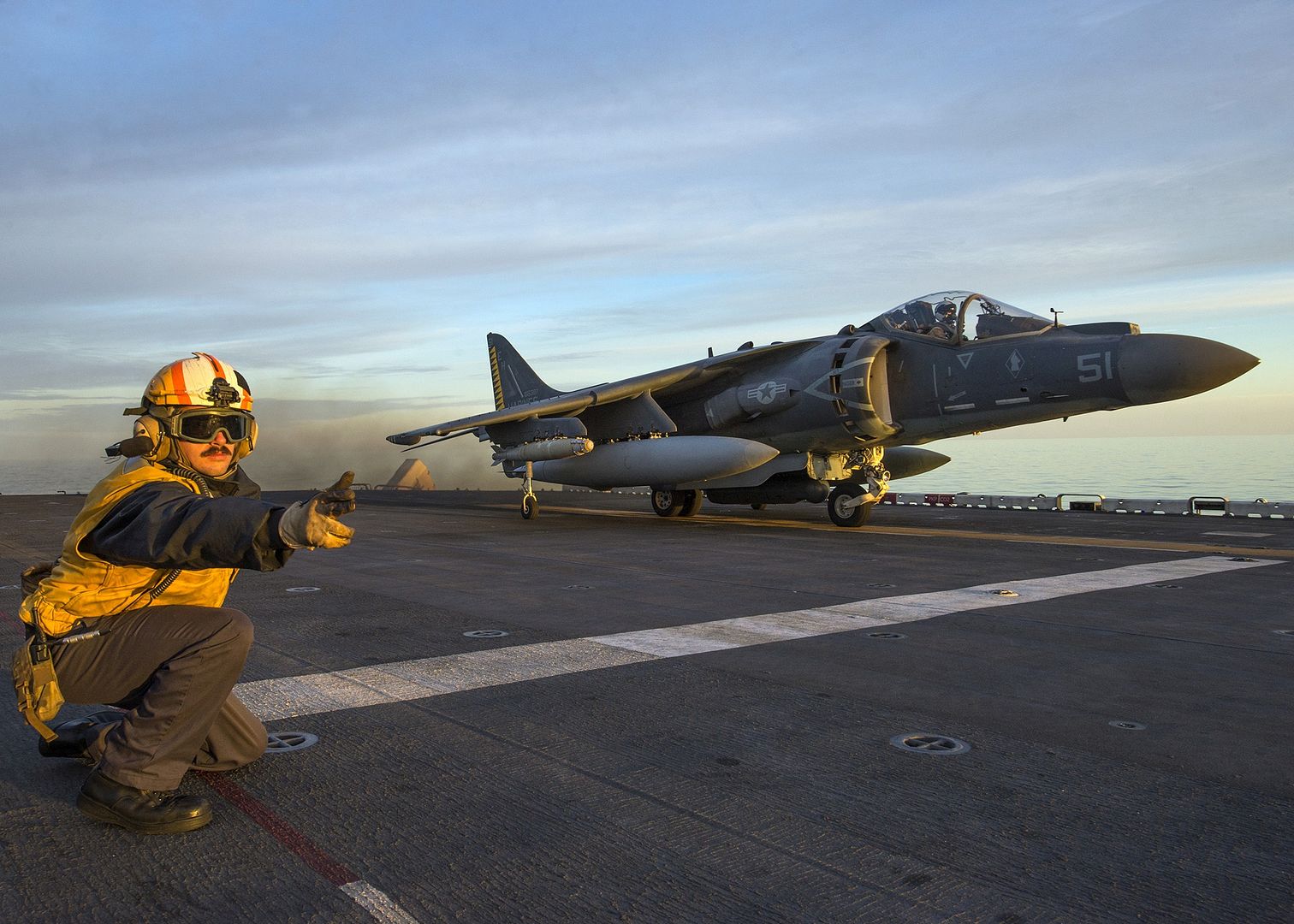
MEDITERRANEAN SEA (Dec. 5, 2016) An F/A-18F Super Hornet assigned to the Fighting Swordsmen of Strike Fighter Squadron (VFA) 32 makes an arrested landing on the flight deck of the aircraft carrier USS Dwight D. Eisenhower (CVN 69) (Ike). Ike, currently deployed as part of the Eisenhower Carrier Strike Group, is conducting naval operations in the U.S. 6th Fleet area of operations in support of U.S. national security interests in Europe. (U.S. Navy photo by Petty Officer 3rd Class Nathan T. Beard)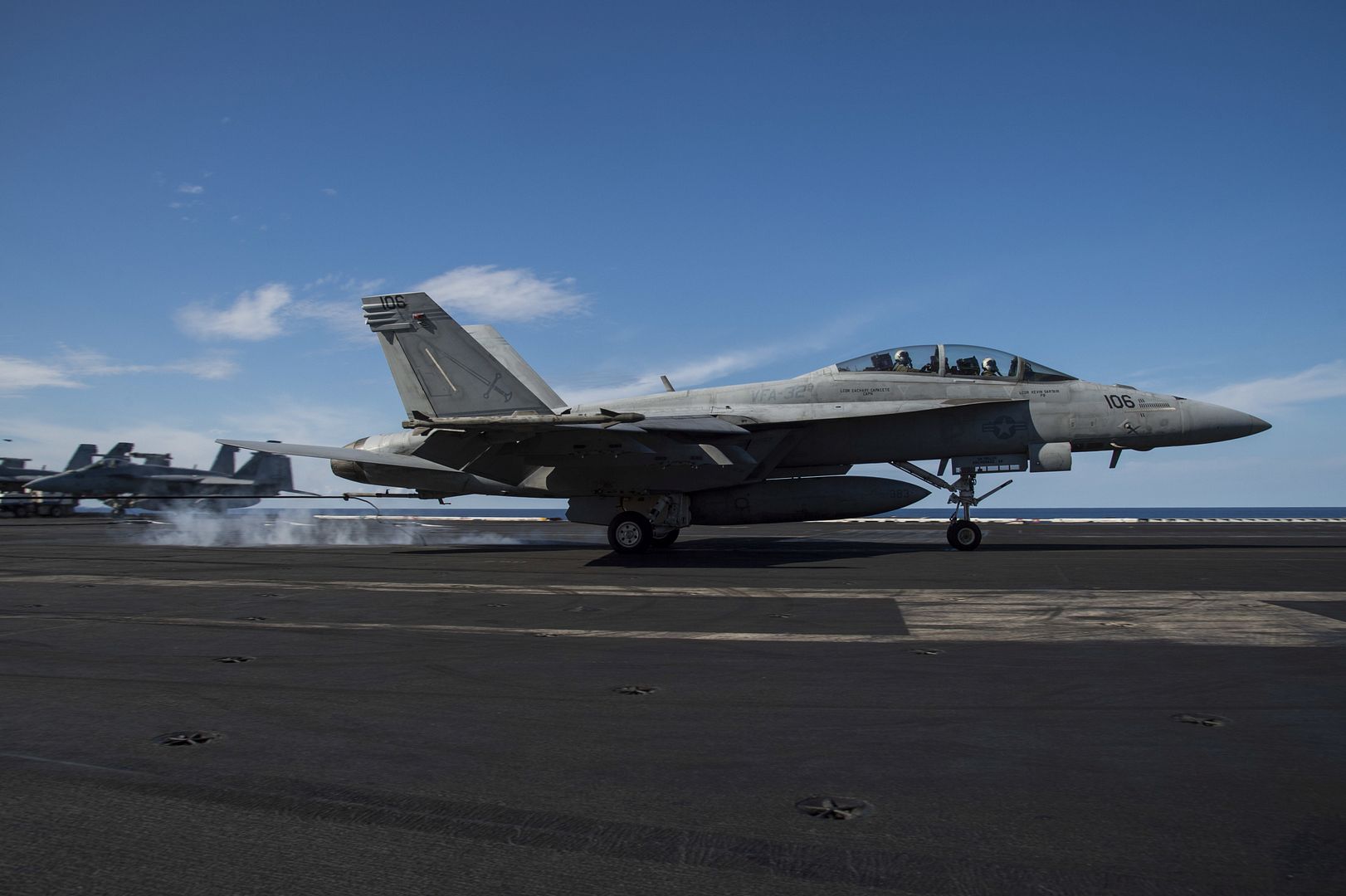
MEDITERRANEAN SEA (Dec. 5, 2016) An EA-18G Growler assigned to the Zappers of Electronic Attack Squadron (VAQ) 130 prepares to launch from the flight deck of the aircraft carrier USS Dwight D. Eisenhower (CVN 69) (Ike). Ike, currently deployed as part of the Eisenhower Carrier Strike Group, is conducting naval operations in the U.S. 6th Fleet area of operations in support of U.S. national security interests in Europe. (U.S. Navy photo by Petty Officer 3rd Class Nathan T. Beard)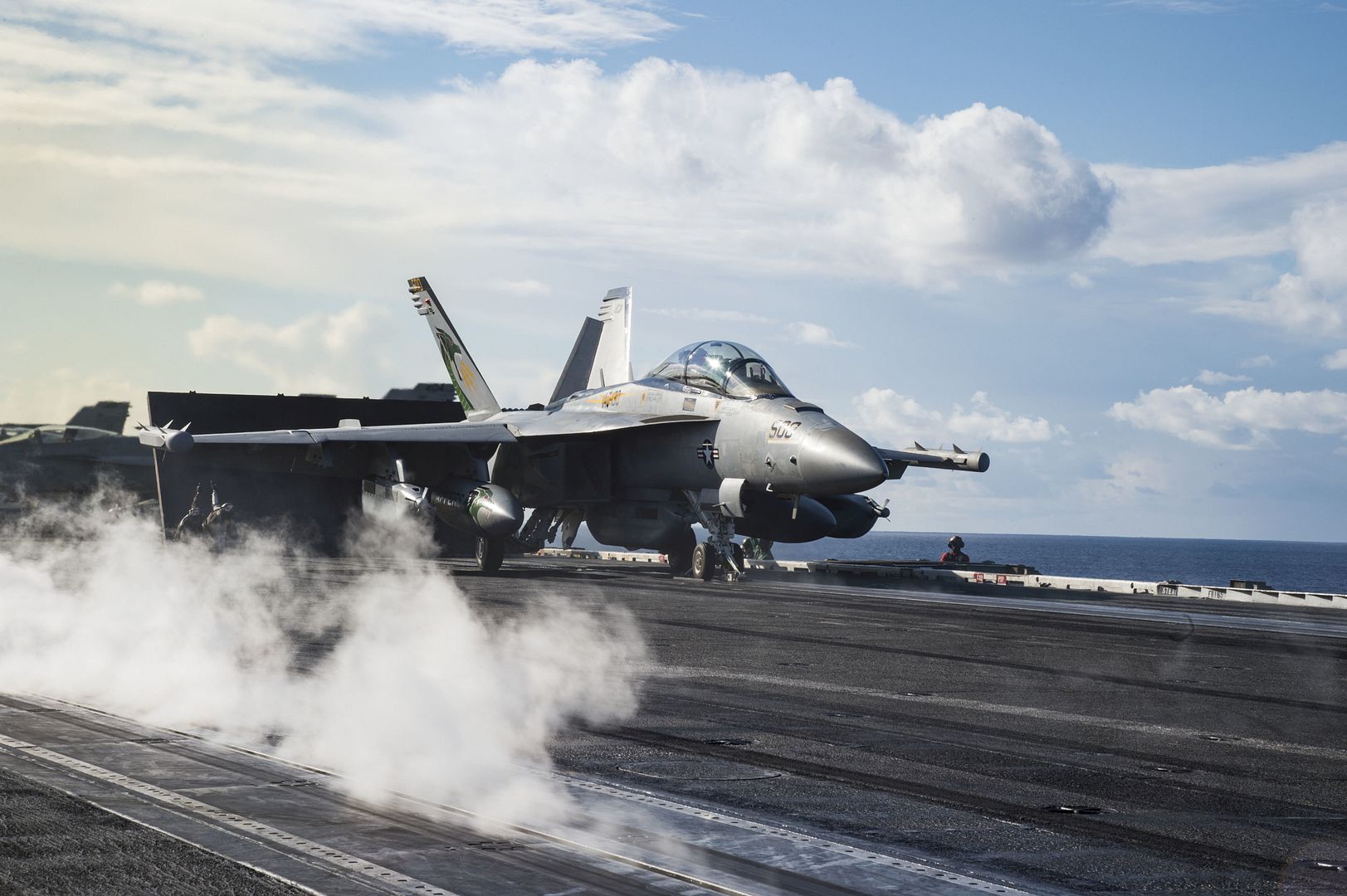
MARINE CORPS BASE HAWAII ? A Gulf Stream IV aircraft from Fleet Logistics Support Squadron 51, ?Windjammers,? is on display at Hangar 105 aboard Marine Corps Air Station Kaneohe Bay, Marine Corps Base Hawaii on December 5, 2016. Vice Adm. Luke McCollum, the chief of the Navy Reserve, Naval Reserve Force, visited VR-51, was provided a tour of a Gulf Stream IV aircraft, which is used by VR-51, and had a guided discussion with the base?s sailors. As the commander of the Navy Reserve Force, McCollum leads approximately 60,000 reserve component personnel who support the armed forces and joint-service operations, and the purpose of his visit was to get to know some of the men and women under his charge. (U.S. Marine Corps photo by Cpl. Jesus Sepulveda Torres)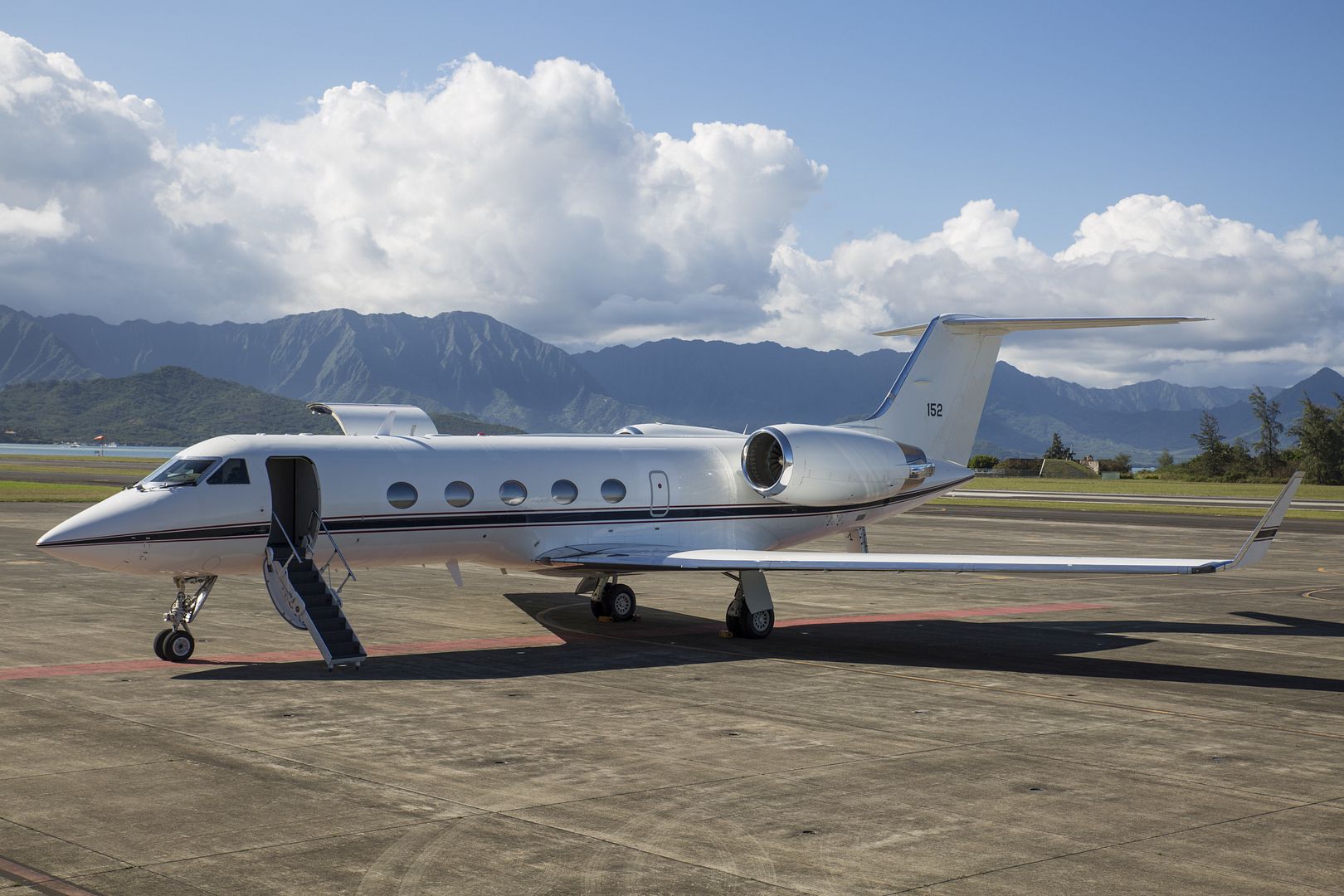
MEDITERRANEAN SEA (Dec. 6, 2016) Aircraft carrier USS Dwight D. Eisenhower (CVN 69) transits the Mediterranean Sea alongside aircraft carrier FS Charles de Gaulle (R91). Eisenhower, currently deployed as part of the Eisenhower Carrier Strike Group, is conducting naval operations in the U.S. 6th Fleet area of operations in support of U.S. national security interests in Europe. (U.S. Navy photo by Petty Officer 1st Class Rafael Martie/Released)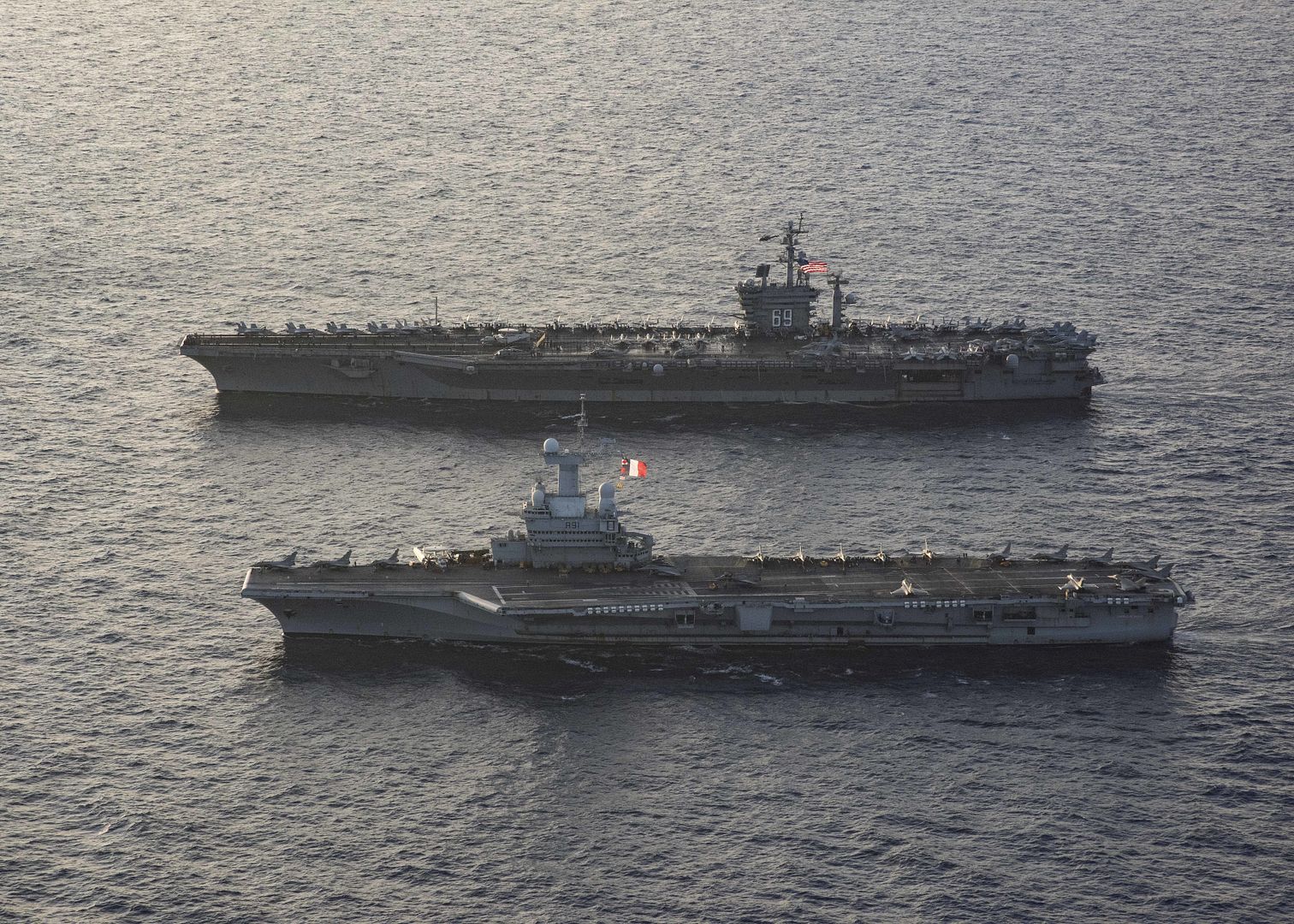
MEDITERRANEAN SEA (Dec. 6, 2016) An F/A-18E Super Hornet assigned to the Sidewinders of Strike Fighter Squadron (VFA) 86 prepares to launch from the flight deck of the aircraft carrier USS Dwight D. Eisenhower (CVN 69) in support of Operation Inherent Resolve (OIR). Eisenhower, currently deployed as part of the Eisenhower Carrier Strike Group, is conducting naval operations in the U.S. 6th Fleet area of operations in support of U.S. national security interests in Europe. (U.S. Navy photo by Petty Officer 3rd Class Nathan T. Beard/Released)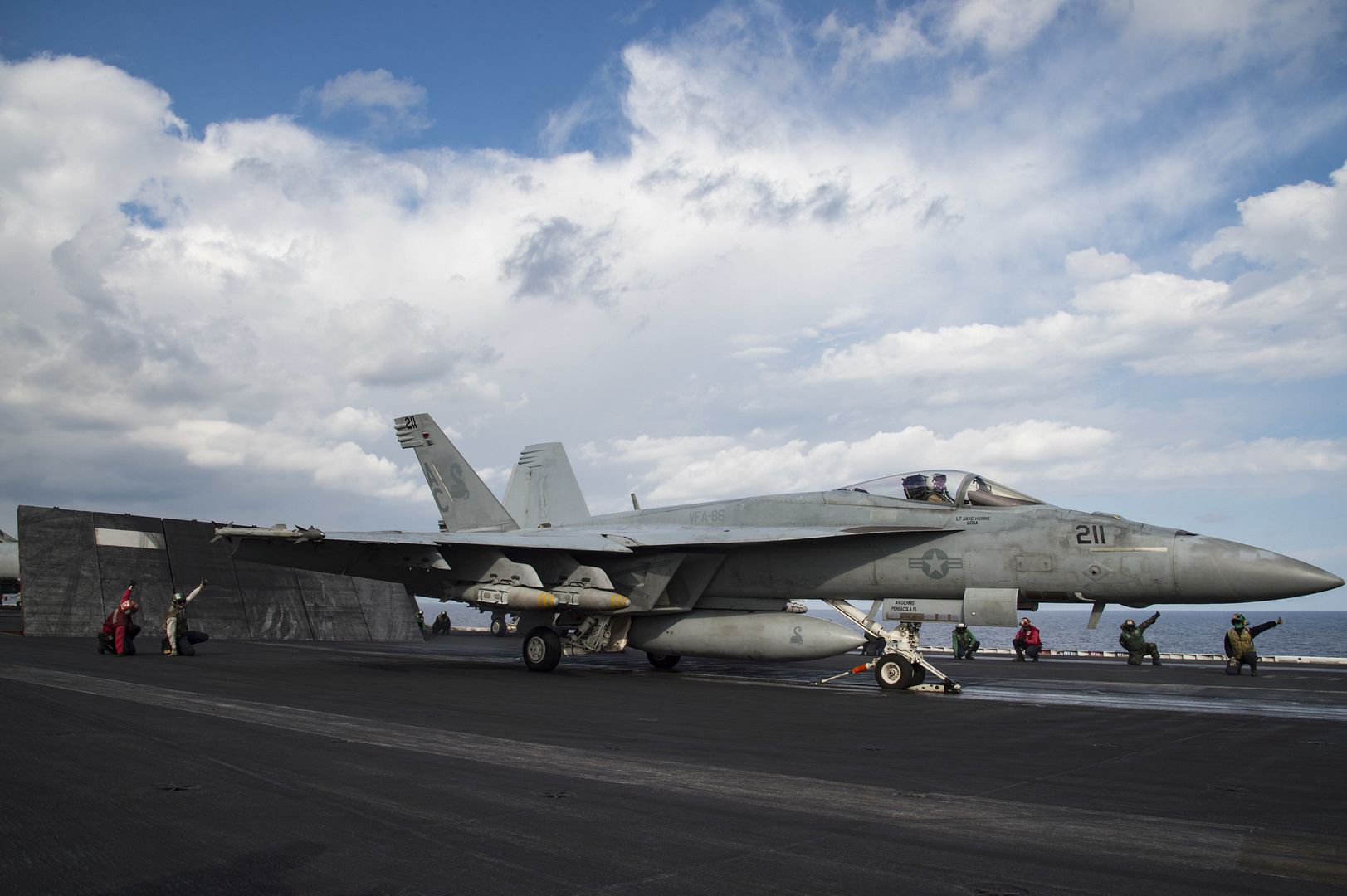
MEDITERRANEAN SEA (Dec. 6, 2016) An F/A-18C Hornet assigned to the Wildcats of Strike Fighter Squadron (VFA) 131 launches from the flight deck of the aircraft carrier USS Dwight D. Eisenhower (CVN 69) in support of Operation Inherent Resolve (OIR). Eisenhower, currently deployed as part of the Eisenhower Carrier Strike Group, is conducting naval operations in the U.S. 6th Fleet area of operations in support of U.S. national security interests in Europe. (U.S. Navy photo by Petty Officer 3rd Class Nathan T. Beard/Released)
DUBAI, United Arab Emirates, Dec. 6, 2016 /PRNewswire/ -- Boeing [NYSE:BA] Business Jets announced today it will work with GKN Aerospace's Fokker business to develop, produce, offer and support the Skyview Panoramic Window, the largest window available on any passenger jet offered today.
The window will be available as a feature on the BBJ, BBJ 2, and all three members of the BBJ MAX family ? including the new BBJ MAX 7 ? with scheduled entry-into-service in 2018.
"We are thrilled to formally confirm our partnership with GKN Aerospace's Fokker business for the development of this fantastic feature on the BBJ, the largest airplane window available in the market," said Boeing Business Jets President David Longridge.
The Skyview Panoramic Window, measuring approximately 4.5 feet by 1.5 foot (1.4 x 0.5 m), is created by effectively joining three existing 737 windows together. Situated aft of the wing with multiple potential locations based on the airplane type, it offers customers an unparalleled perspective of the world.
"We are proud to announce the next step for the Skyview Panoramic window together with Boeing Business Jets," said Peter Somers, President of GKN's Fokker Services business. "The innovative technology applied in the largest window in the market, enhances passenger comfort and is now also available for BBJ MAX airplanes."
The window will be available through GKN Aerospace's Fokker business as a retrofit on existing BBJs, and through Boeing Business Jets as a priced feature. It will be delivered on BBJ MAX airplanes starting in 2018.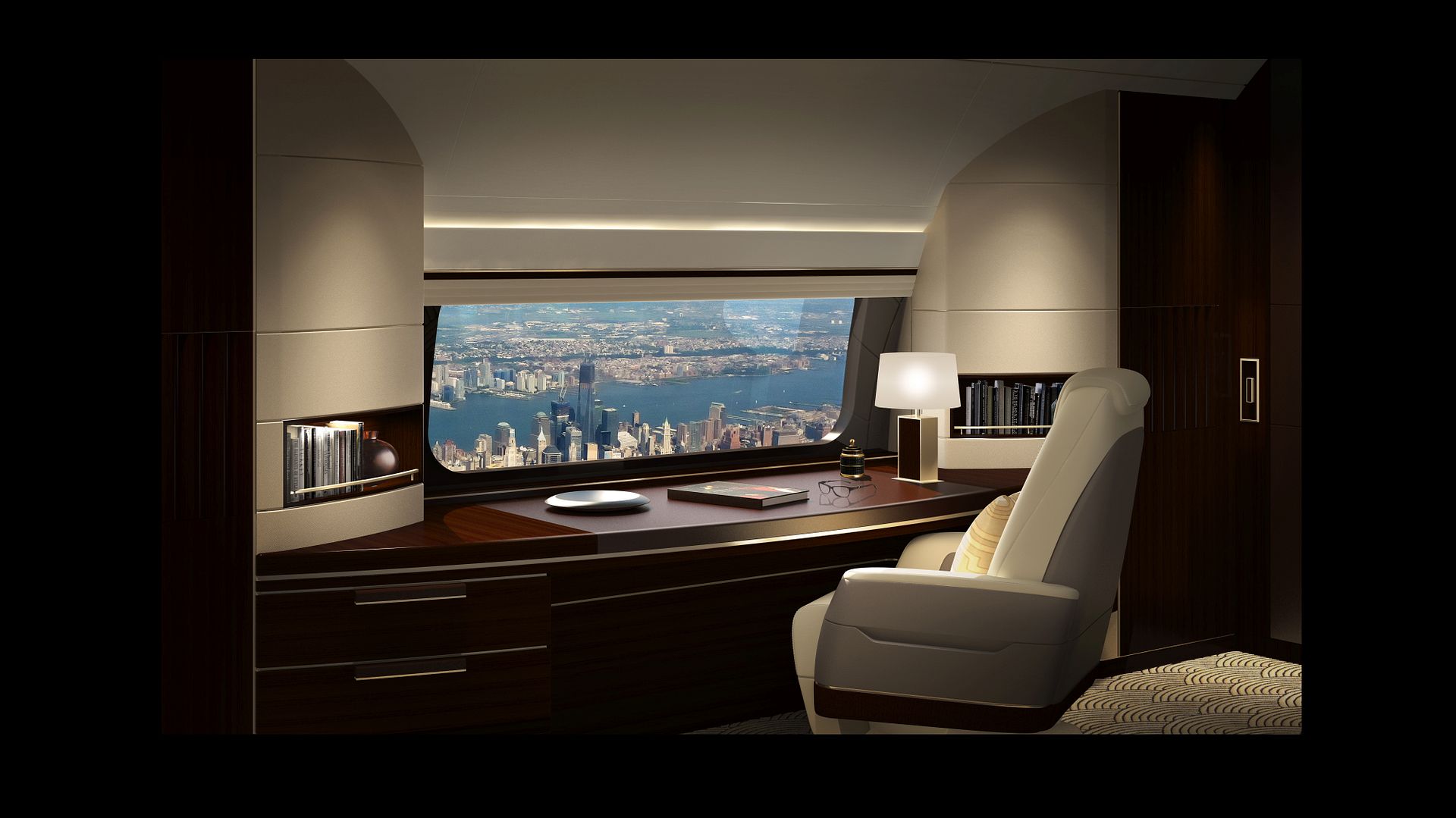
Dubai, UAE, December 6th, 2016 -Middle East Airlines (MEA) confirmed today at the Middle East and North Africa Business Aviation (MEBAA) show in Dubai the purchase of a second Embraer Legacy500 business jet for its private-jet affiliate, Cedar Executive. The second aircraft is expected to enter into service in mid-2017
Cedar Executive is based at Rafic Hariri International Airport ? Beirut. The company started operations with a brand-new Legacy 500 that was delivered in January 2016. Cedar Executive offers private-jet charter travel services for its customers along with FBO services including maintenance, hangarage and facilities for general aviation aircraft.
?Cedar Executive has exceeded their customers? expectation with a high end premium service in their very first year of operation. It is a pleasure to be part of this accomplishment by supplying the aircraft that combines the comfort, technology and performance desired for the ultimate travel experience?, said Marco Tulio Pellegrini, President and CEO, Embraer Executive Jets. We are committed to offer the best customer service to support this continuing Legacy 500 fleet growth.?
?Our aim at Cedar Executive is to provide our guests with nothing short of a world class and blissful experience. Our existing Legacy 500 has delivered that for our revered guests throughout the Middle East? said Fouad Fawaz Cedar Executive CEO.
?The addition of a further aircraft is testimony to both the quality of the service Cedar Executive?s guests experience, and the performance of these magnificent aircraft.?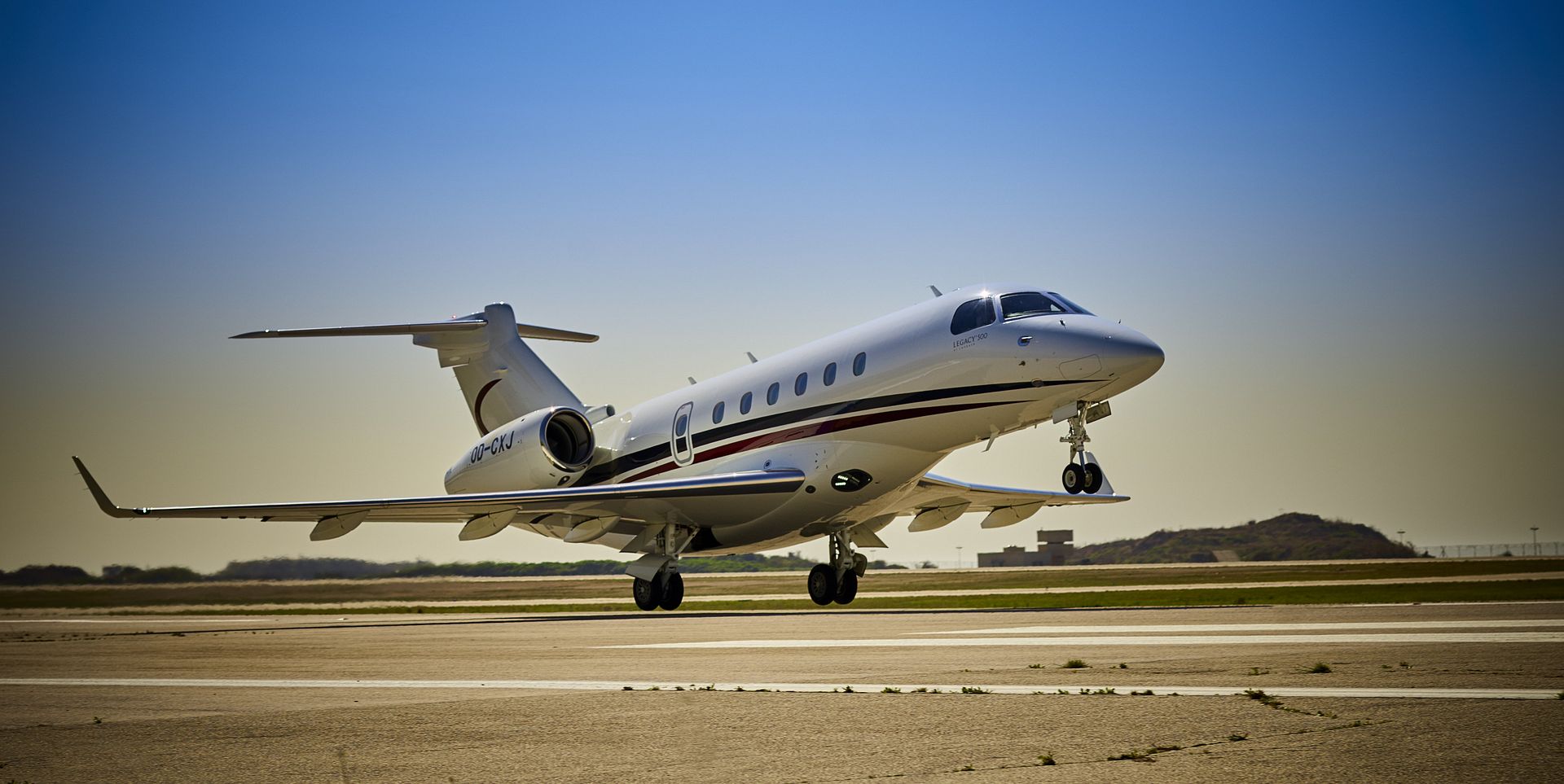
-
 Main AdminThe 199th Fighter Squadron, Hawai?i Air National Guard, and 19th Fighter Squadron, U.S. Air Force, form a Missing Man Flyover Formation during the 75th Anniversary National Pearl Harbor Remembrance Day Commemoration at Joint Base Pearl Harbor-Hickam, Hawaii, Dec. 7, 2016. The U.S. military, National Park Service, and State of Hawaii are jointly commemorating the 75th anniversary of the Dec. 7, 1941 attacks on Pearl Harbor and Oahu. (U.S. Air Force photo by Staff Sgt. Christopher Hubenthal)
Main AdminThe 199th Fighter Squadron, Hawai?i Air National Guard, and 19th Fighter Squadron, U.S. Air Force, form a Missing Man Flyover Formation during the 75th Anniversary National Pearl Harbor Remembrance Day Commemoration at Joint Base Pearl Harbor-Hickam, Hawaii, Dec. 7, 2016. The U.S. military, National Park Service, and State of Hawaii are jointly commemorating the 75th anniversary of the Dec. 7, 1941 attacks on Pearl Harbor and Oahu. (U.S. Air Force photo by Staff Sgt. Christopher Hubenthal)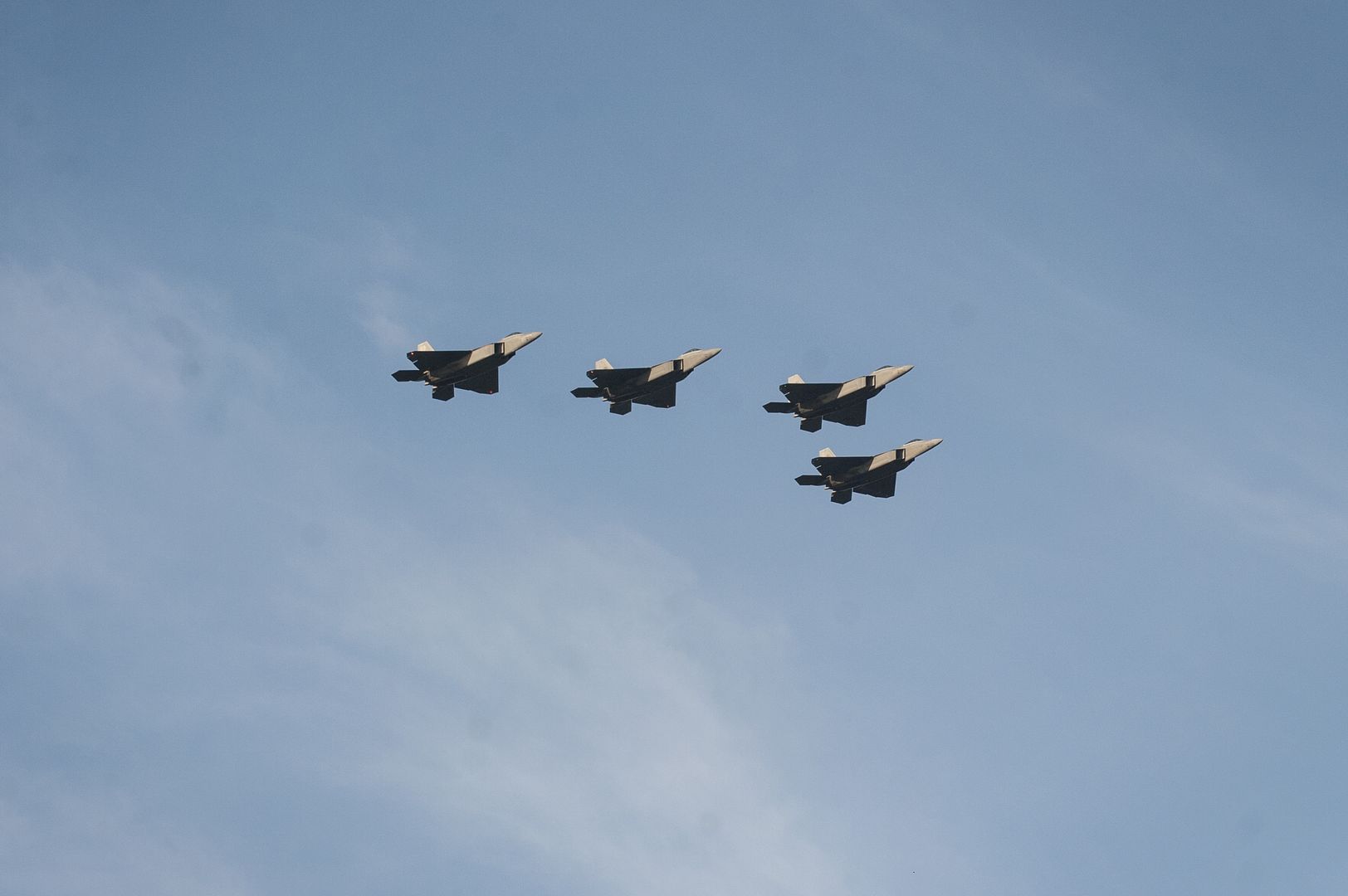
F-22 Raptors with 199th Fighter Squadron, Hawaii Air National Guard and 19th Fighter Squadron, U.S. Air Force, conduct a missing man flyover formation during the 75th National Harbor Remembrance Day Commemoration Ceremony at Joint Base Pearl Harbor-Hickam, Hawaii, Dec. 7, 2016. The U.S. military and the State of Hawaii are hosting a series of remembrance events to honor the courage and sacrifices of the Pacific Theater veterans. (U.S. Marine Corps photo by Lance Cpl. Miguel A. Rosales)
A Japan Air Self Defense Force F-15 is pulled onto the flight line during the Aviation Relocation Training Program at Chitose Air Base, Japan, Dec. 7, 2016. JASDF and U.S. Marine Corps aircraft fly daily as part of the ATR. The ATR is an effort to increase operational readiness between the U.S. Marine Corps and the Japan Air Self Defense Force, improve interoperability and reduce noise concerns of aviation training on local communities by disseminating training locations throughout Japan. (U.S. Marine Corps photo by Cpl. James A. Guillory)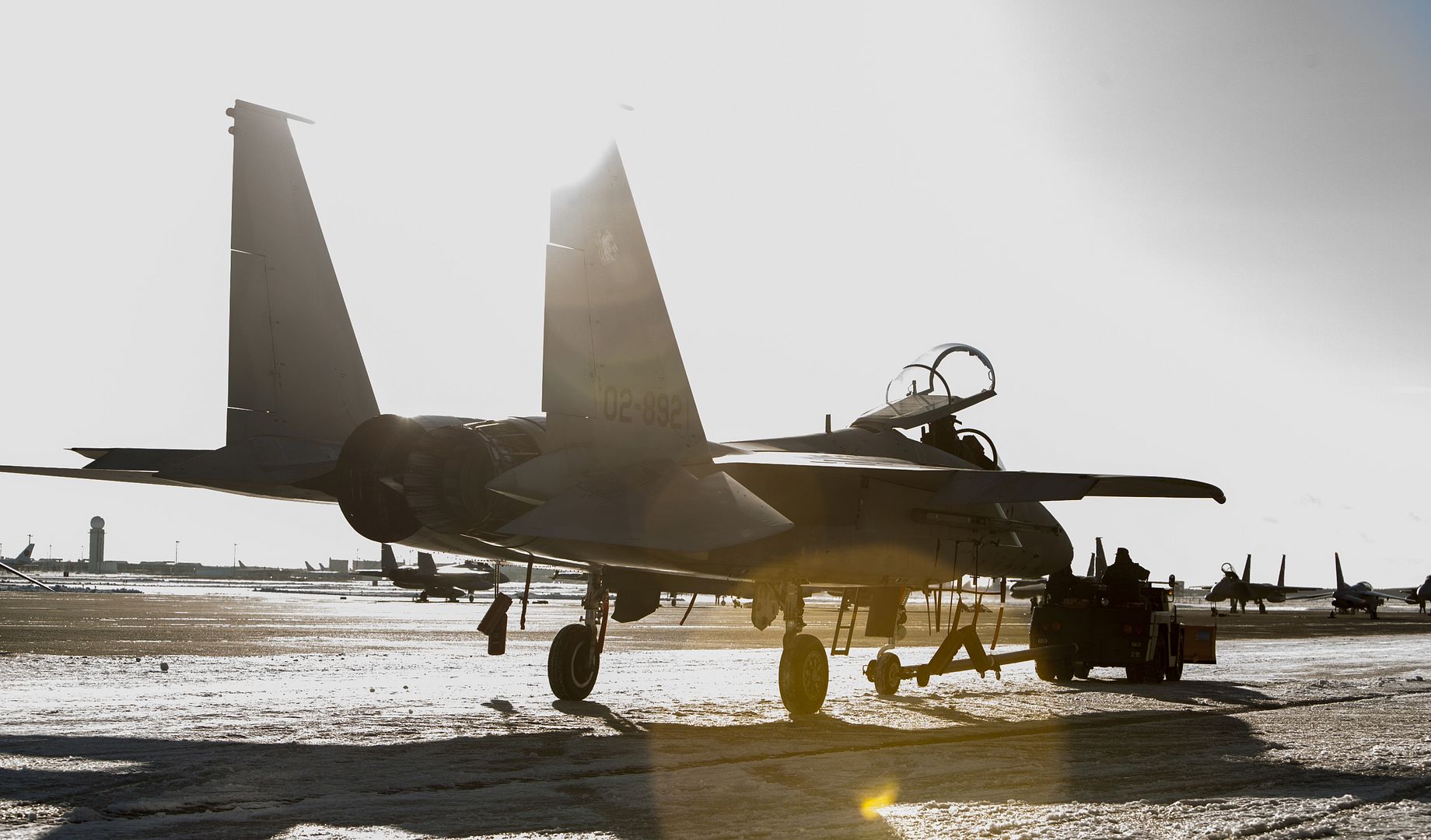
A U.S. Marine Corps AV-8B Harrier with Marine Attack Squadron (VMA) 542 waits on the flight line before a routine inspection during the Aviation Training Relocation Program at Chitose Air Base, Japan, Dec. 7, 2016. VMA-542 is conducting training with their harriers at Chitose Air Base in an effort to increase operational readiness between the U.S. Marine Corps and the Japan Air Self Defense Force, improve interoperability and reduce noise concerns of aviation training on local communities by disseminating training locations throughout Japan. (U.S. Marine Corps photo by Lance Cpl. Joseph Abrego)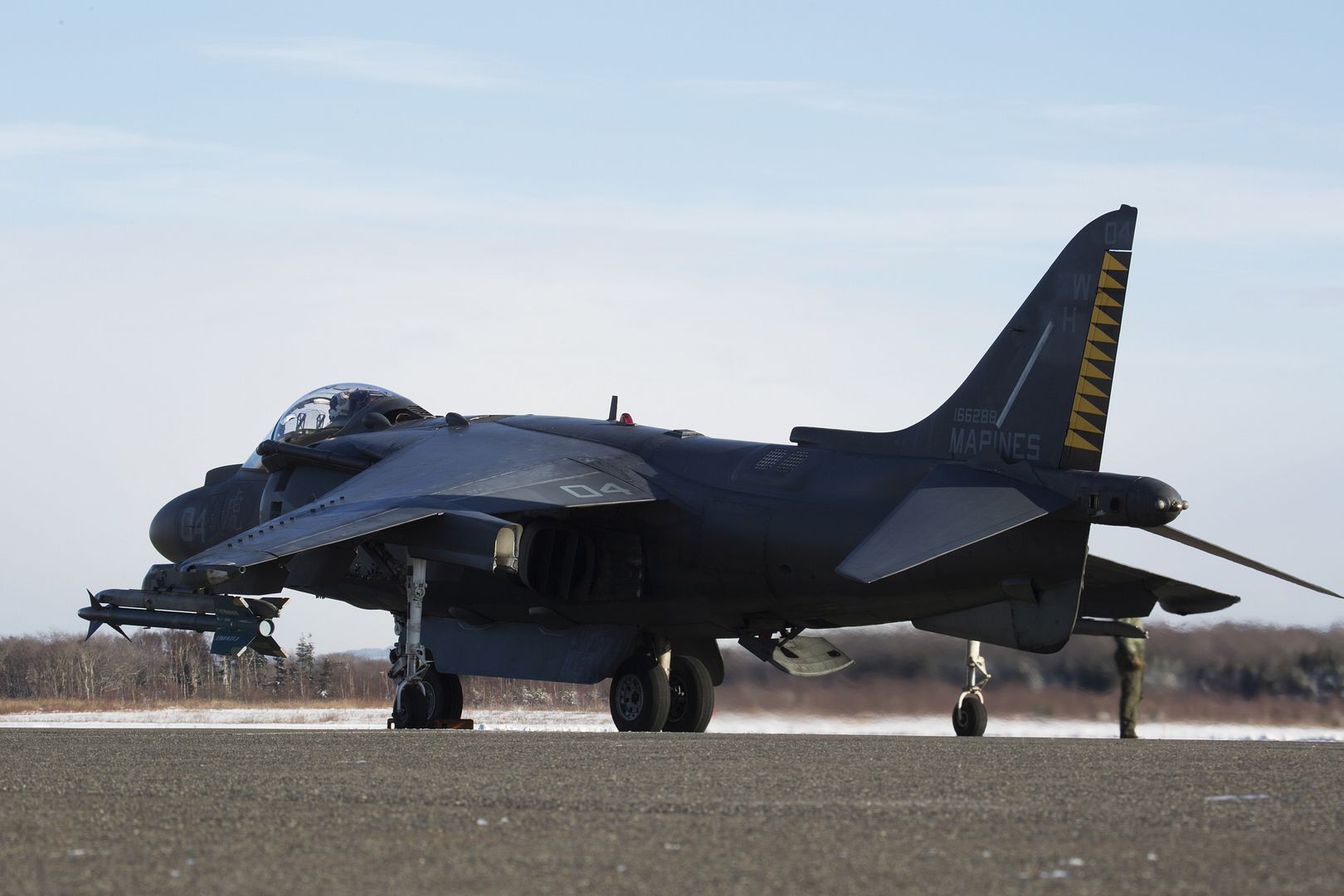
A U.S. Marine Corps AV-8B Harrier with Marine Attack Squadron (VMA) 542 taxis down the runway at Chitose Air Base, Japan, Dec. 8, 2016. Four of VMA-542?s Harriers are conducting flight training daily out of Chitose as part of the Aviation Training Relocation Program. The ATR is an effort to increase operational readiness between the U.S. Marine Corps and the Japan Air Self Defense Force, improve interoperability and reduce noise concerns of aviation training on local communities by disseminating training locations throughout Japan. (U.S. Marine Corps photo by Lance Cpl. Joseph Abrego)
A U.S. Marine Corps AV-8B Harrier with Marine Attack Squadron (VMA) 542 touches down on the runway at Chitose Air Base, Japan, Dec. 8, 2016. Four of VMA-542?s Harriers are conducting daily flight training out of Chitose as part of the Aviation Training Relocation Program. The ATR is an effort to increase operational readiness between the U.S. Marine Corps and the Japan Air Self Defense Force, improve interoperability and reduce noise concerns of aviation training on local communities by disseminating training locations throughout Japan. (U.S. Marine Corps photo by Lance Cpl. Joseph Abrego)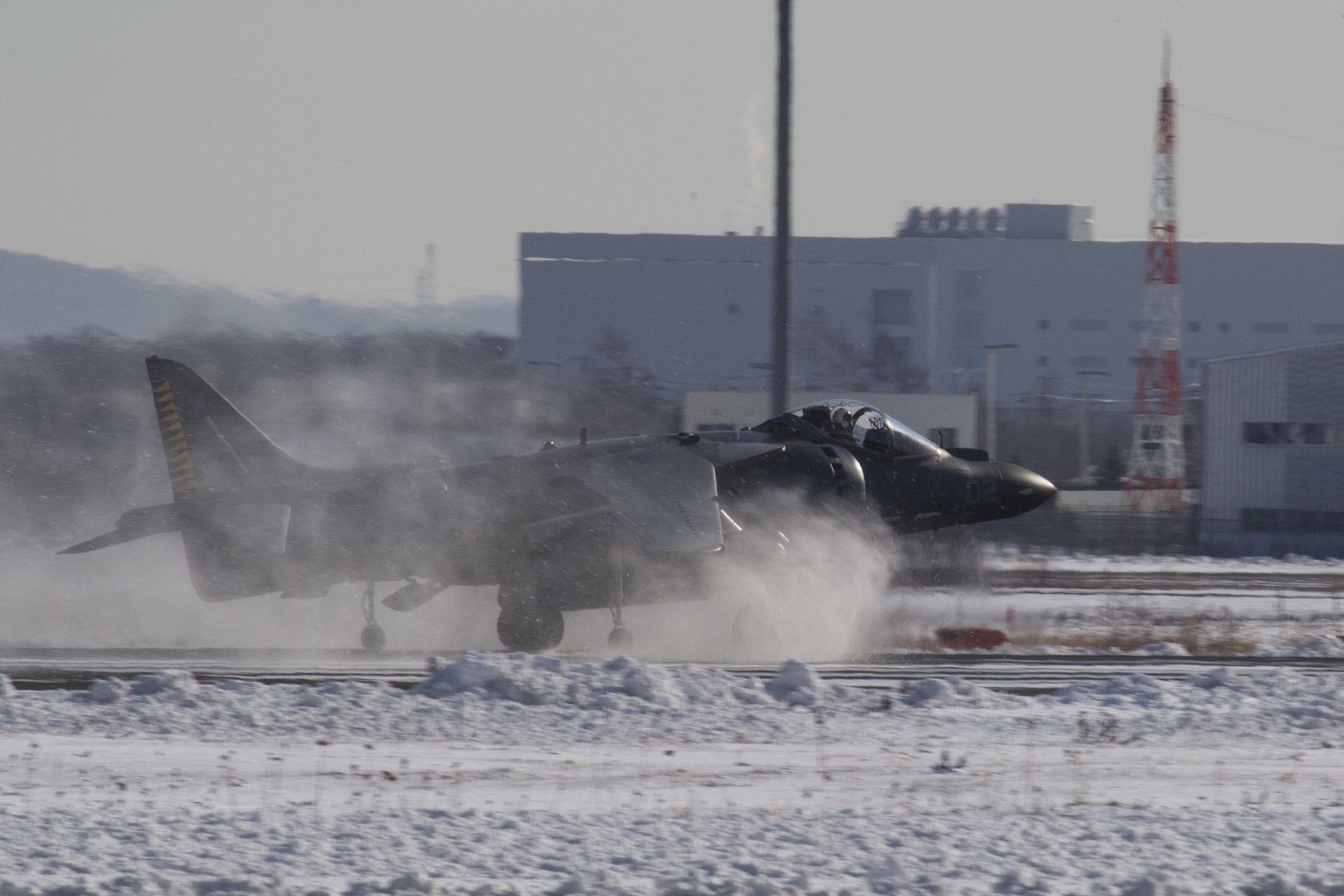
EDWARDS AIR FORCE BASE, Calif. --
All three variants of the F-35 Joint Strike Fighter are being used by the 461st Flight Test Squadron in recent multi-ship testing, which employs four or six jets to ensure communication systems between the planes are working properly and accurately.
The F-35 contains state-of-the-art tactical data links that provide the secure sharing of data among its flight members as well as other airborne, surface and ground-based platforms required to perform assigned missions.
?One of the primary reasons we do multi-ship testing is to ensure data is shared appropriately between aircraft in order to maximize lethality and survivability,? said Maj. Raven LeClair, 461 FLTS, F-35 test pilot. ?The F-35 uses [Multifunction Advanced Data Link] to share information on air and ground threats in order to more effectively target. This is especially applicable to one of the F-35?s primary missions - finding and killing advanced surface-to-air missile systems.?
The MADL is a high-data-rate, directional communications link that allows secure transmission of coordinated tactics and engagement for the fifth-generation fighter when operating in high-threat environments.
LeClair said his squadron is specifically testing the ability to find SAM systems using a capability called Enhanced Geo Location.
?After the threat is accurately located, it can be jammed and targeted.?
He added that the MADL architecture is divided into flight groups so it is important to test the capability to pass data between flight groups using four or six aircraft to ensure system accuracy, stability and usability during large force exercises and actual combat.
According to the Air Force, the F-35 has unprecedented situational awareness. The F-35?s advanced sensor package is designed to gather, fuse and distribute more information than any fighter in history, which gives pilots a decisive advantage over all adversaries.
?Having a common battlefield picture is one of the greatest assets in combat,? LeClair said. ?This capability must be proven to be secure and ensure maximum interoperability between 4th- and 5th-generation fighters. The F-35 has an incredible capability to show the entire tactical picture and being able to share this tactical picture with all forces is critical to maximizing lethality, survivability and minimizing the risk of fratricide.?
The F-35 is designed to replace aging fighter inventories including U.S. Air Force F-16s and A-10s, U.S. Navy F/A-18s, U.S. Marine Corps AV-8B Harriers and F/A-18s, and U.K. Harrier GR.7s and Sea Harriers.
The 461st FLTS and Joint Strike Fighter Combined Test Force at Edwards conducts developmental test and evaluation of the F-35 with all three variants ? the A, B and C models. Developmental test and evaluation will make way for future operational tests.
?As we approach the end of System Development and Demonstration phase, many of our capstone testing events will be multi-ship to ensure compliance with the requirements before transitioning to operational testing,? said LeClair.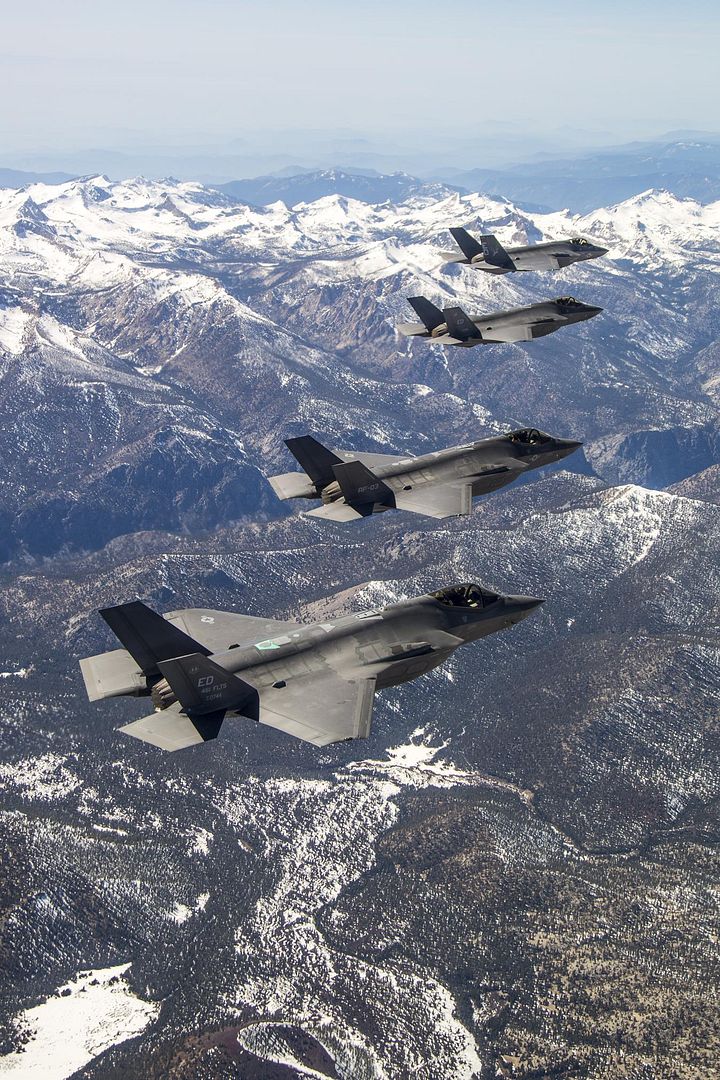
STRATFORD, Conn., Dec. 7, 2016 /PRNewswire/ -- Sikorsky, a Lockheed Martin company (NYSE:LMT) has successfully concluded contract negotiations with the Chilean Air Force (Fuerza A?rea de Chile) for six S-70i? Black Hawk helicopters for the service's medium-lift helicopter recapitalization program.
Sikorsky, a Lockheed Martin company, has successfully concluded contract negotiations with the Chilean Air Force (Fuerza Aerea de Chile) for six S-70i(TM) Black Hawk helicopters for the service's medium-lift helicopter recapitalization program.
When delivered in 2018, the new helicopters will fulfill Chile's requirement to perform both military and humanitarian missions, such as troop transport, search and rescue, and disaster relief.
"We are very pleased that the Fuerza A?rea de Chile has chosen the multirole Black Hawk helicopter following an intensive review of competing platforms," said Adam Schierholz, Sikorsky regional executive for Latin America. "The Black Hawk platform will perform for Chile as a highly reliable and safe utility helicopter that can be quickly configured for a range of missions."
The program includes the acquisition of a logistical support package that will cover spare parts, pilots and maintenance specialists training, on-site technical assistance and ground support equipment.
Built to a robust military design, the Black Hawk family of helicopters is renowned for its reliability in harsh weather and under tough operational conditions, including at high altitudes and in hot temperatures. For rapid and distant deployment, Black Hawk helicopters can be transported in the C-130 Hercules aircraft that are also operated by the Fuerza A?rea de Chile.
The Fuerza A?rea de Chile announced its decision in August to procure the six S-70i helicopters from Sikorsky as a direct commercial sale. The service has operated one S-70A Black Hawk aircraft since 1998.
The six new aircraft will bring the total number of Black Hawk helicopters operated by Chile and four other Latin American countries to more than 140.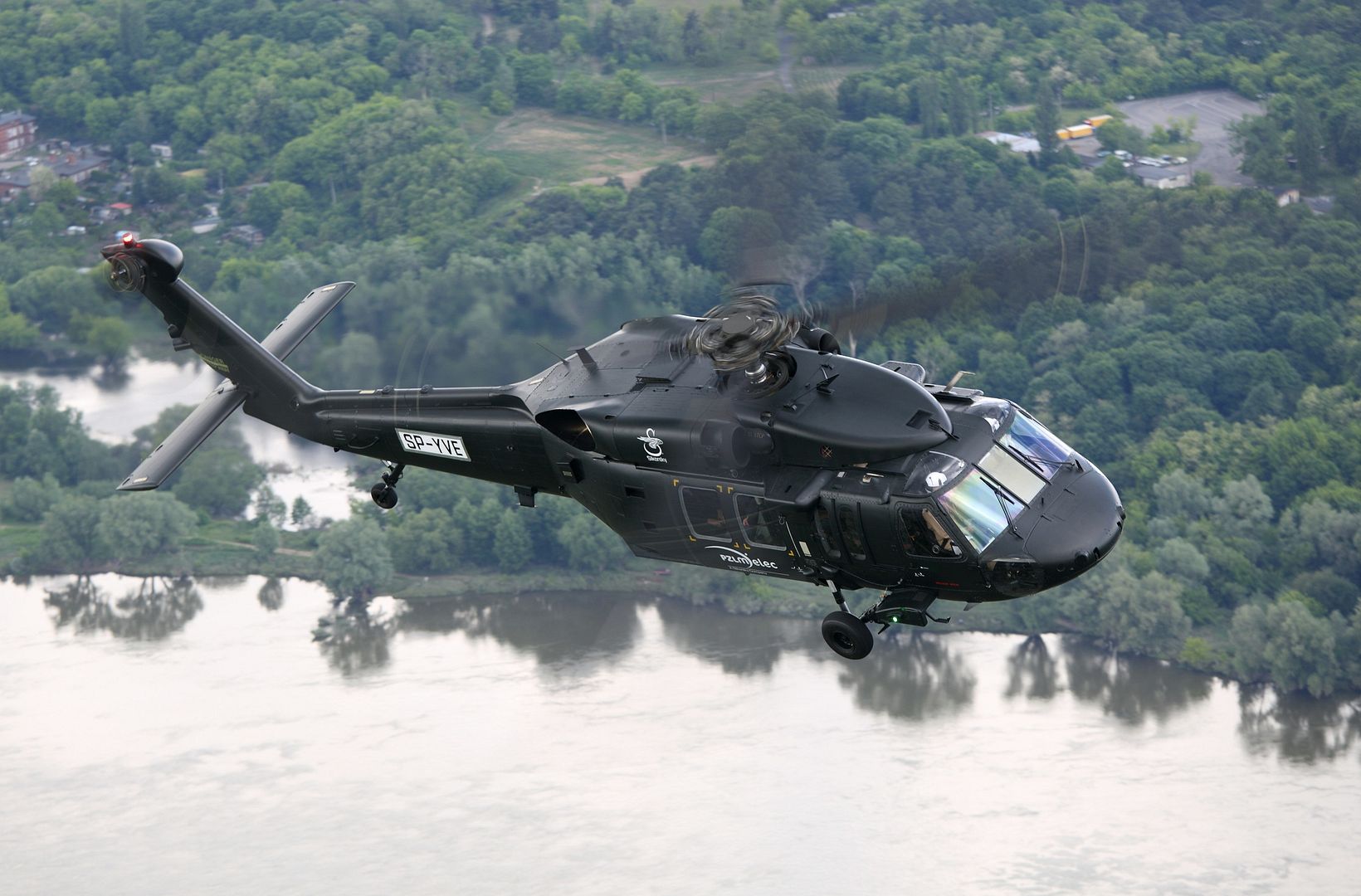
-
 Main AdminA U.S. Air Force F-16 Fighting Falcon, assigned to the 134th Fighter Squadron, 158th Fighter Wing, Vermont National Guard, takes off at the Burlington International Airport, South Burlington, Vt., Dec. 8, 2016. Airmen from the 158th and a squadron of F-16s from the 134th are deploying in support of Operation Inherent Resolve. (U.S. Air National Guard photo by Tech. Sgt. Sarah Mattison
Main AdminA U.S. Air Force F-16 Fighting Falcon, assigned to the 134th Fighter Squadron, 158th Fighter Wing, Vermont National Guard, takes off at the Burlington International Airport, South Burlington, Vt., Dec. 8, 2016. Airmen from the 158th and a squadron of F-16s from the 134th are deploying in support of Operation Inherent Resolve. (U.S. Air National Guard photo by Tech. Sgt. Sarah Mattison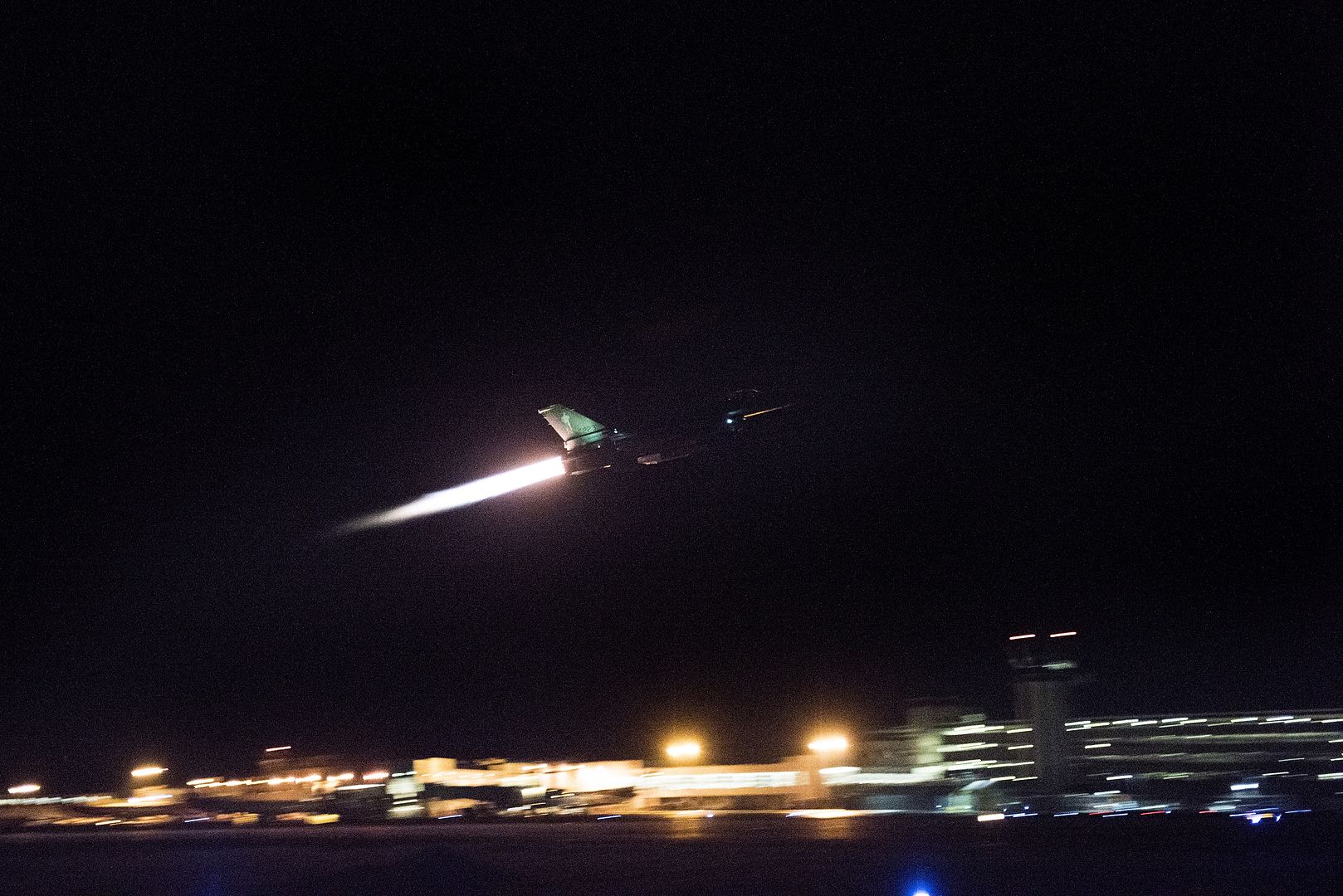
SAN DIEGO (Dec. 8, 2016) ? The Navy's most technologically advanced surface ship, USS Zumwalt (DDG 1000), steams through San Diego Bay after the final leg of her three-month journey en route to her new homeport in San Diego. Zumwalt will now begin installation of combat systems, testing and evaluation and operation integration with the fleet. (U.S. Navy Photo by Petty Officer 2nd Class Zachary Bell/Released)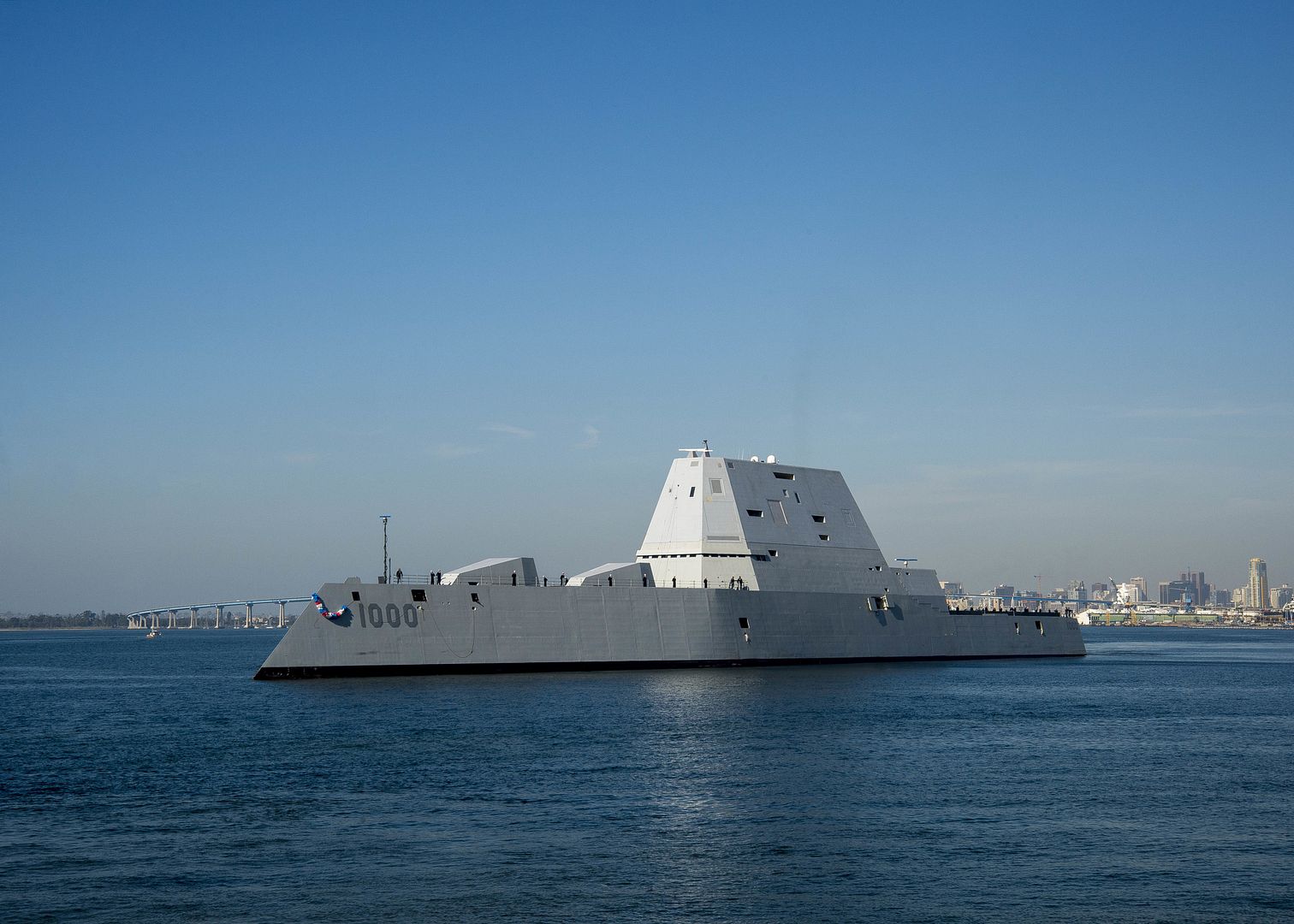
TYNDALL AIR FORCE BASE, Fla. -- The 66th Rescue Squadron sent three of its HH-60G Pave Hawks and 59 Airmen to participate in the large scale Checkered Flag 17-1 exercise at Tyndall AFB.
Checkered Flag 17-1, which runs Dec. 5-16, is an exercise that aims to improve the ability of multiple squadrons from around the country to come together into a large scale total force integration whose collective resources aid in response to unforeseen or unplanned operations.
?We are here to train with the E-3 Sentry and fighters so that we are all better prepared for any future scenarios,? said Capt. Andrew King, 66th Rescue Squadron mission director of operations. ?It is not often that we have the opportunity to train with this many different aircraft in this environment.?
The mission of the 66th RQS is to provide rapidly deployable, expeditionary and agile combat search and rescue forces to the battlefield in response to contingency operations worldwide. The unit is a fully operational squadron from Nellis Air Force Base, Nevada, and conducts peacetime search and rescue in support of the National
Search and Rescue Plan and the Air Warfare Center.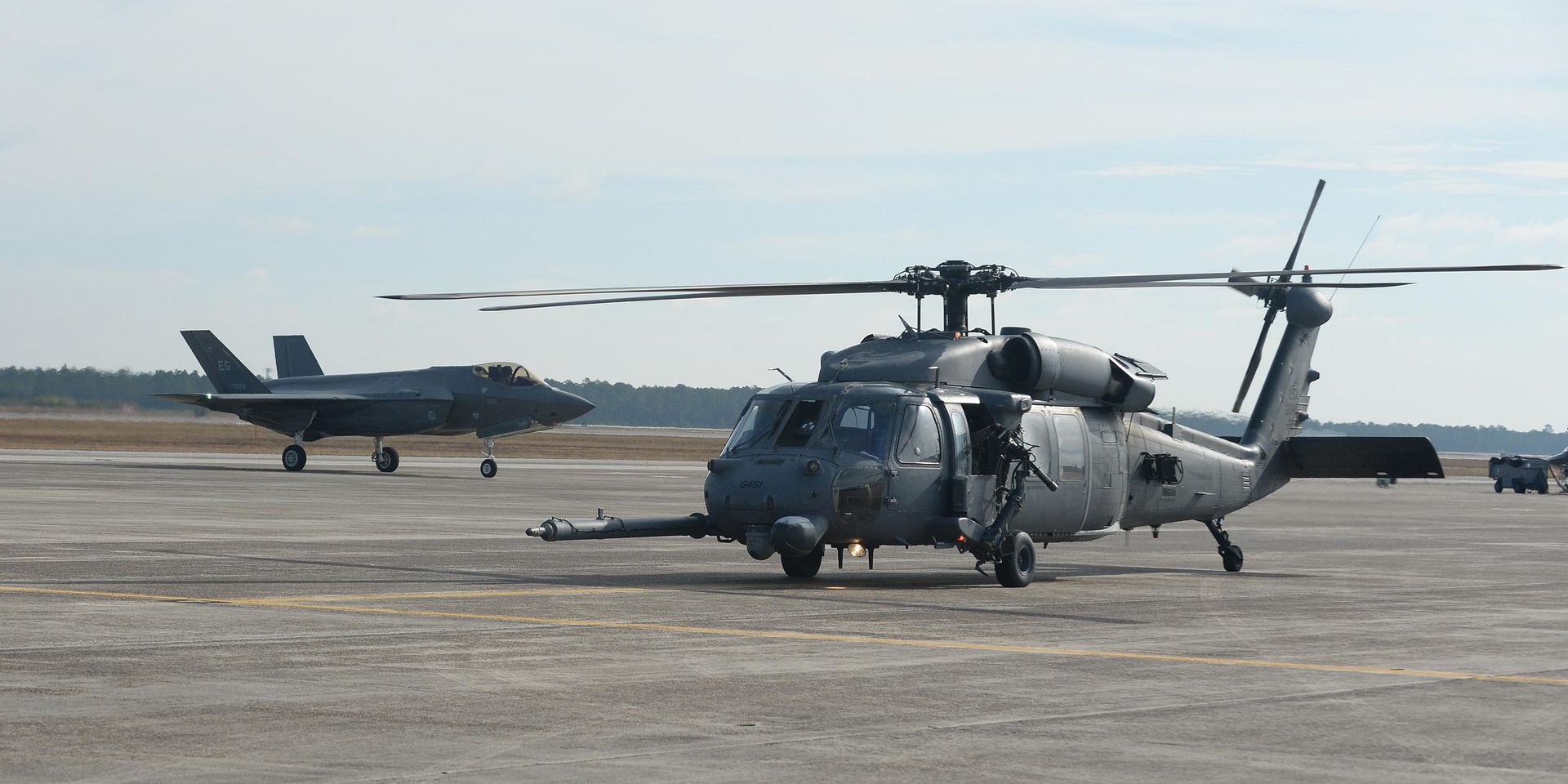
?During each exercise, the allied forces will experience a downed aircraft,? King said. ?We will work with the allied assets overhead to facilitate the recovery of the isolated personnel.?
The Nellis Airmen were part of many different units tasked with demonstrating their ability to rapidly join an integrated combat team and conduct operations on a large scale, said Col. Randall Cason, 44th Fighter Group commander. ?Checkered Flag is an outstanding opportunity for combat units to familiarize and synchronize in order to become even more effective in their combat missions.?
HH-60G Pave Hawks have a long history of use in contingencies, starting with Operation Just Cause in 1988. During Operation Desert Storm they provided combat search and rescue coverage for coalition forces in western Iraq, coastal Kuwait, the Persian Gulf and Saudi Arabia. They also provided emergency evacuation coverage for U.S. Navy SEAL teams penetrating the Kuwaiti coast before the invasion. The 66 RQS has met every challenge of its operational tasking in every major contingency.
?We continuously train and challenge our Airman so that when we get the call, we proudly stand behind the rescue motto, ?These things we do, that others may live,?? said Maj. Annie Driscoll, 66th RQS mission commander.
Participation in exercises like Checkered Flag allow for the pilots and aircrew who operate the HH-60G to maintain the level of readiness required to stay up to speed with such critical missions.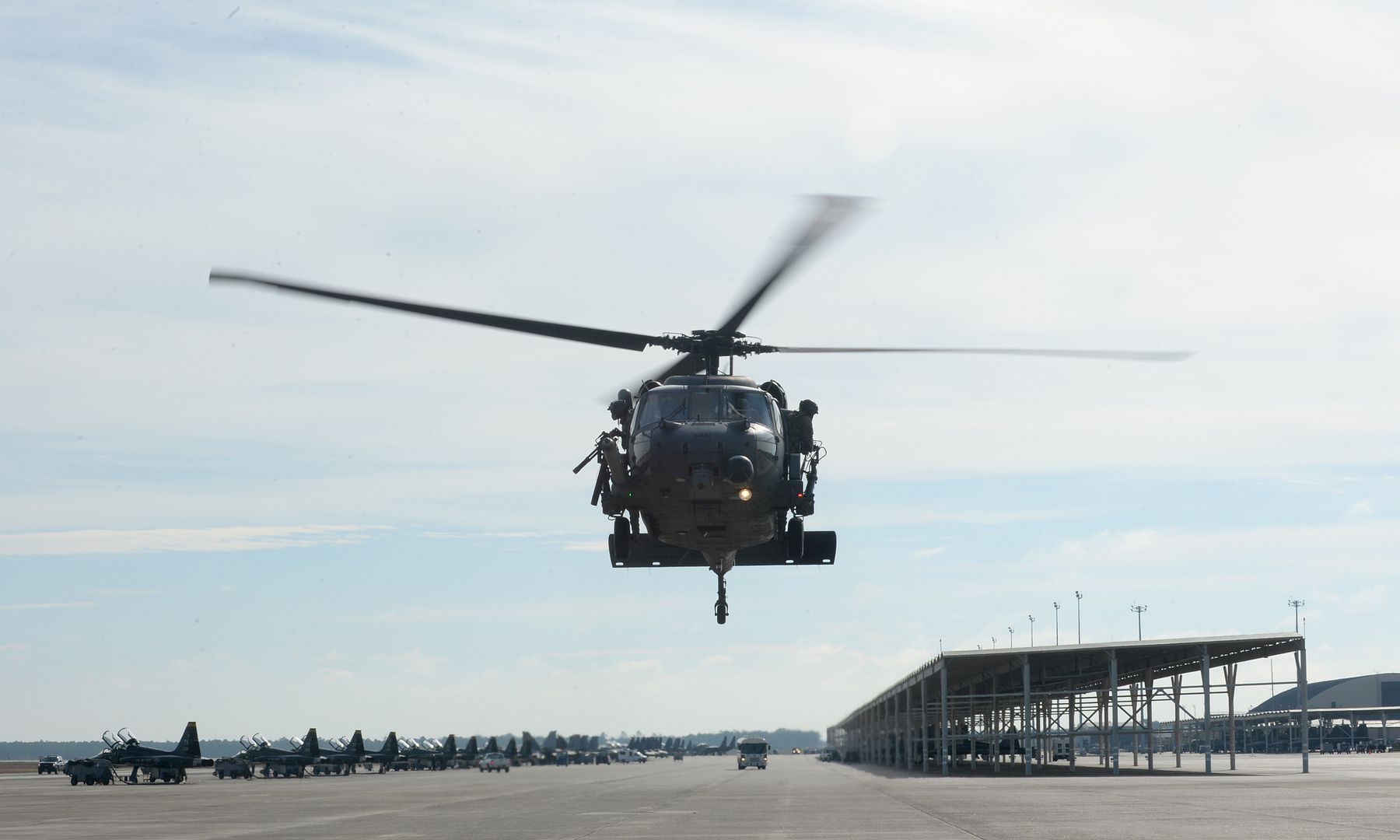
NORTH CHARLESTON, S.C., Dec. 8, 2016 /PRNewswire/ -- Boeing [NYSE: BA] teammates in North Charleston, S.C., started final assembly of the first 787-10 Dreamliner, marking yet another on-time milestone for the development program.
The first 787-10 will cycle through Boeing South Carolina's Final Assembly facility as all major sections are joined, interior and exterior components completed, power turned on and production tests begin.
"As we enter the next phase of the 787-10's development, we eagerly watch our first airplane come to life," said Ken Sanger, vice president and general manager, 787 Airplane Development, Boeing Commercial Airplanes. "This is the result of years of preparation and solid performance by our Boeing teammates and supplier partners. This achievement is another example that demonstrates Boeing's ability to develop great airplanes in a disciplined fashion in order to meet our customer commitments."
The first 787-10 is expected to fly in 2017 and first delivery is scheduled for 2018.
The 787-10 is the third member of the super-efficient, passenger-pleasing 787 Dreamliner family. As a stretch of the 787-9, the 787-10 will retain 95 percent commonality while adding seats and cargo capacity, setting a new benchmark for fuel efficiency and operating economics ? 25 percent better fuel per seat and emissions than the airplanes it will replace.
To date, Boeing has received 154 787-10 orders from nine customers.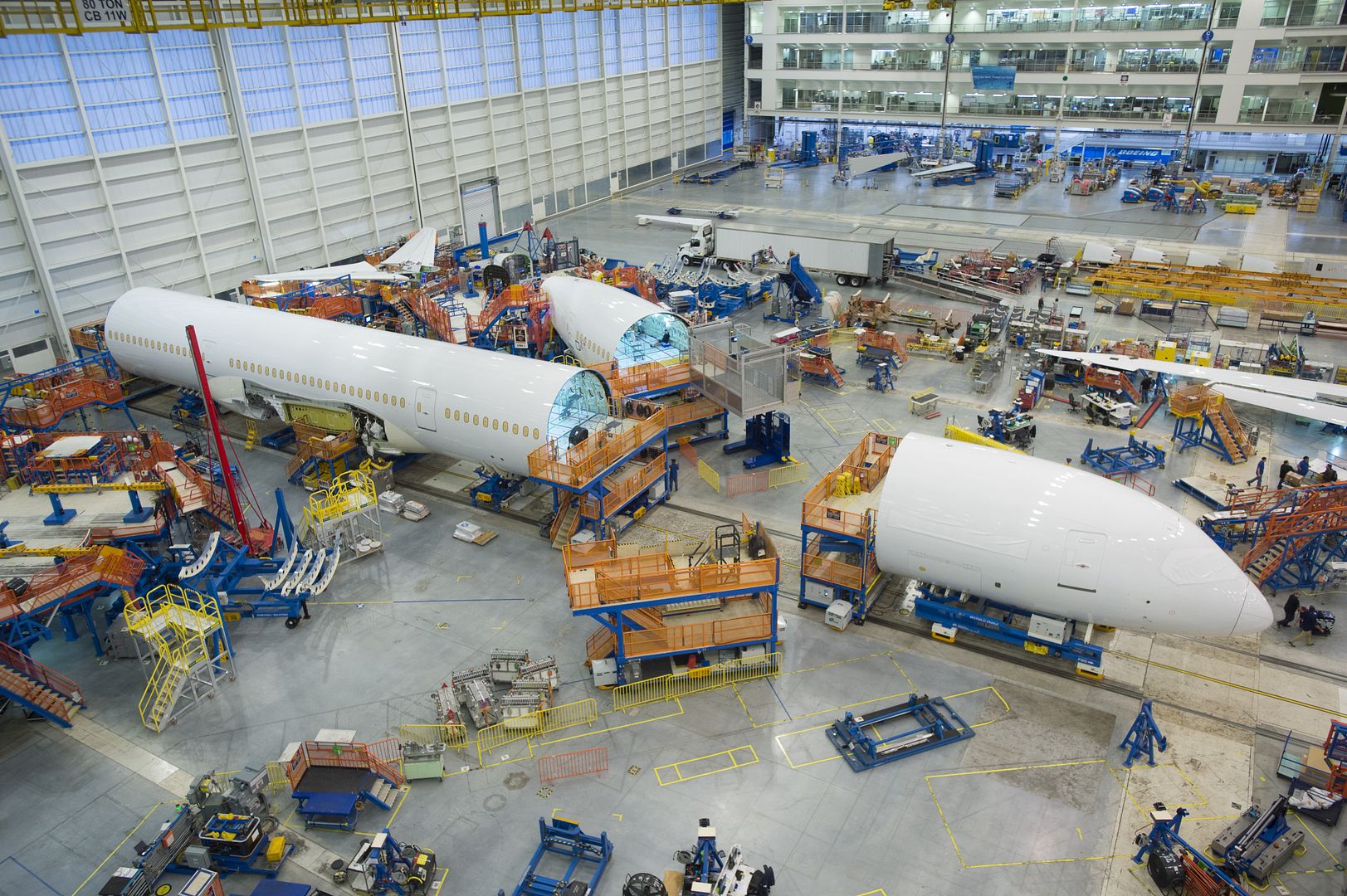
December 8, 2016 Toronto Commercial Aircraft, Press Release
Bombardier Commercial Aircraft announced today that it has finalized a firm purchase agreement with Philippine Airlines, Inc., flag carrier of the Philippines, consistent with the Letter of Intent announced on October 14, 2016. The purchase agreement includes a firm order for five Q400 aircraft and purchase rights for an additional seven Q400 aircraft.
Based on the list price of the Q400 aircraft, the firm order is valued at approximately US $165 million and could increase to US $401 million, should Philippine Airlines exercise all its purchase rights.
?With the lowest seat-mile costs in the regional aircraft market, the extra-capacity, two-class Q400 aircraft will offer Philippine Airlines significant opportunities to differentiate itself competitively,? said Fred Cromer, President, Bombardier Commercial Aircraft. ?The Q400 aircraft is the ideal solution for the airline as it develops its domestic operations network from secondary hubs and increases intra-island connectivity.?
?As we strive to become a top-rated airline, the Q Series family of aircraft has enabled us to develop our business model into one which efficiently meets our domestic route requirements while providing our passengers with a full service onboard experience?, said Jaime J Bautista, President and Chief Operating Officer, Philippine Airlines. ?We are proud of our collaboration with Bombardier and welcome the first modern and innovatively configured two-class, 86-seat Q400 aircraft to our growing fleet.?
The five firm-ordered Q400 aircraft are expected to be delivered throughout 2017.
Bombardier?s customer support network for commercial aircraft in the Asia-Pacific region includes Regional Support Offices in Singapore, Narita (Tokyo), Sydney, Beijing, Shanghai and Mumbai, as well as Parts Depots in Sydney, Beijing and Singapore. Operating from the company?s regional office located in Singapore, Bombardier Commercial Aircraft?s sales and marketing team is well positioned to provide industry-leading solutions to its current and prospective customers.
About the Q400 Aircraft
Designed as a modern, 21st-century turboprop, the Q400 aircraft is the most recent development in the Q Series family of aircraft. It provides unmatched performance, operational flexibility and passenger comfort. In addition to the standard single-class configuration, Q400 aircraft are available with a two-class interior for enhanced passenger comfort; in an extra-capacity configuration offering up to 90 seats for higher-density markets; and in a cargo-passenger combi configuration.
Thanks to its combination of turboprop attributes, jet-like features, industry-leading passenger experience and environmental footprint, the Q400 aircraft is exceptionally versatile and can be adapted to a variety of business models. By offering a 30 per cent reduction in fuel burn over the jets it often replaces, the Q400 aircraft radically reduces carbon emissions and increases cost efficiency. Its high-speed cruise -- 160 km/h faster than conventional turboprops -- places the aircraft?s flight time within minutes of jet schedules, at the same seat cost as larger single-aisle jets. Its large propellers operate at a lower RPM, generating more power with less noise and making it a friendly option for city centres.
The Q400 aircraft family includes over 60 owners and operators in almost 40 countries. The worldwide fleet has logged more than 6.9 million flight hours and has transported more than 429 million passengers. Long recognized as a high-value asset by operators, the Q400 aircraft is now also attracting growing interest from the leasing community.
Bombardier has recorded firm orders for a total of 571 Q400 aircraft.
About Philippine Airlines
Philippine Airlines (PAL) is the flag carrier of the Philippines. Headquartered in Manila, PAL celebrates its 75th anniversary this year as the first commercial airline in Asia. Operating out of its hubs at Ninoy Aquino International Airport of Manila and Mactan-Cebu International Airport of Cebu, Philippine Airlines serves 30 destinations in the Philippines and over 43 destinations in Southeast Asia, East Asia, Middle East, Oceania, North America and Europe.
Donauw?rth,
On Thursday Dec 8th, the NH90 Sea Lion naval multi-role helicopter took off on its on-schedule maiden flight at Airbus Helicopters in Donauw?rth. Wolfgang Schoder, CEO of Airbus Helicopters Deutschland; Ralph Herzog, Director in the Federal Office of Bundeswehr Equipment, Information Technology and In-Service Support (BAAINBw) and Vice Admiral Andreas Krause, Chief of the German Navy welcomed this important milestone in the programme.
?We are proud to be delivering this state-of-the-art naval helicopter to the German Armed Forces on time,? said Wolfgang Schoder. ?This new generation of NH90 naval helicopters, the Sea Lion, has benefited from experience gathered by other countries who have been using it.? The NH90 Sea Lion has an increased number of sensors and improved navigation and communications equipment, which means that this military helicopter will also be able to operate in civil air space. The military friend/foe identification has also been updated to the latest standards.
For the BAAINBw in Koblenz, the Sea Lion is also a special project: ?We need to keep to a tight schedule if we are to replace the Sea King in time. This requires all those participating in the project to coordinate quickly and efficiently to achieve this,? explained Ralph Herzog. ?By using an existing NH90 model as the basis for the Sea Lion and adding the required additional functionalities to it, we have been able to significantly reduce the delivery process. This model is also configured not only to be an adequate replacement for the Sea King but is designed so that it can be adapted to future roles.?
?The Navy is looking forward, as the first customer, to be receiving the NH90 Sea Lion on time by the end of 2019,? said Vice Admiral Andreas Krause. ?We are now expecting a successful test phase.? Meanwhile, the Navy is preparing intensively for the acceptance of the helicopters with technical and flight personnel already training. Further measures have commenced at their future home, the Nordholz naval air base. Infrastructural changes and new buildings are necessary.
Deliveries of NH90 Sea Lions to the Navy will start at the end of 2019. When deployed, it will take on a range of roles including search and rescue (SAR) missions, maritime reconnaissance, special forces missions as well as personnel and materiel transportation tasks. The German Armed Forces (Bundeswehr) have ordered 18 of these helicopters altogether, with the last due to go into service in 2022. The second NH90 Sea Lion awaiting qualification testing is currently at the final assembly stage and series production at Donauw?rth will commence in the summer of 2017.
In addition to its land-based use in SAR missions, the NH90 Sea Lion is also intended to operate on Type 702 (Berlin class) combat support ships.
Thanks to its multi-role capability and future proofing, the Sea Lion will not merely replace the Bundeswehr?s Sea King Mk41 fleet but significantly enhance the Navy?s operational capabilities. The electronic fly-by-wire flight controls of the NH90 Sea Lion reduce the crew?s workload. Other benefits of this control system are its high precision and ease of use, which particularly come to the fore in over-water hovering, even in poor weather conditions.
The NH90 Sea Lion shell is manufactured from advanced, high-strength composite materials. This offers optimum protection for the crew thanks to its excellent crash behaviour.
Five nations are already using the naval NH90 NFH (NATO Frigate Helicopter). They have already completed more than 30,000 flying hours with the 69 helicopters delivered so far: in humanitarian and SAR and military missions on land and on board naval vessels. The German NH90 Sea Lion programme has greatly benefited from the experience gained from these operations. Altogether 129 NH90 NFH helicopters have been ordered; the total for all NH90 models comes to 515. The whole NH90 fleet comprising 296 helicopters delivered so far has already completed over 120,000 flying hours.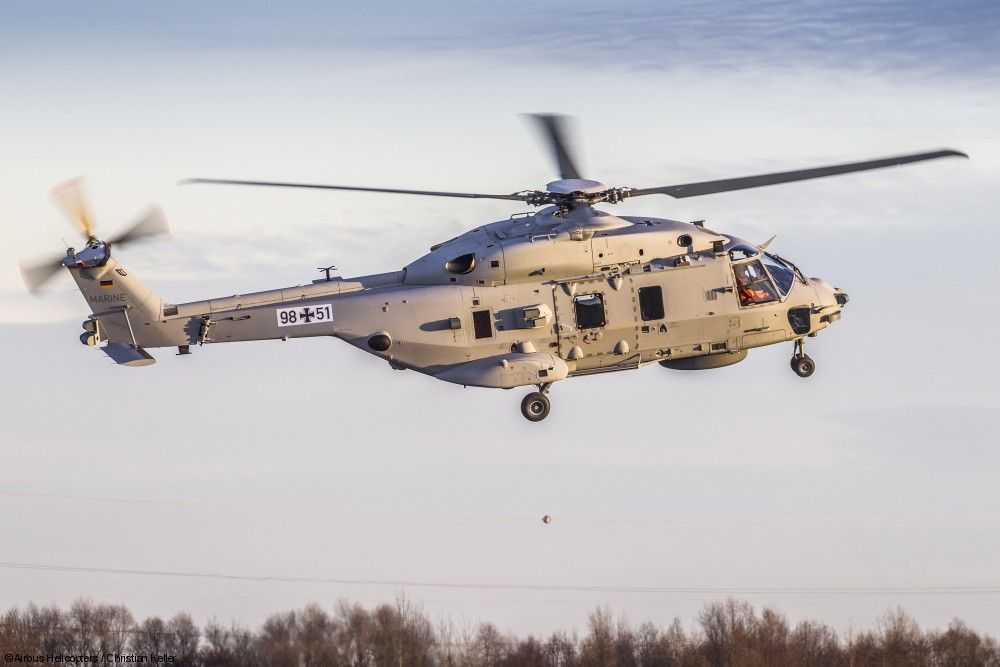
News Article / December 8, 2016
Government of Canada
The Royal Canadian Air Force?s fixed-wing search and rescue (FWSAR) fleets of CC-115 Buffalo and legacy CC-130H Hercules aircraft will be replaced by the C295W aircraft, manufactured by Airbus Defence and Space.
The announcement was made December 8, 2016, at 8 Wing Trenton, Ontario.
Following a rigorous, open and transparent competition, the Government of Canada awarded a contract to Airbus Defence and Space to replace the current FWSAR aircraft. The company has partnered with Newfoundland-based PAL Aerospace for maintenance and support services. The contract will provide a complete, modern and technologically advanced search and rescue solution, including maintenance and support services up to 2043.
?Members of the Royal Canadian Air Force search and rescue community are among the best trained in the world and respond to incidents in every type of environment, whether in the Arctic, over the Rockies or in the middle of the ocean,? said Defence Minister Harjit S. Sajjan. ?Canadians in distress can count on them to give their very best to save lives. With this technology, we are giving our women and men in uniform the tools they need to continue to deliver effective and essential search and rescue operations.?
As part of this contract, Airbus will provide 16 C295W aircraft, equipped with advanced technology systems, to support Canada?s search and rescue operations, construct a new simulator-equipped training centre in Comox, British Columbia, and provide ongoing maintenance and support services.
The new technology being acquired includes state-of-the-art communications systems that will allow search and rescue personnel to share real-time information with partners on the ground. Using integrated sensors, crews will be able to locate persons or objects, such as downed aircraft, from more than 40 kilometres away, even in low-light conditions.
The RCAF?s CC-115 Buffalo and CC-130H Hercules have served Canada well over the last 20 to 40 years. These aircraft perform more than 350 missions annually and are responsible for saving thousands of Canadian lives every year. During the transition the existing fleets will continue to be maintained and operated to ensure search and rescue responsibilities.
The Canadian Armed Forces is responsible for providing aeronautical search and rescue operations. In collaboration with federal, provincial/territorial and municipal governments, as well as local search and rescue organizations, the Canadian Armed Forces respond to Canadians in distress across the country and at sea.
About the contract
The initial contract for a period of 11 years is valued at $2.4 billion (plus applicable taxes) and includes six years of acquisition and set up, including the construction of a new training centre in Comox, British Columbia, as well as the first five years of maintenance and support services.
The contract is performance-based, which means the contractor will only be paid when equipment and services are delivered and accepted by Canada. The contract also includes options to extend the maintenance and support services for an additional 15 years. Should Canada choose to exercise these additional options, the contract value would increase to $4.7 billion (plus applicable taxes).
A fairness monitor was engaged to oversee and report on the openness and transparency of the procurement process. The fairness monitor?s report identified no fairness?related issues.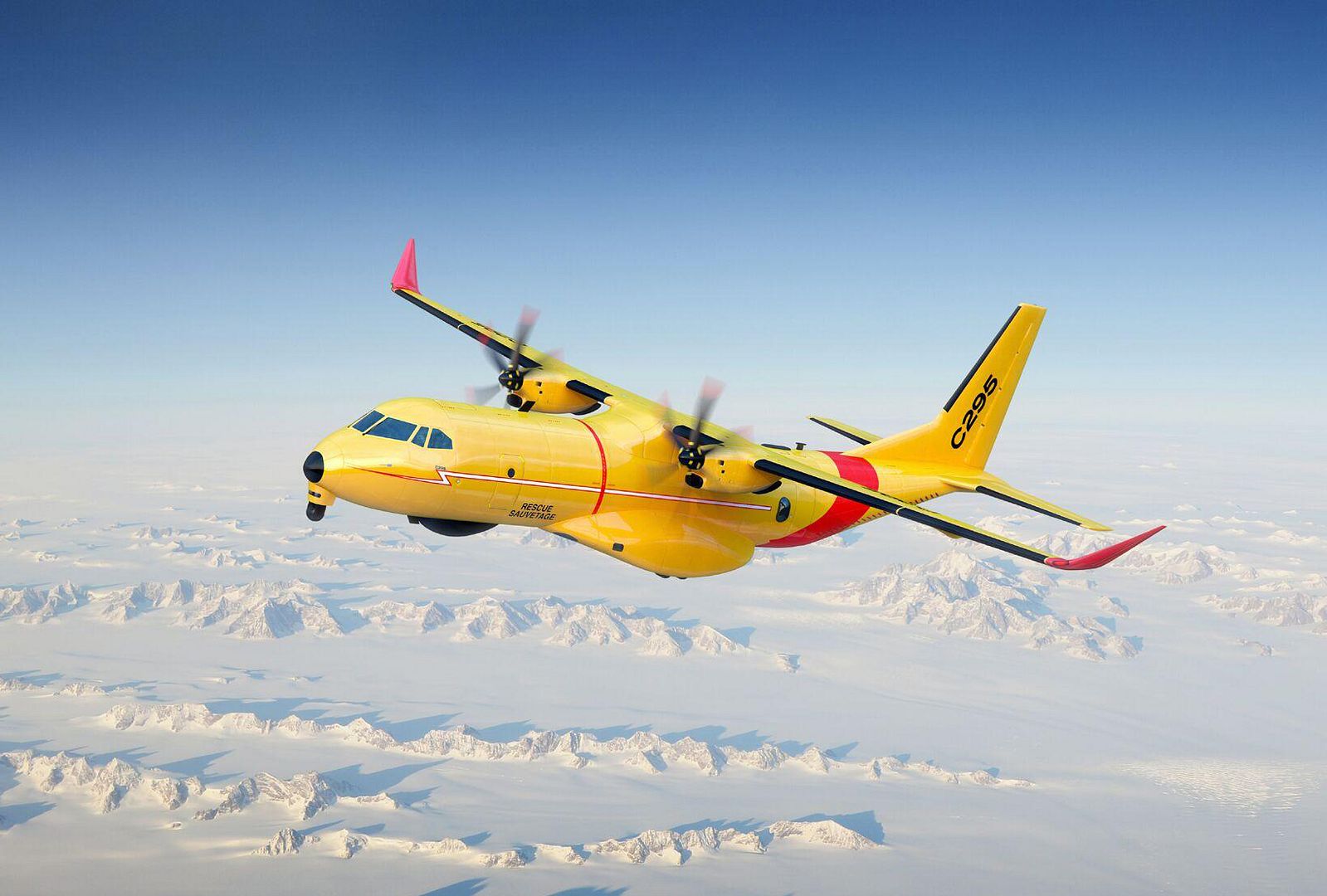
-
 Main AdminU.S. Marines with 1st Battalion, 3rd Marine Regiment fast rope from a CH-53E Super Stallion assigned to Marine Heavy Helicopter Squadron 463 during a simulation of operation Gothic Serpent aboard Marine Corps Base Hawaii, Kaneohe Bay, Dec. 10, 2016. Operation Gothic Serpent was a military operation conducted by U.S. special operations forces with the primary mission of capturing faction leader Mohamed Farrah Aidid. The operation occured in Somalia, Africa from August to October 1993 and was supervised by the Joint Special Operation Command. (U.S. Marine Corps photo by Cpl. Ricky S. Gomez)
Main AdminU.S. Marines with 1st Battalion, 3rd Marine Regiment fast rope from a CH-53E Super Stallion assigned to Marine Heavy Helicopter Squadron 463 during a simulation of operation Gothic Serpent aboard Marine Corps Base Hawaii, Kaneohe Bay, Dec. 10, 2016. Operation Gothic Serpent was a military operation conducted by U.S. special operations forces with the primary mission of capturing faction leader Mohamed Farrah Aidid. The operation occured in Somalia, Africa from August to October 1993 and was supervised by the Joint Special Operation Command. (U.S. Marine Corps photo by Cpl. Ricky S. Gomez)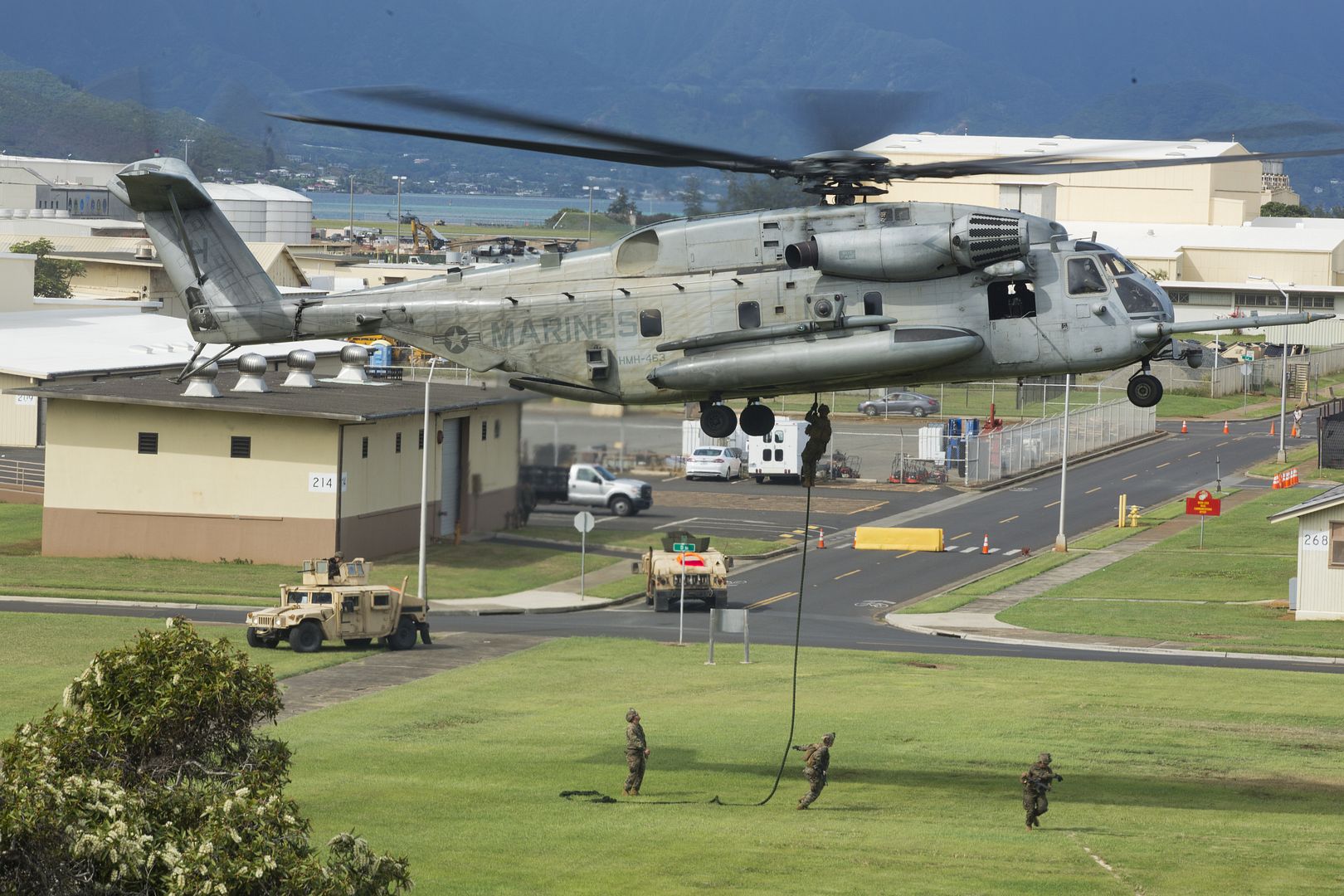
A TART S6 kill bot drone with an attached paintball gun (left) which fires a net projectile gives chase to a Phantom 4 unmanned aerial system as part of a demonstration of the counter unmanned aerial system that the team from Hanscom Air Force Base, Ma., developed for the 2016 Air Force Research Laboratory Commanders Challenge at the Nevada National Security Site, Las Vegas, NV., Dec. 11, 2016. Teams were given six-months to develop counter unmanned aerial systems to aid in base defenses. Hanscom's solution is a layered detect and defeat system which used radar, jamming devices and a TART S6 kill bot drone which fires a net projectile around unauthorized unmanned aerial systems. (U.S. Air Force photo by Wesley Farnsworth)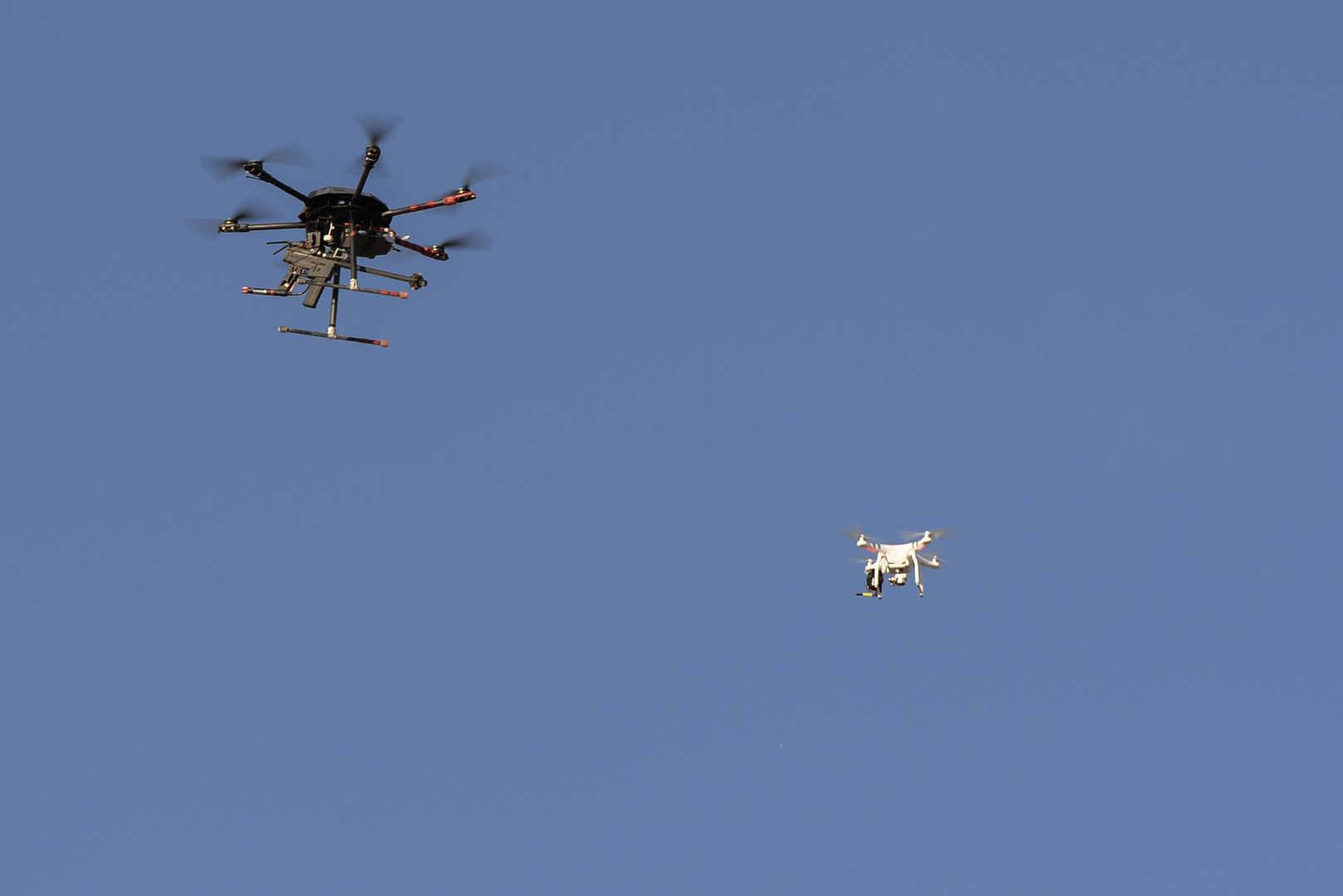
SCOTT AIR FORCE BASE, Ill. (AFNS) --
Air Mobility Command Airmen worked around the clock to ensure Israel?s first two F-35 aircraft were delivered Dec. 12, making the U.S. ally the only country in the Middle East flying a fifth generation fighter aircraft.
The 618th Air Operations Center, based out of Scott AFB, Illinois, assigned the Tennessee Air National Guard?s 134th Air Refueling Wing, New Hampshire ANG?s 157th ARW and Pennsylvania ANG?s 171st ARW the critical mission of providing vital aerial refueling support en route to Israel.
The 618th AOC planned the mission and provided command and control for the KC-135s while they dispensed the fuel needed to ensure an effective multi-day mission to deliver the two new Israeli F-35 ?Adirs?.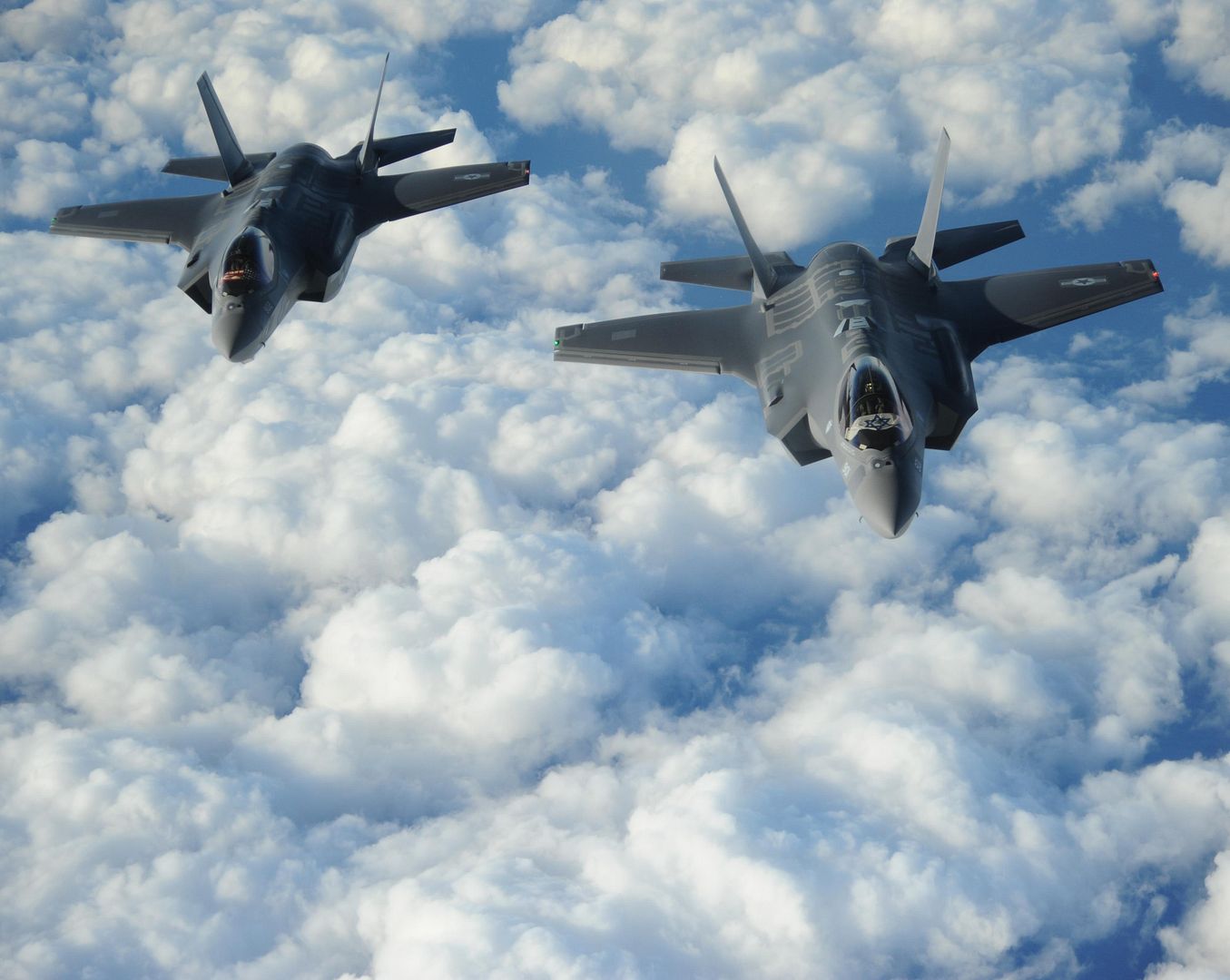
?We always need to be at the top of our game,? said Maj. John Hale, the aircraft commander for the Tennessee ANG KC-135. ?That?s especially the case when enabling the delivery of Israel?s first fifth generation fighters with a 52-year-old aircraft.?
Even with the overall KC-135 fleet reaching 60 years old, the aircraft and its Airmen continue to provide refueling capabilities to nine combatant commanders worldwide. Every 2.8 minutes there is some type of AMC aircraft supporting an operation somewhere around the globe. Mobility forces work with international partners to enhance their defense capability and capacity to conduct missions.
The U.S. and Israel have a military relationship developed through decades of cooperation. The delivery of capable and effective fighter aircraft will bring new capabilities to Israel and deepen the ties between the two countries.
"It is an honor to help ensure the delivery of F-35s to a valued ally,? said Gen. Carlton Everhart, the Air Mobility Command commander. ?Aerial refueling missions enable global reach for the United States and partner nations. Air Mobility Command Airmen and aircraft enable global effects and create bridges of support for partner nations on a daily basis."
Sharing the same aircraft with partner nations allows the U.S. to fly and fight in the same airframe with common tactics, capabilities, and resources, ensuring an interoperable coalition.
Members from AMC?s 618th AOC work 24 hours a day, 365 days a year to plan, task, assess, and provide command and control for airlift and tanker missions worldwide, making combat operations and partner nation support possible.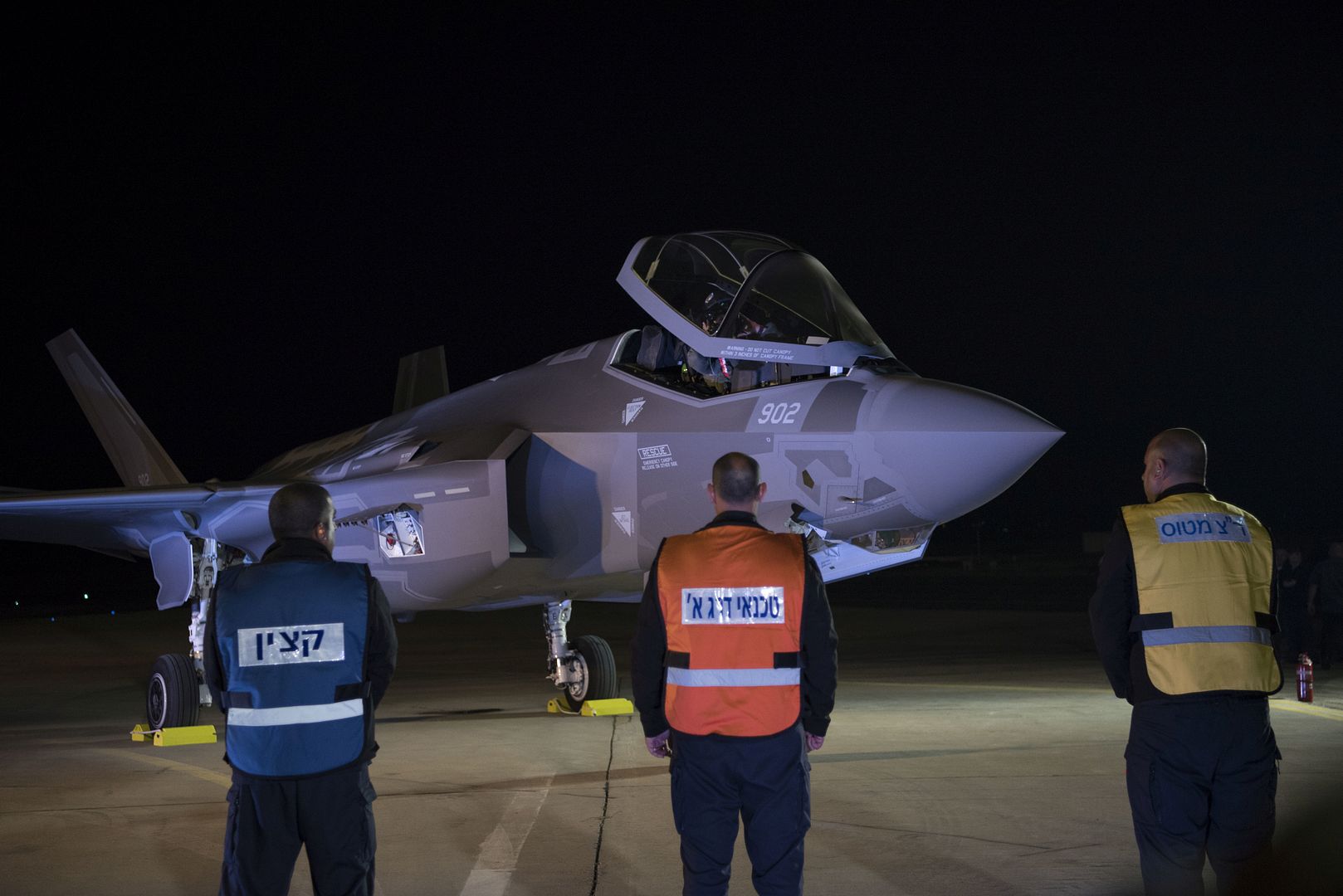
TYNDALL AIR FORCE BASE, Fla. --
The 20th Fighter Wing from Shaw Air Force Base, South Carolina, sent 16 F-16CJ Fighting Falcons and approximately 140 Airmen to participate in the Checkered Flag 17-1 and Combat Archer 17-3 here Dec. 5 through 16.
Checkered Flag 17-1 and Combat Archer 17-3 focus on the integration of three fighter squadrons? ability to perform as a large-scale total force integration, designed to be a rapid response to unforeseen or unplanned operations.
?This is a good opportunity for everyone, including the younger Airmen who have not experienced exercises like Red Flag, to train with all the other Air Force?s fighters, to employ tactically in an air-to-air scenario,? said Capt. Garret Schmitz, 55th Fighter Squadron C-Flight commander.
The F-16 is a multi-role fighter aircraft, but Shaw?s F-16s mostly play an air-to-air role at Checkered Flag this year, Schmitz said.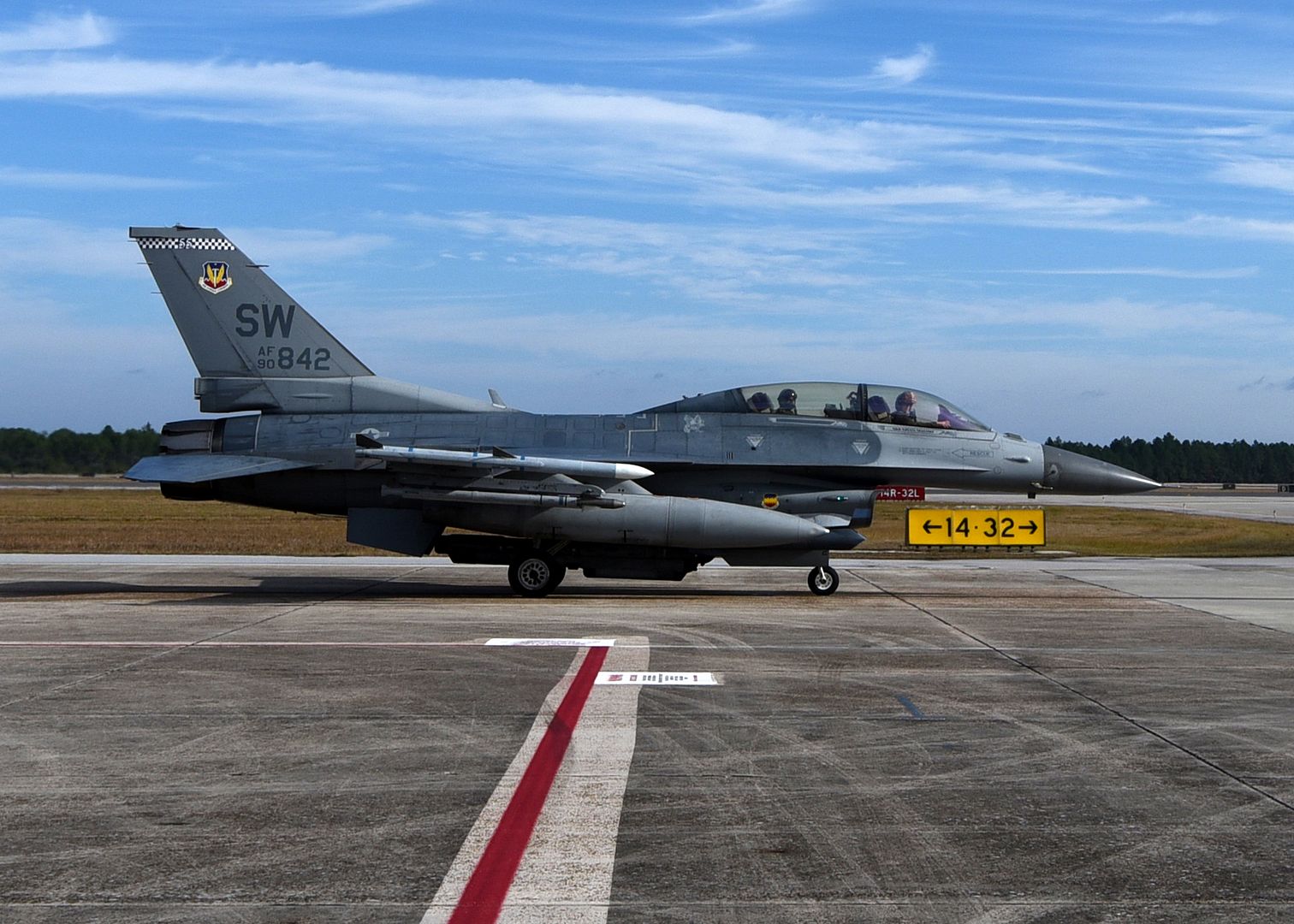
?We?re out here providing a good air-to-air platform for other people to train off of and for us to practice our air-to-air tactics," he continued. "This is a great opportunity to integrate with the F-22 [Raptor] and F-35 [Lightning II], combining their tactics and our tactics to form a seamless fight.?
Shaw does this by maintaining a mission-ready, multi-role capability to mobilize, deploy and tactically employ forces worldwide for any contingency in support of U.S. national objectives.
?Our roles as pilots while at Tyndall are to fly some sorties and get some good training experience and integrate with the other fighter pilots,? said Capt. Brian J. Leber, 55th FS pilot.
While at home station, Leber is surrounded by F-16s. He said he believes one of the most beneficial aspects of Checkered Flag is that the 55th FS has the opportunity to integrate on a daily basis with fifth-generation aircraft, as well as other fourth-generation assets.
?Every time we go flying here, it?s a mix of assets,? Leber said. ?Briefing, flying and debriefing with them while figuring out how we can all work together to achieve the overall objective, I feel is the most valuable part of this training.?
Leber believes simulations throughout a pilot?s career are beneficial; however, nothing can measure up to the experience and confidence that a pilot gains during a live-fire exercise like Checkered Flag and Combat Archer.
-
 Main AdminMEDITERRANEAN SEA (Dec. 10, 2016) An F/A-18F Super Hornet assigned to the Fighting Swordsmen of Strike Fighter Squadron (VFA) 32 prepares to make an arrested landing on the flight deck of the aircraft carrier USS Dwight D. Eisenhower (CVN 69). Eisenhower, currently deployed as part of the Eisenhower Carrier Strike Group, is conducting naval operations in the U.S. 6th Fleet area of operations in support of U.S. national security interests in Europe. (U.S. Navy photo by Petty Officer 3rd Class Nathan T. Beard/Released)
Main AdminMEDITERRANEAN SEA (Dec. 10, 2016) An F/A-18F Super Hornet assigned to the Fighting Swordsmen of Strike Fighter Squadron (VFA) 32 prepares to make an arrested landing on the flight deck of the aircraft carrier USS Dwight D. Eisenhower (CVN 69). Eisenhower, currently deployed as part of the Eisenhower Carrier Strike Group, is conducting naval operations in the U.S. 6th Fleet area of operations in support of U.S. national security interests in Europe. (U.S. Navy photo by Petty Officer 3rd Class Nathan T. Beard/Released)
MEDITERRANEAN SEA (Dec. 8, 2016) A French navy Rafale Marine aircraft from the aircraft carrier FS Charles De Gaulle (R91) performs a touch and go landing on the aircraft carrier USS Dwight D. Eisenhower (CVN 69). Eisenhower, currently deployed as part of the Eisenhower Carrier Strike Group, is conducting naval operations in the U.S. 6th Fleet area of operations in support of U.S. national security interests in Europe. (U.S. Navy photo by Petty Officer 3rd Class Nathan T. Beard/Released)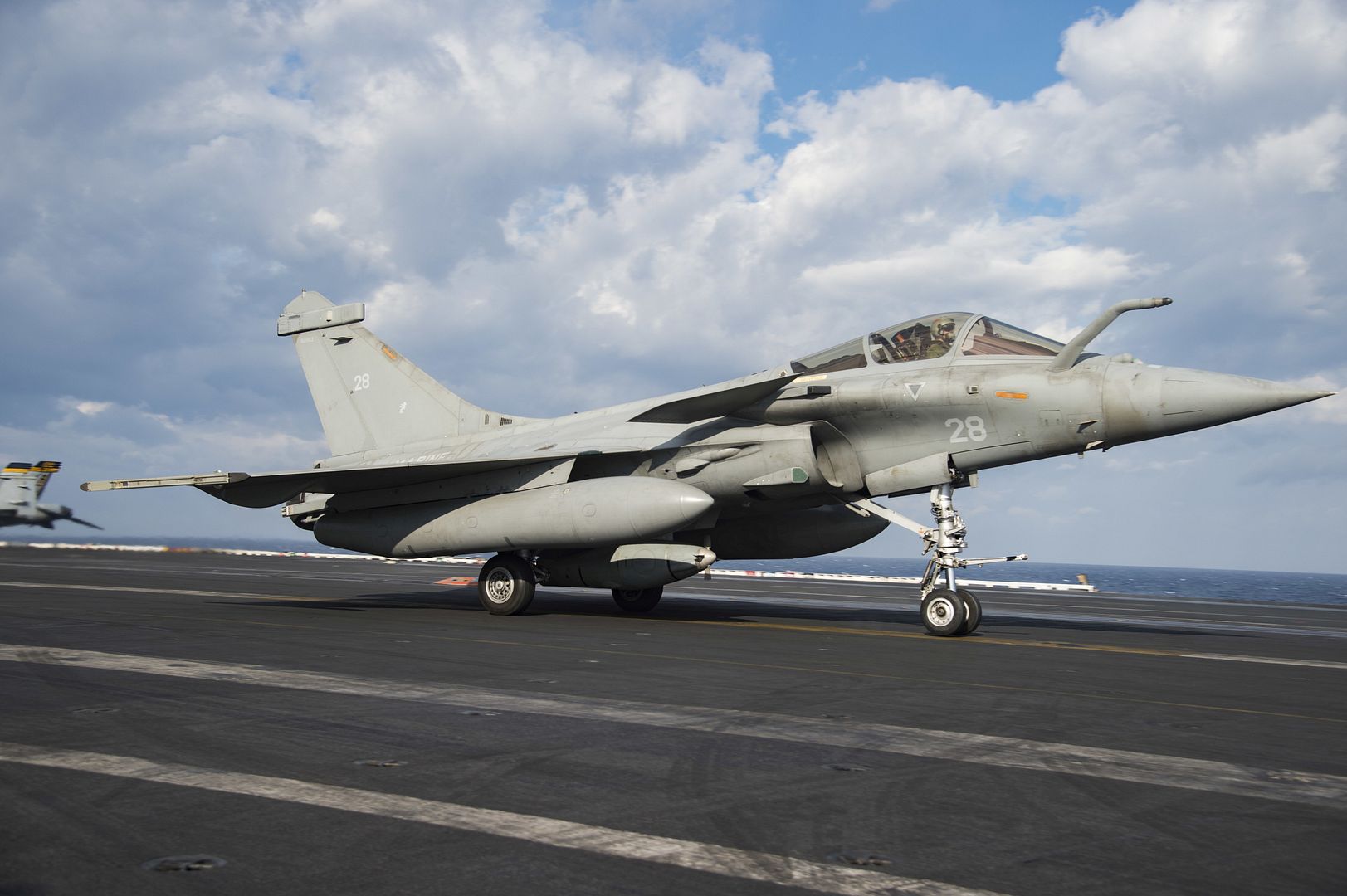
ATLANTIC OCEAN (Dec. 10, 2016) Pilots perform pre-flight procedures in T-45C Goshawks from Training Air Wing One (TRAWING) 1 on the flight deck of the aircraft carrier USS George Washington (CVN 73). George Washington, homeported in Norfolk, is underway in the Atlantic Ocean. (U.S. Navy photo by Petty Officer 2nd Class Bryan Mai/Released)
An aircrew aboard a U.S. Army CH-47 Chinook helicopter, from Joint Base Lewis-McChord, Wash., prepares to take the load of a 14,000 pound buoy that washed ashore just south of the entrance to Tillamook Bay, in Garibaldi, Ore., Dec. 12, 2016.
The Army aircrew assisted the Coast Guard in recovering the beached buoy that normally marks the navigable channel into Tillamook Bay.
U.S. Coast Guard photo by Petty Officer 1st Class Levi Read.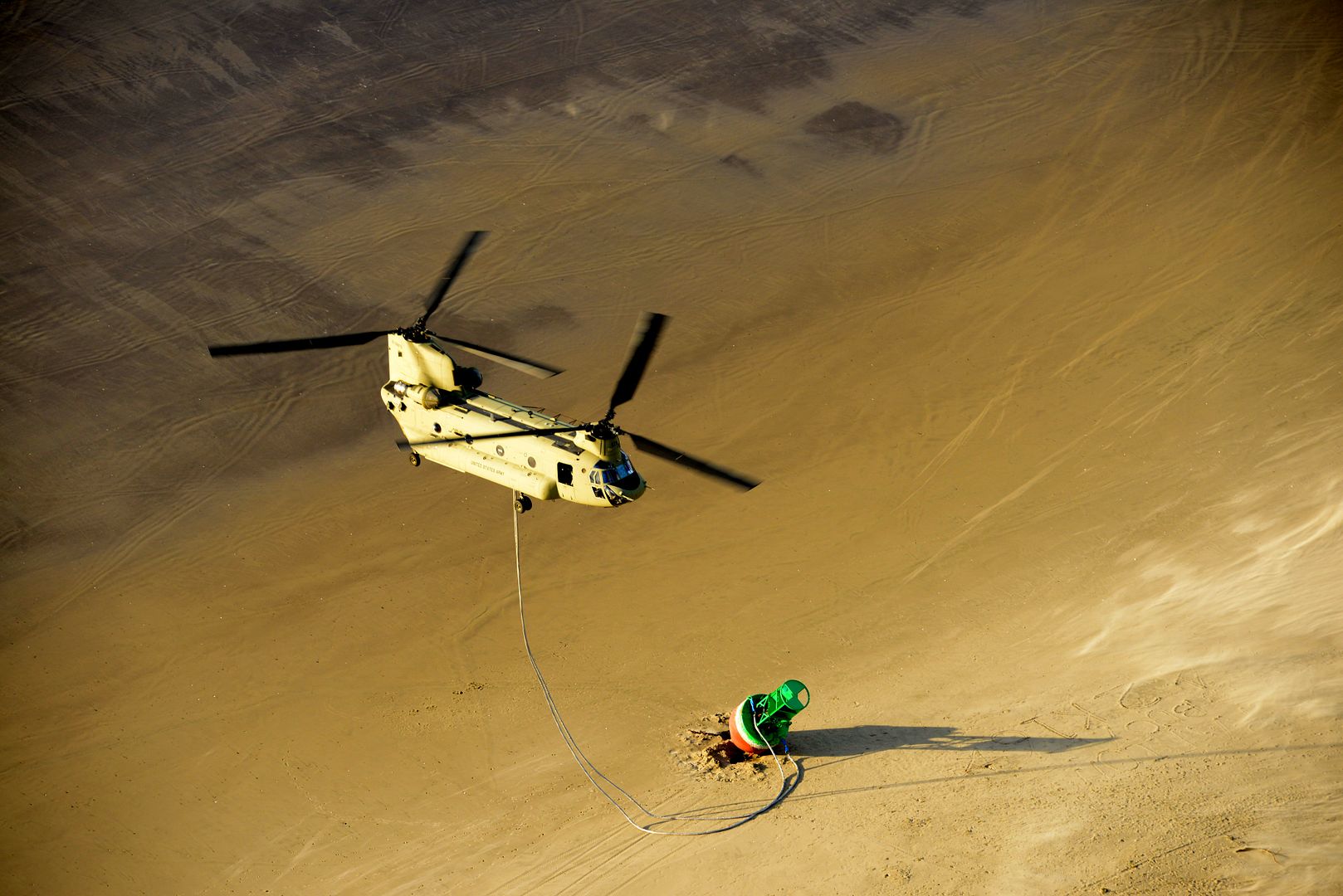
A U.S. Marine Corps AV-8B Harrier with Marine Attack Squadron (VMA) 542 taxis down the runway at Chitose Air Base, Japan, Dec. 12, 2016. Four of VMA-542?s Harriers are conducting flight training daily out of Chitose as part of the Aviation Training Relocation Program. The ATR is an effort to increase operational readiness between the U.S. Marine Corps and the Japan Air Self Defense Force, improve interoperability and reduce noise concerns of aviation training on local communities by disseminating training locations throughout Japan. (U.S. Marine Corps photo by Cpl. James A. Guillory)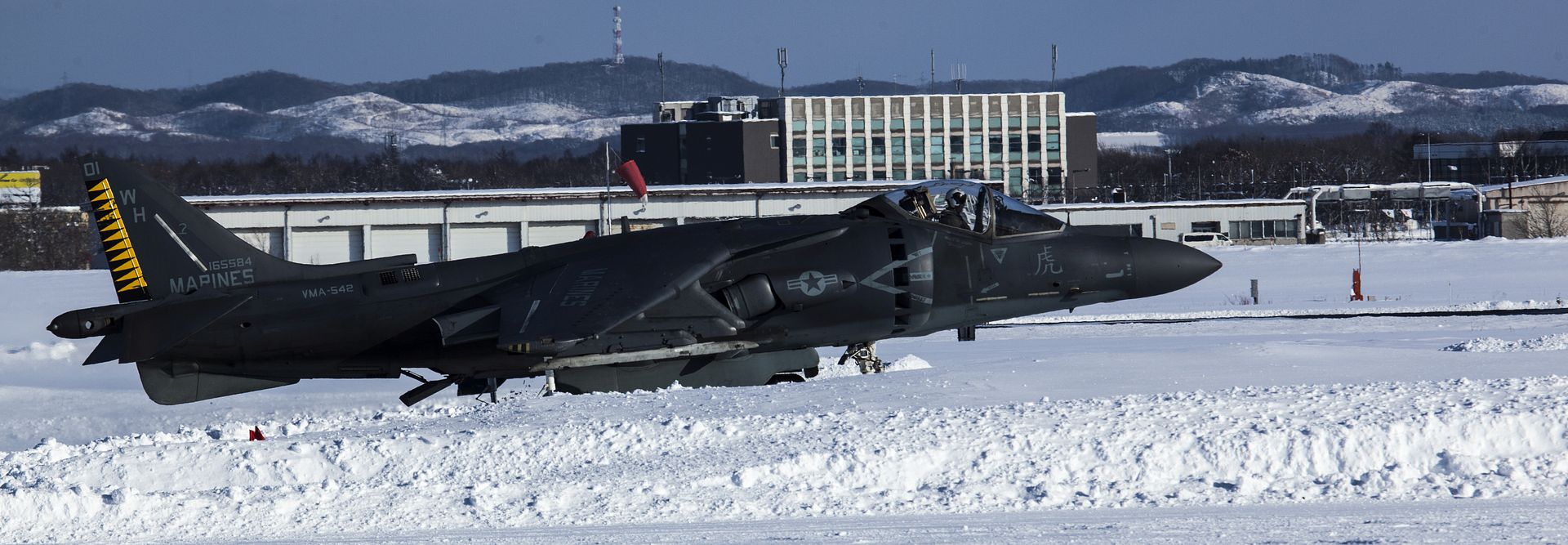
SEATTLE, Dec. 12, 2016 ? Boeing [NYSE: BA] today announced that Evergreen Aviation Technologies Corp. (EGAT) will perform passenger-to-freighter conversions for the 767-300 Boeing Converted Freighter (BCF) program.
Under the agreement, EGAT, an award-winning aircraft Maintenance Repair and Overhaul (MRO) facility in Taiwan, will modify and convert 767-300BCFs.
The first airplane will be inducted in 2017, with redelivery anticipated in 2018. Boeing has received 27 firm orders from customers worldwide for the 767-300BCF.
?The customer demand we?ve received for Boeing Converted Freighters is a testament to the quality and value of our products,? said Mike Fleming, vice president, Fleet Services, Boeing Commercial Aviation Services. ?Boeing-managed conversions provide dependability, reliability and operational efficiency advantages that will help our customers adapt and succeed in the evolving air cargo marketplace."
The 767-300BCF conversion entails the modification of a passenger airplane to the cargo configuration. Converted 767-300BCFs have about the same cargo capability as the 767-300 production freighter with approximately 50 tonnes structural payload at a range of approximately 3,000 nautical miles (5,930 km.) and 412,000 lbs. (187,270 kg.) maximum takeoff weight. There are 24 pallet positions on the main deck.
An experienced Boeing partner, EGAT has successfully carried out complex airframe conversions that built up the fleet of Boeing Dreamlifters ? converted 747 airplanes used to support the 787 program ? since 2005, as well as a 747-400 Propulsion Test Platform for GE Aviation in 2014.
?We look forward to continuing to build on our strong relationship with Boeing through our partnership on the 767-300BCF program,? said Michael Chang, Chairman of EGAT. ?Airline customers who order Boeing?s 767-300BCF will benefit from the outstanding, high-quality products engineered by Boeing, as well as an on-time conversion performed at an award-winning facility in EGAT.?
The expansion of Boeing?s passenger-to-freighter MRO supplier base supports market growth. Boeing's current market outlook forecasts a need for 400 widebody conversions over the next two decades, with strong demand for 767 freighter conversions due to growth in e-commerce.
About Boeing Commercial Aviation Services
A division of Boeing Commercial Airplanes, Commercial Aviation Services is a leader in providing 24/7 support and service to the global aviation industry. In addition to designing freighter conversions, Boeing offers the industry's largest portfolio of services including interior modifications, aftermarket parts, subscription-based maintenance programs, engineering support, crew training, route planning, digital crew scheduling, advanced data analytics and software to enhance airlines and leasing company operations.
About Evergreen Aviation Technologies Corp.
Evergreen Aviation Technologies Corp. (EGAT) is an award-winning, boutique aircraft and engine Maintenance Repair and Overhaul facility, having won accolades from a host of airline partners, from UBM Aviation as well as Aviation Week. Home to the Boeing Dreamlifter conversion, GE?s 747-400 Propulsion Test Platform conversion, and being a Boeing partner of 787 and 747-8 services, EGAT delivers an extensive menu of airframe, modification, engine and component services to more than airline partners from around the world.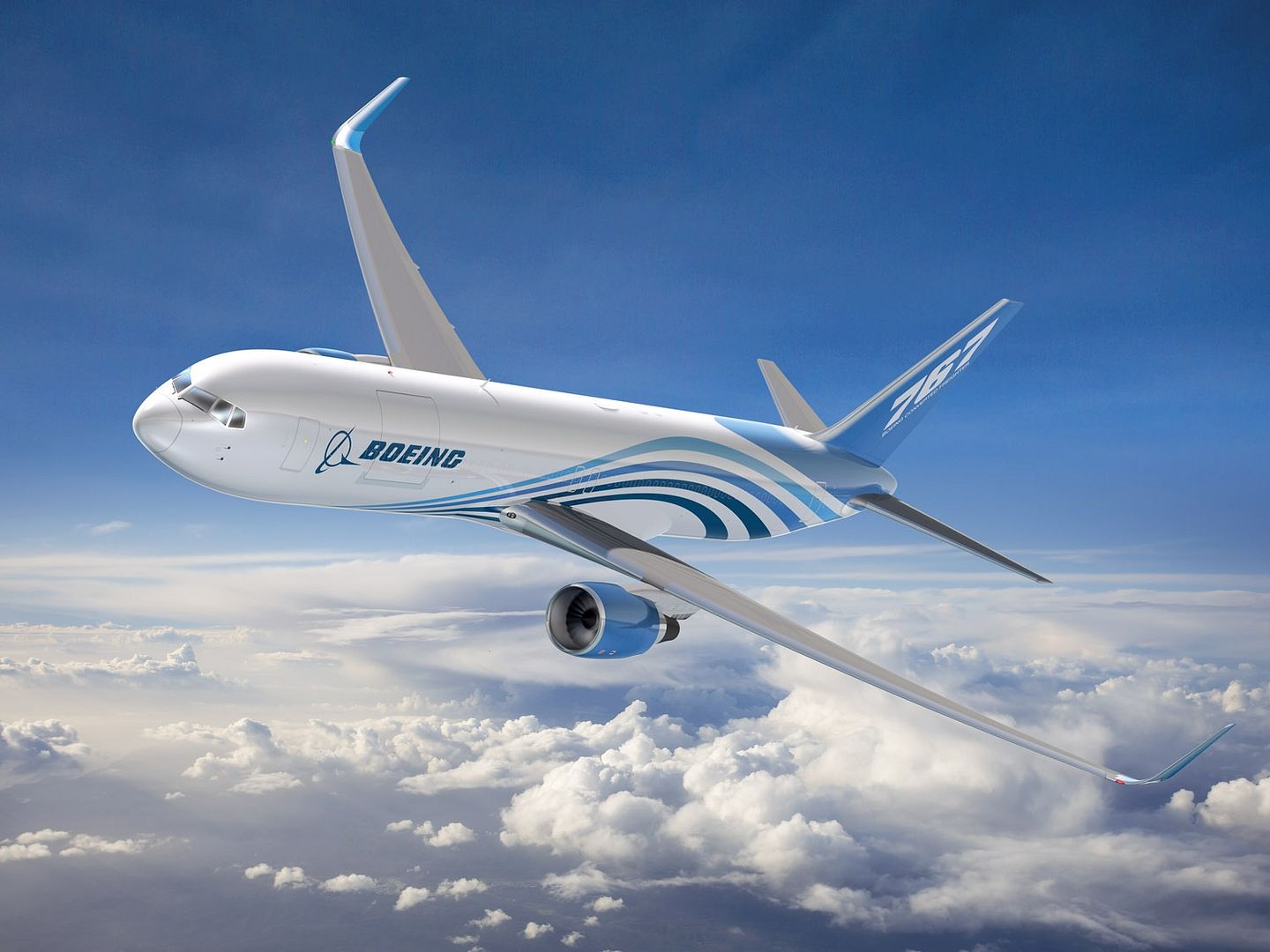
-
 Main AdminAn attack drone with attached net, which is part of the counter unmanned aerial system developed by the team from Wright-Patterson Air Force Base, Ohio, intercepts a DJI S1000 drone with it's net during the 2016 Air Force Research Laboratory Commanders Challenge at the Nevada National Security Site, Las Vegas, NV., Dec. 13, 2016. Teams were given six-months to develop a complete counter unmanned aerial system to aid in base defense. In addition to the attack drone, Wright-Patterson's system uses a camera and laser range finder to detect UAS devices. (U.S. Air Force photo by Wesley Farnsworth)
Main AdminAn attack drone with attached net, which is part of the counter unmanned aerial system developed by the team from Wright-Patterson Air Force Base, Ohio, intercepts a DJI S1000 drone with it's net during the 2016 Air Force Research Laboratory Commanders Challenge at the Nevada National Security Site, Las Vegas, NV., Dec. 13, 2016. Teams were given six-months to develop a complete counter unmanned aerial system to aid in base defense. In addition to the attack drone, Wright-Patterson's system uses a camera and laser range finder to detect UAS devices. (U.S. Air Force photo by Wesley Farnsworth)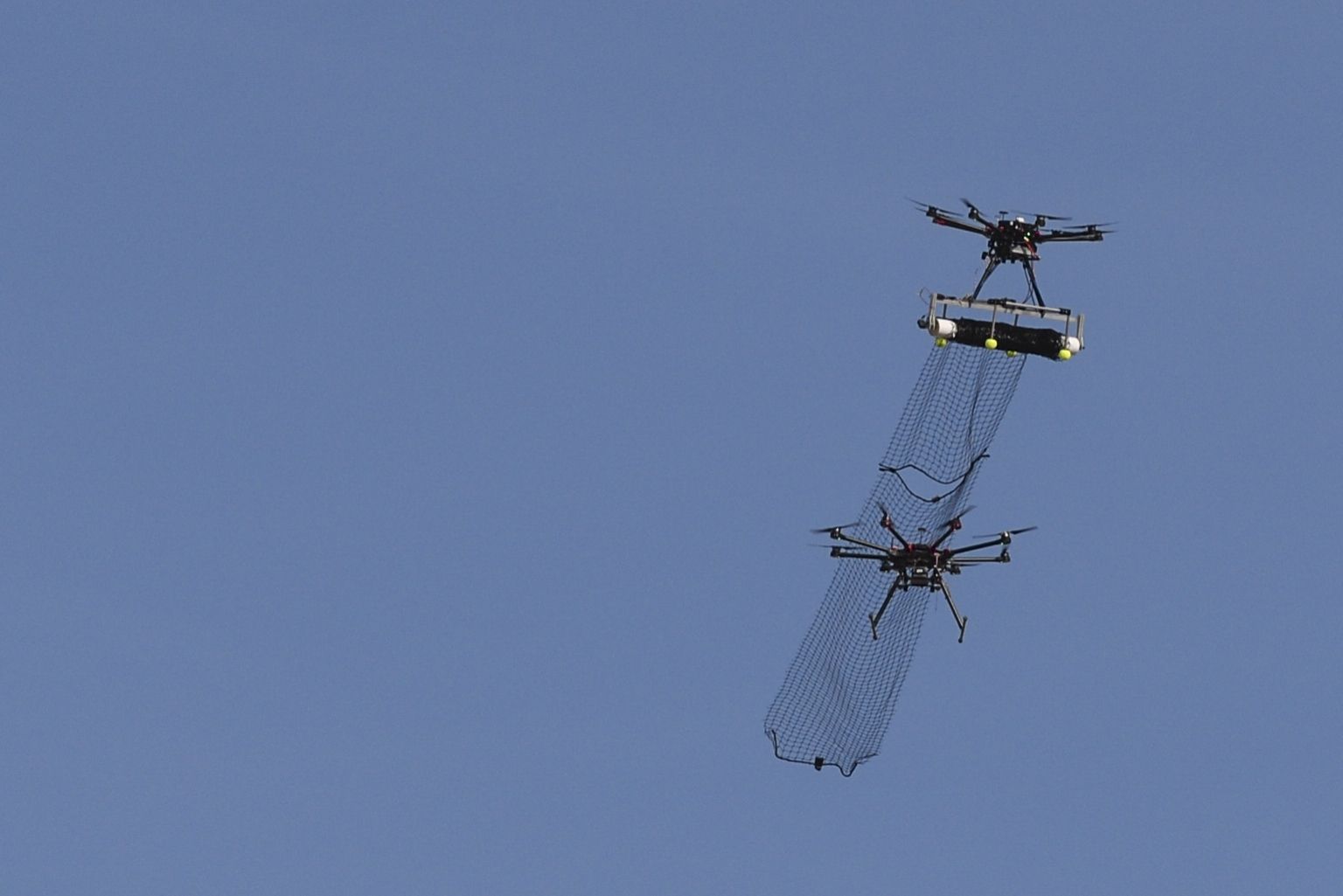
A hunter killer drone with attached net which is part of the unmanned aerial system solution developed by the team from Robins Air Force Base, Ga., captures a Phantom 3 drone in mid flight during the 2016 Air Force Research Laboratory Commanders Challenge at the Nevada National Security Site, Las Vegas, NV., Dec. 13, 2016. Teams were given six-months to develop a complete counter unmanned aerial system to aid in base defense. Robins system is a multi layered integrated system which uses a radar and camera system for detection and identification. It also uses a hunter killer drone for interception and a water cannon for shooting it out of the sky. (U.S. Air Force photo by Wesley Farnsworth)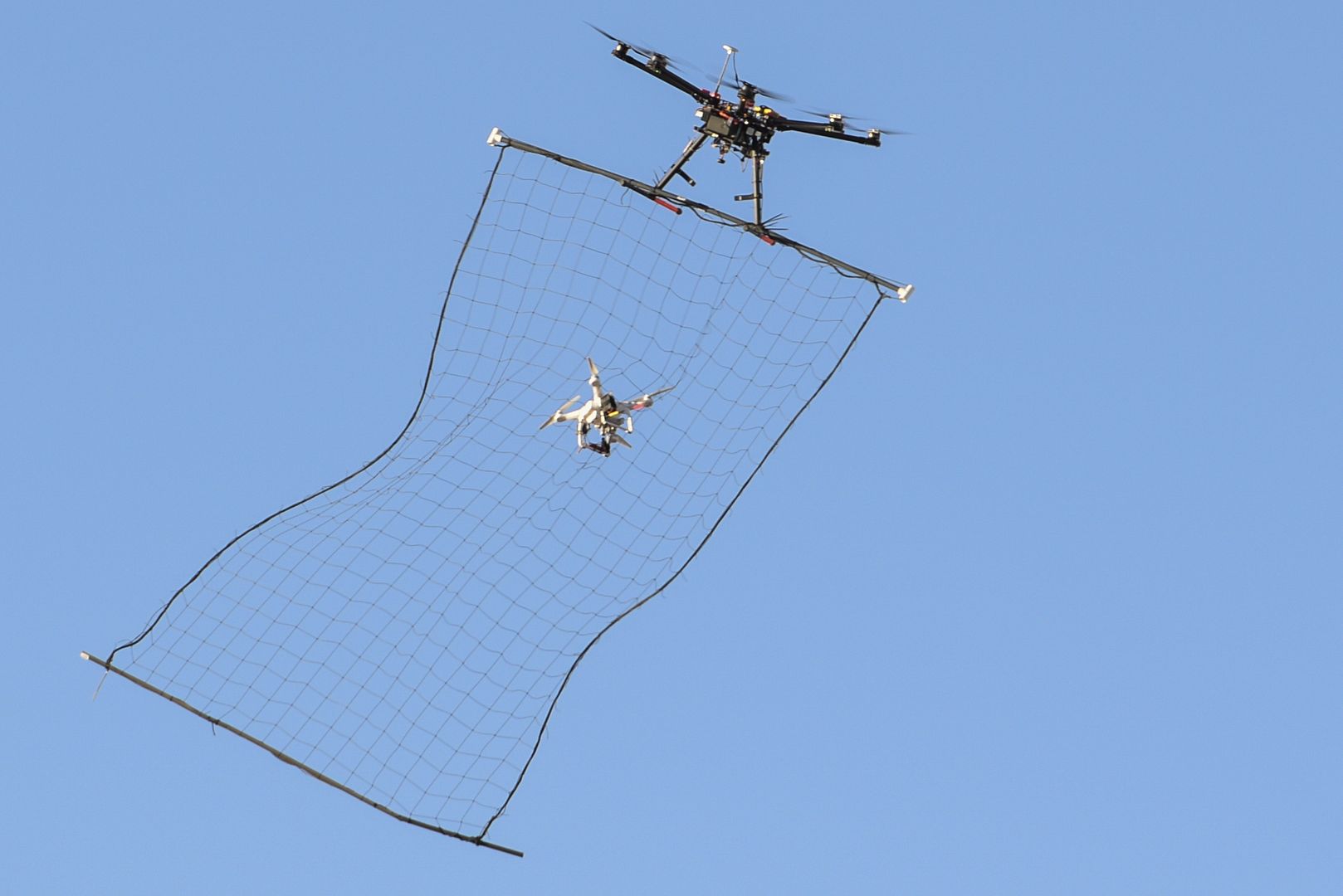
TYNDALL AIR FORCE BASE, Fla. --
Six F-35A Lightning II from Eglin Air Force Base and more than 90 personnel are participating in the large-scale, total force Checkered Flag 17-1 exercise here Dec. 5-16.
The 33rd Fighter Wing?s F-35s bring another level of training and integration to the exercise, working alongside another fifth-generation fighter, the F-22 Raptor, as well as F-15E Strike Eagles, F-16 Fighting Falcons, HH-60G Pave Hawks and an E-3 Sentry. As a combat rehearsal for participating units, Checkered Flag is a unique opportunity for pilots, maintainers, air battle managers and intelligence to come together and practice in the same physical space.
?We need to train the way we fight. It?s good to get in there and start working as a team,? said Maj. Brad Zimmerman, 33rd Operations Support Squadron assistant chief of weapons. ?I think the biggest pro of this exercise is everyone being part of the entire mission planning cycle from the briefing the day prior, to going out and flying, and then the debrief after. It?s been great to have that full circle experience and getting all the learning points out.?
When each of these units come together to practice flying combat sorties, they develop the relationships and tactics necessary to execute these mission sets successfully, as a team, in real-world engagements.
?I think anytime you are working with someone that you don?t work with on a daily basis, you have a lot to learn about them,? Zimmerman said in reference to the other participating units. ?A lot of the minutiae that you have to get worked out, you can?t learn via video conferences and phone briefs. This is a great opportunity to get those things fixed and get them incorporated into the next day. I have seen a lot of improvement from today verses what we had day one. Every day we are progressing.?
The Eglin personnel are learning a lot about being in a deployed environment and enjoying their time in a different setting.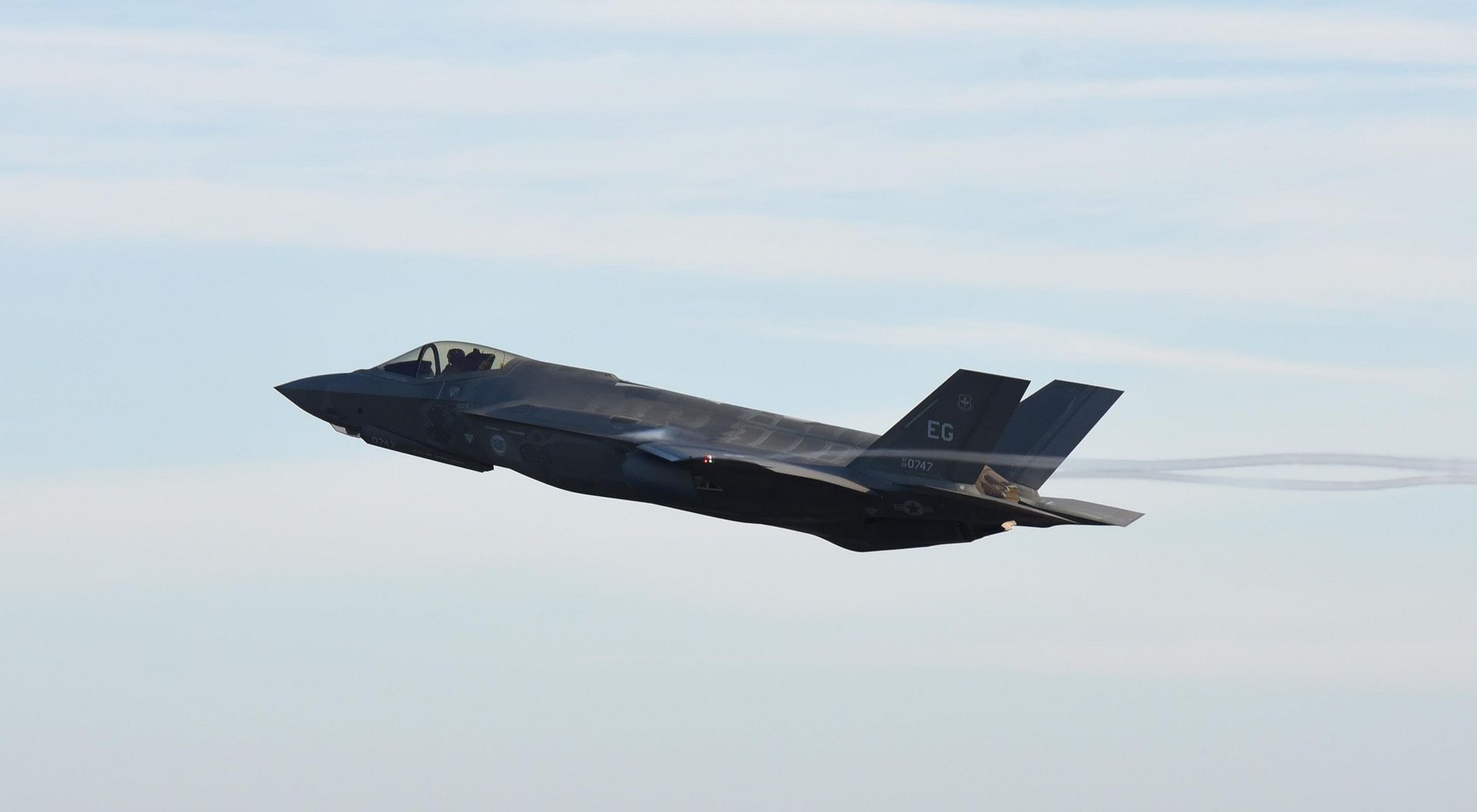
?The morale here has been very high,? said Tech. Sgt. Matthew Tilley, 33rd Aircraft Maintenance Squadron F-35 avionics technician. ?A lot of us feel like it is a nice break from home station. We are also learning a lot of lessons.?
In addition to the six F-35 working from Tyndall?s ramp, six more are launching from Eglin each day acting primarily as aggressors, ?Red Air,? against the coalition of fighters at Tyndall, ?Blue Air.? In the closing week of the exercise, these jets will also be augmenting with the ?Blue Air? to make full use of the integration training.
?We?re getting between 60 and 90 aircraft airborne at one time with the tanker and AWACS support coupled with the off-station players and all of the coordination that goes into it. When that plan comes together at one point in time, it?s pretty cool to see,? Zimmerman said.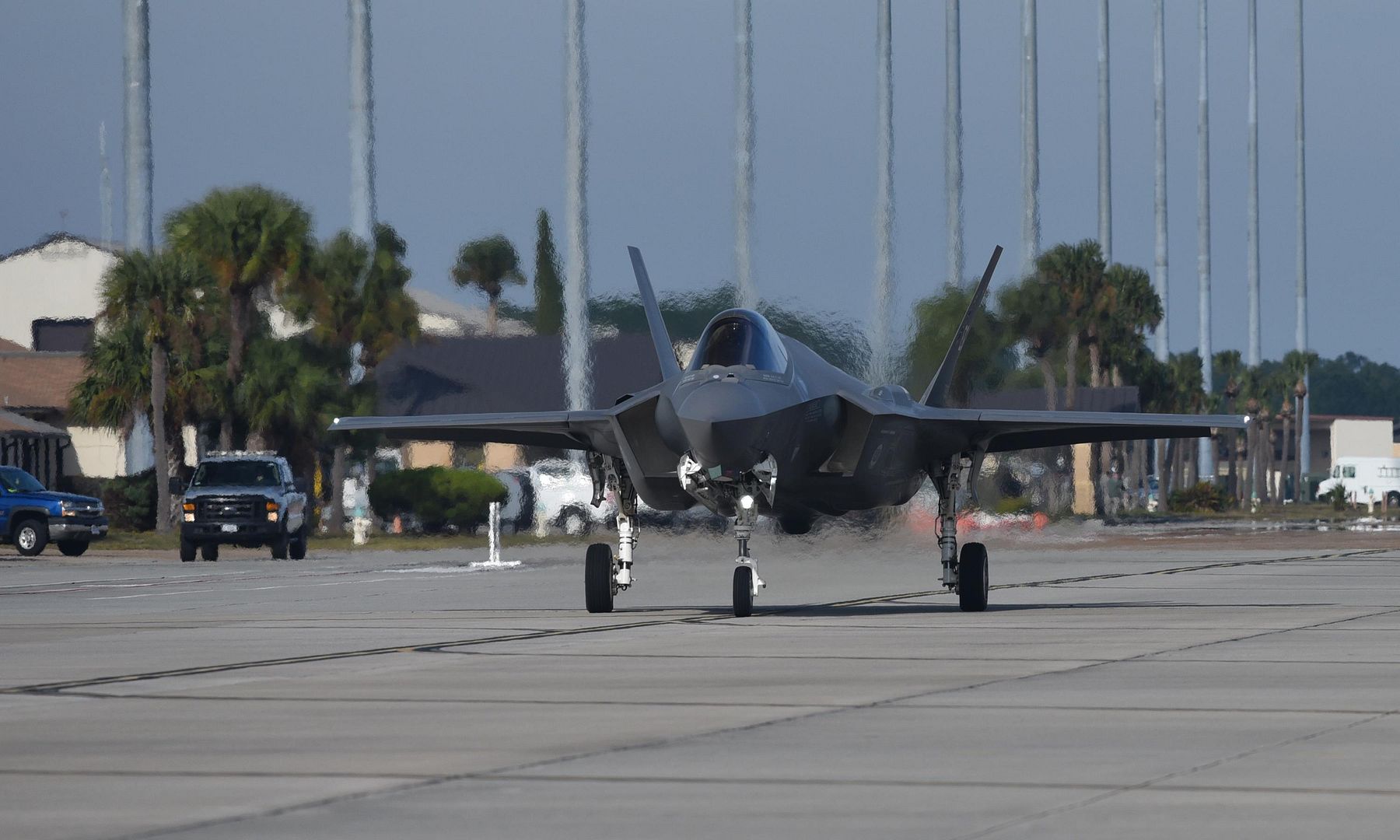
MEDITERRANEAN SEA (Dec. 11, 2016)
Petty Officer 3rd Class Alexis Rey, from Stratford, Conn., conducts pre-flight checks on an EA-18G Growler assigned to the Zappers of Electronic Attack Squadron (VAQ) 130 on the flight deck of the aircraft carrier USS Dwight D. Eisenhower (CVN 69). Dwight D. Eisenhower, currently deployed as part of the Eisenhower Carrier Strike Group, is conducting naval operations in the U.S. 6th Fleet area of operations in support of U.S. national security interests in Europe. U.S. Navy photo by Petty Officer 2nd Class Ryan Kledzik (Released)
SEATTLE, Dec. 13, 2016 ? Boeing [NYSE: BA] delivered to NATO the first of fourteen E-3A Airborne Warning and Control System (AWACS) aircraft with cockpit upgrades that improve mission-readiness, decrease customer costs and reaffirm Boeing?s overall commitment to the fleet.
The Communication Navigation Surveillance/Air Traffic Management (CNS/ATM) digital flight deck and avionics enhancements ensure compliance with current and future air traffic control and navigation requirements.
Upgrades include five full-color glass displays, which provide crewmembers with customizable engine, navigation and radar data to improve mission execution. Digital capabilities allow NATO to reduce flight crew size by one, leading to greater efficiencies and cost savings.
?These improvements allow the removal of airspace restrictions, which saves NATO flight crews time and fuel and supplies operators with easier access to the information they need,? said Wendy Atkinson, Boeing AWACS CNS/ATM program manager.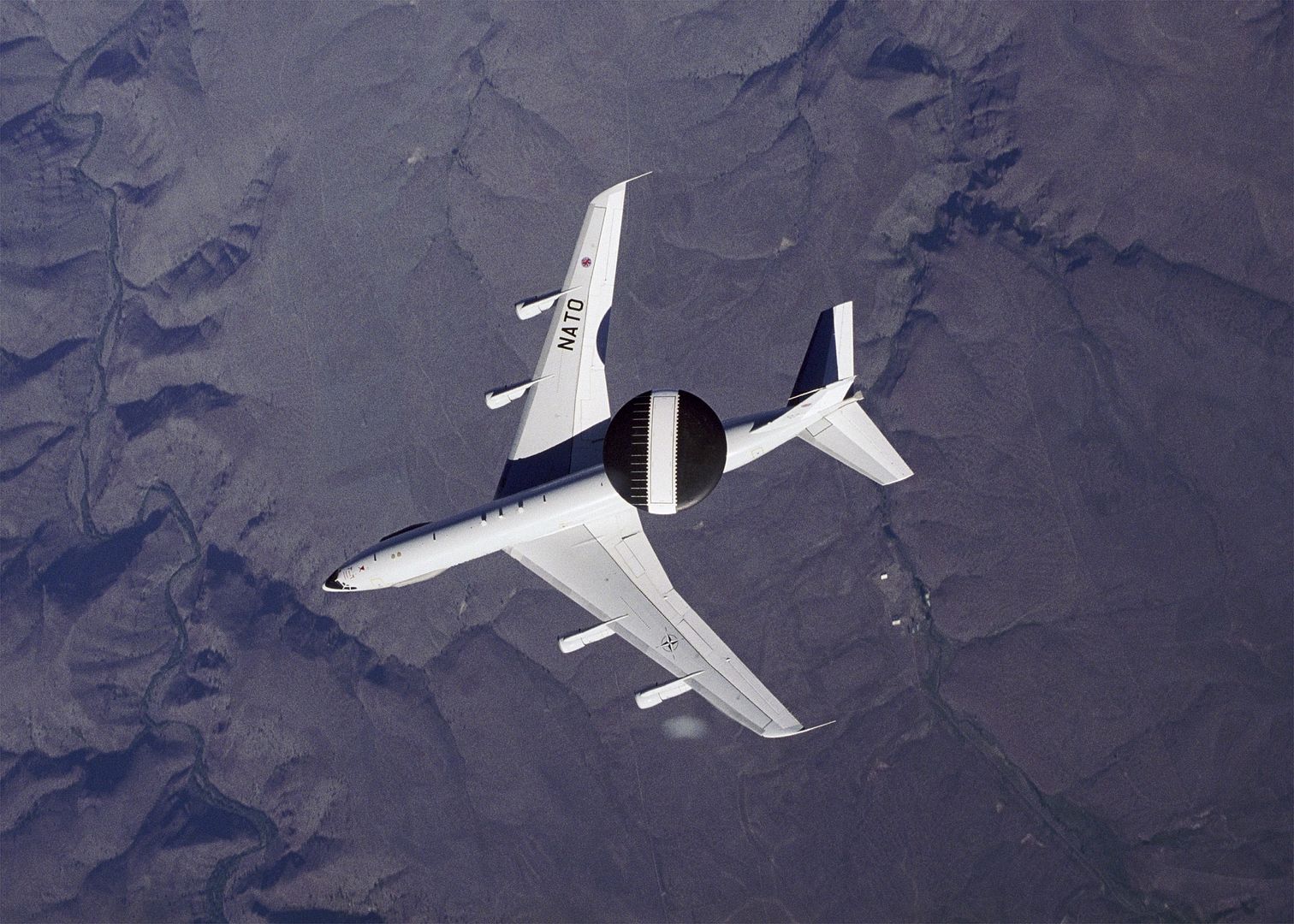
NATO?s AWACS fleet is the alliance?s first integrated, multinational flying unit, providing rapid deployment, airborne surveillance and communication for NATO operations.
Thirteen additional NATO AWACS will receive installation of the upgrade as part of a $257 million modification effort. The second aircraft upgrade is already under way, with the entire fleet slated for completion in 2018.
The modernization has also been installed on a U.S. Air Force AWACS, which is completing extensive flight tests and will deliver in 2017.
?The AWACS program is a vital asset for the NATO alliance and a best practice in transatlantic defense industrial cooperation,? said Brian Moran, vice president, Government Affairs for Boeing in Europe. ?Partnering with companies from both sides of the Atlantic helped us get this important capability back in the hands of our customers on time and on budget.?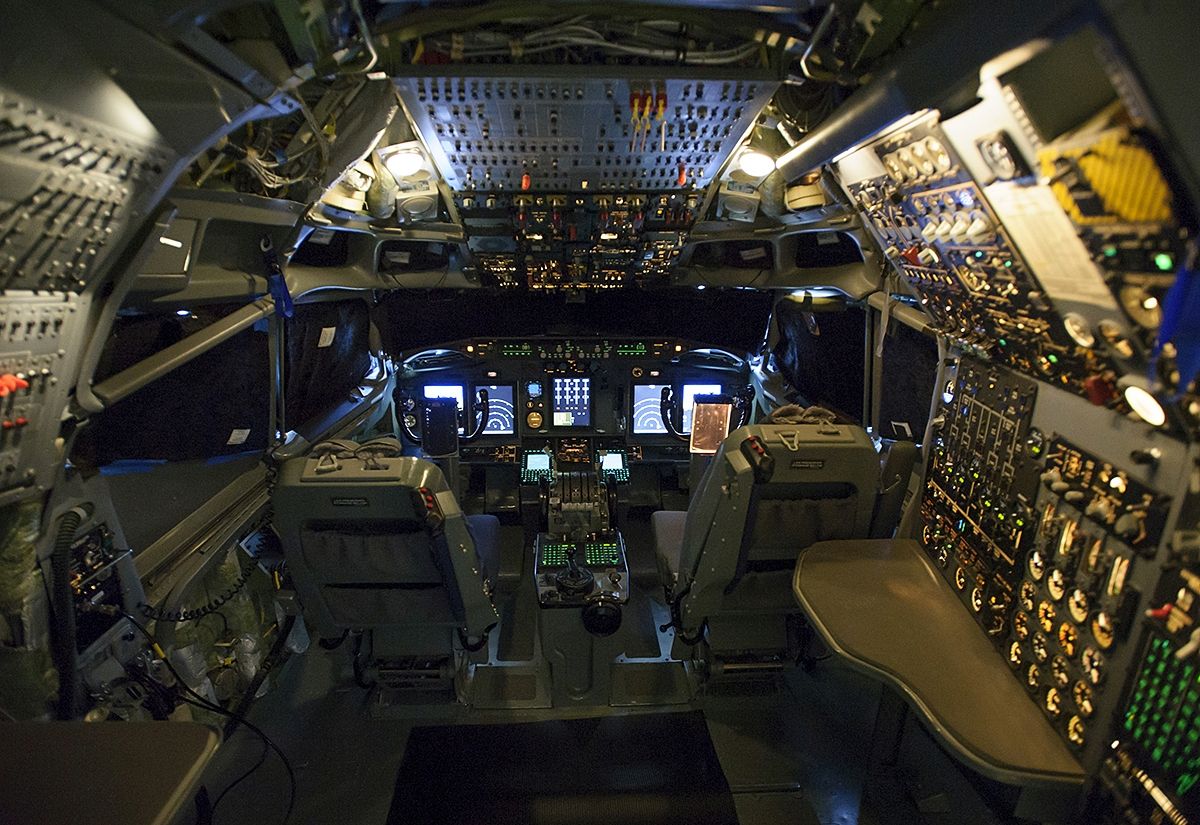
DAR ES SALAAM, Tanzania, Dec. 13, 2016 ? Boeing [NYSE: BA] and the United Republic of Tanzania have confirmed an order for one 787-8 Dreamliner, valued at $224.6 million at list prices. The aircraft will be operated by Air Tanzania, the flag carrier of Tanzania. The order was previously attributed to an unidentified customer on Boeing?s Orders & Deliveries website.
Air Tanzania said, ?The 787 Dreamliner will be the flagship aircraft as we renew and grow the Air Tanzania fleet. We aim to establish our long-haul capability by starting flights to Europe, Asia and the U.S.A over the coming years and the 787 is the perfect aircraft to achieve this ambition. Our hub airport at Dar es Salaam is well located to provide connections onwards across east Africa, capitalizing on the growing demand for tourism in Tanzania and throughout the region from intercontinental markets.?
The 787 is a family of technologically advanced, super-efficient airplanes with new passenger-pleasing features. In addition to bringing big-jet ranges to midsize airplanes, the 787 will provide Air Tanzania with unmatched fuel efficiency and environmental performance, using 20 to 25 percent less fuel and with 20 to 25 percent fewer emissions than the airplanes it replaces.
"I am pleased to welcome Air Tanzania as the newest member of the Dreamliner family,? said Van Rex Gallard, Vice President, Latin America, Africa & Caribbean Sales, Boeing Commercial Airplanes. "We are honored that Air Tanzania has chosen the 787 to operate its long-haul operations. The 787 will significantly increase passenger numbers feeding on to its domestic flights thereby boosting overall tourism to Tanzania."
Air Tanzania Company Limited is the flag carrier of Tanzania based in Dar es Salaam with its hub at Julius Nyerere International Airport and currently flies to destinations in Tanzania with a growing fleet of airplanes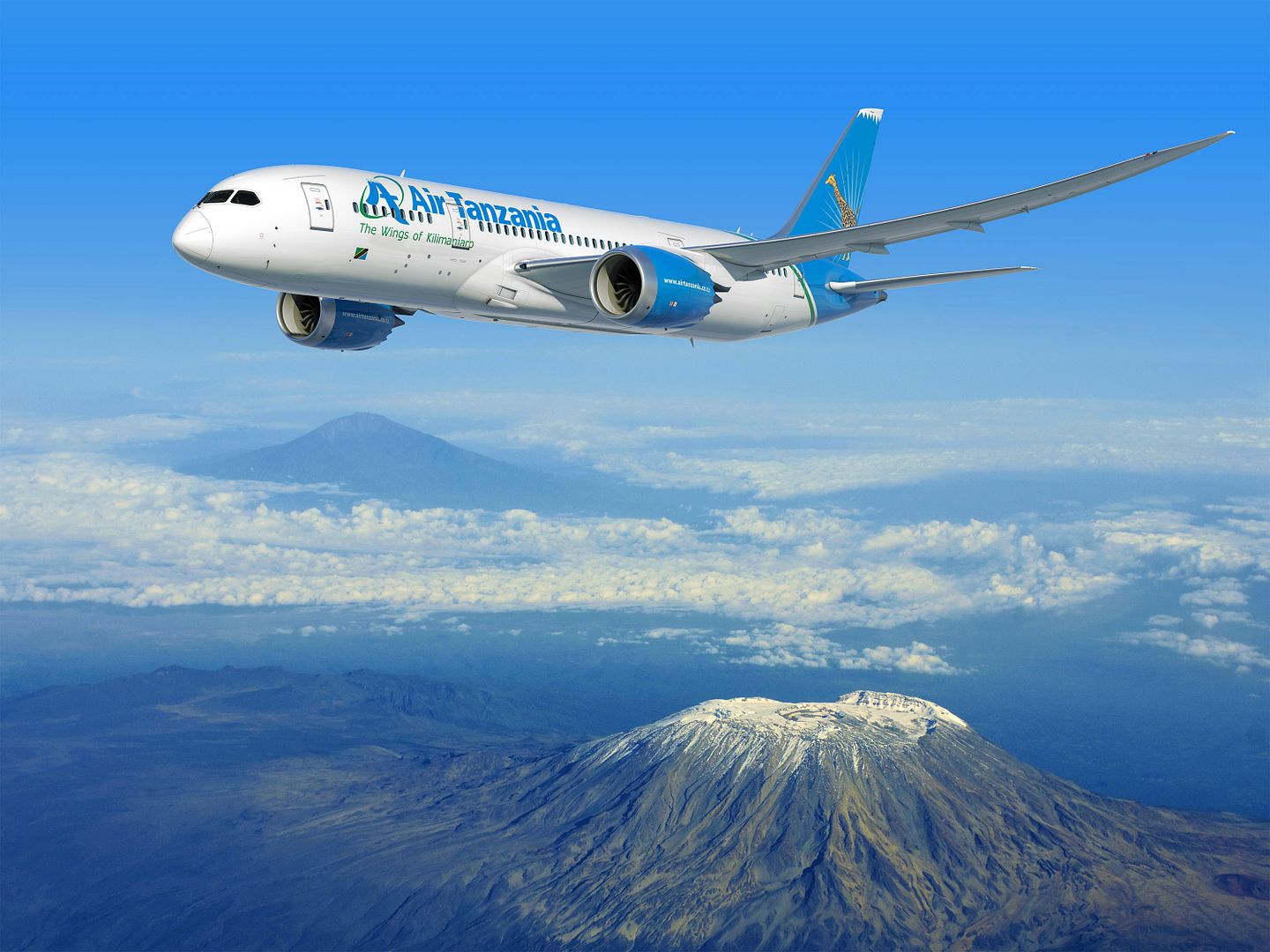
December 12, 2016 - News
Airbus Defence and Space has delivered to the German Air Force its first A400M transport aircraft qualified for tactical operations and able to fly in areas subject to military threats.
The aircraft is the sixth A400M in German service and the first with the new capabilities in addition to the world-leading performance of all A400Ms as strategic transports. All aircraft will be retrofitted to the new standard and receive subsequent enhancements as those are certified.
Key aspects of the aircraft?s latest capabilities are improvements in its self-defence systems, ability to air-drop cargo loads, and paratrooping. Additionally it can operate on unprepared runways, fly as low as 150ft above the ground, refuel other aircraft as a tanker, and safely take-off and land in extremely high temperatures.
Airbus Defence and Space A400M Programme Manager, Kurt Rossner, said: ?The A400M programme has made enormous progress this year in implementing these critical capabilities on the aircraft. In addition to having twice the payload-range of the legacy transports like the C-160 and C-130 that it is replacing, it can now also operate from any runway that those older aircraft could use. There is no other aircraft in the market with the A400M?s combination of tactical and strategic capabilities and it is going to transform Germany?s air mobility force.?
The new aircraft is fitted with a Defensive Aids Sub-System (DASS) incorporating a Missile Warning System, Radar Warning Receiver, and an Expendables Dispensing System to eject flares and radar-confusing chaff. The DASS for all A400Ms is integrated by Airbus Defence and Space at Ulm.
Military and humanitarian loads of up to 8 tonnes each, including for example 24 x 1 tonne pallets, are fully certified for air-dropping from the aircraft?s ramp and further loads are being continually qualified in flight test.
Paratroops can be dropped from the ramp or side paratroop doors in sticks of up to 20, and sticks of 30 have already been successfully demonstrated with certification to follow. Flight testing continues to build the numbers next to 40 and then 58 in a single pass.
The A400M is certified to operate from grass runways and has successfully completed testing of operations from gravel and sandy soil with certification in process. Low-level flight in mountainous terrain is cleared down to 150ft above ground by day and 300ft by night under the pilot?s manual control. Development of automatic low-level flight is well advanced.
The aircraft is certified to receive fuel in-flight from a tanker, and as a tactical tanker itself to refuel fighters and other large aircraft by day, with night operations demonstrated and close to certification.
In this latest configuration the A400M is certified to operate in temperatures up to 55?C at sea level, ensuring excellent ?hot and high? performance at operationally challenging airfields around the world. And it is approved to take-off and fly on only three of its four powerful engines in the event of a mechanical problem or battle damage, adding to its outstanding level of operating autonomy.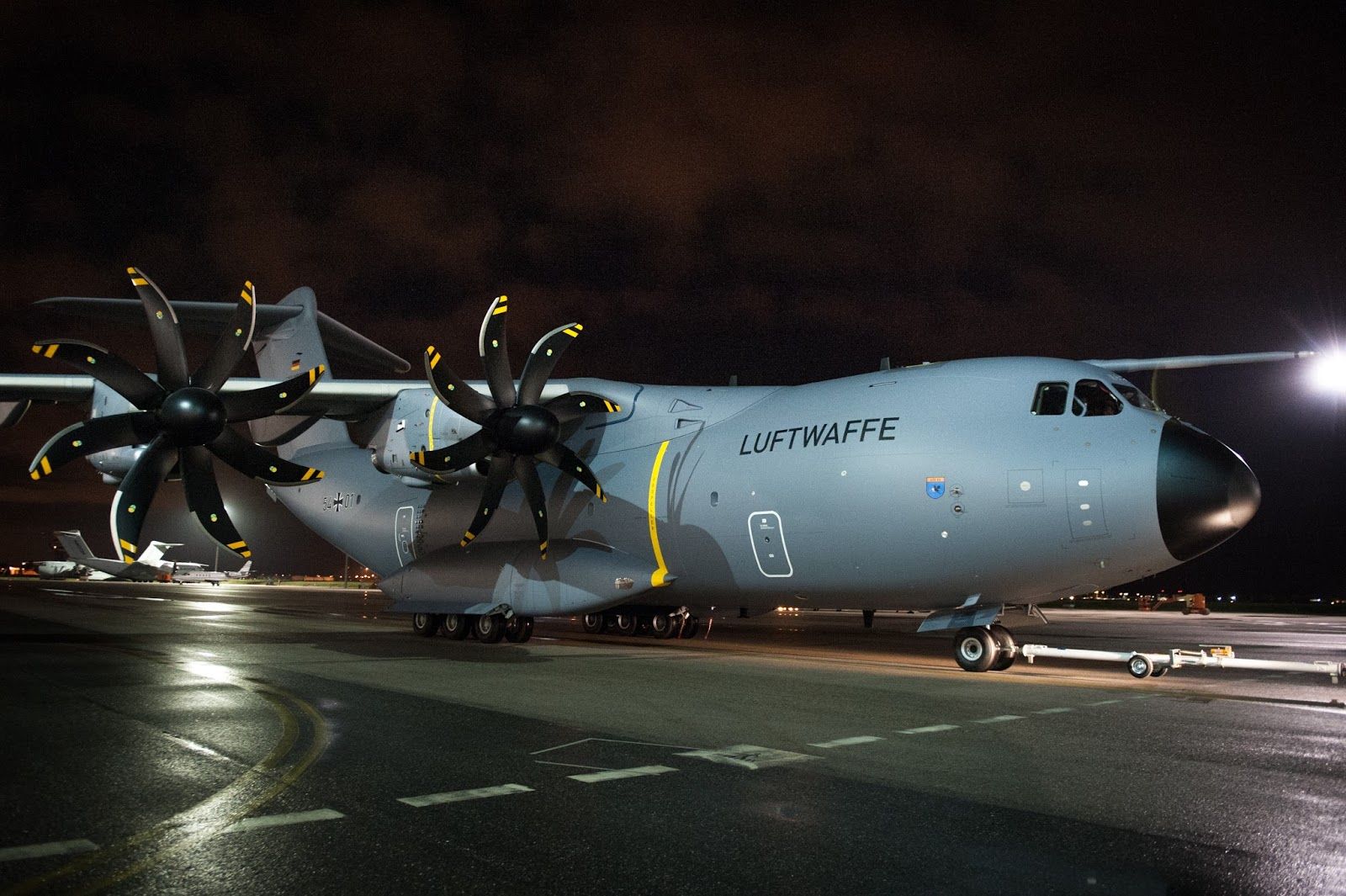
-
 Main AdminPACIFIC OCEAN (Dec. 13, 2016) An F/A-18F Super Hornet assigned to the Black Aces of Strike Fighter Squadron (VFA) 41 takes off from USS John C. Stennis' (CVN 74) flight deck during carrier qualifications. John C. Stennis is underway to conduct routine training in the 3rd Fleet area of responsibility. (U.S. Navy photo by Petty Officer 3rd Class Jake Greenberg / Released)
Main AdminPACIFIC OCEAN (Dec. 13, 2016) An F/A-18F Super Hornet assigned to the Black Aces of Strike Fighter Squadron (VFA) 41 takes off from USS John C. Stennis' (CVN 74) flight deck during carrier qualifications. John C. Stennis is underway to conduct routine training in the 3rd Fleet area of responsibility. (U.S. Navy photo by Petty Officer 3rd Class Jake Greenberg / Released)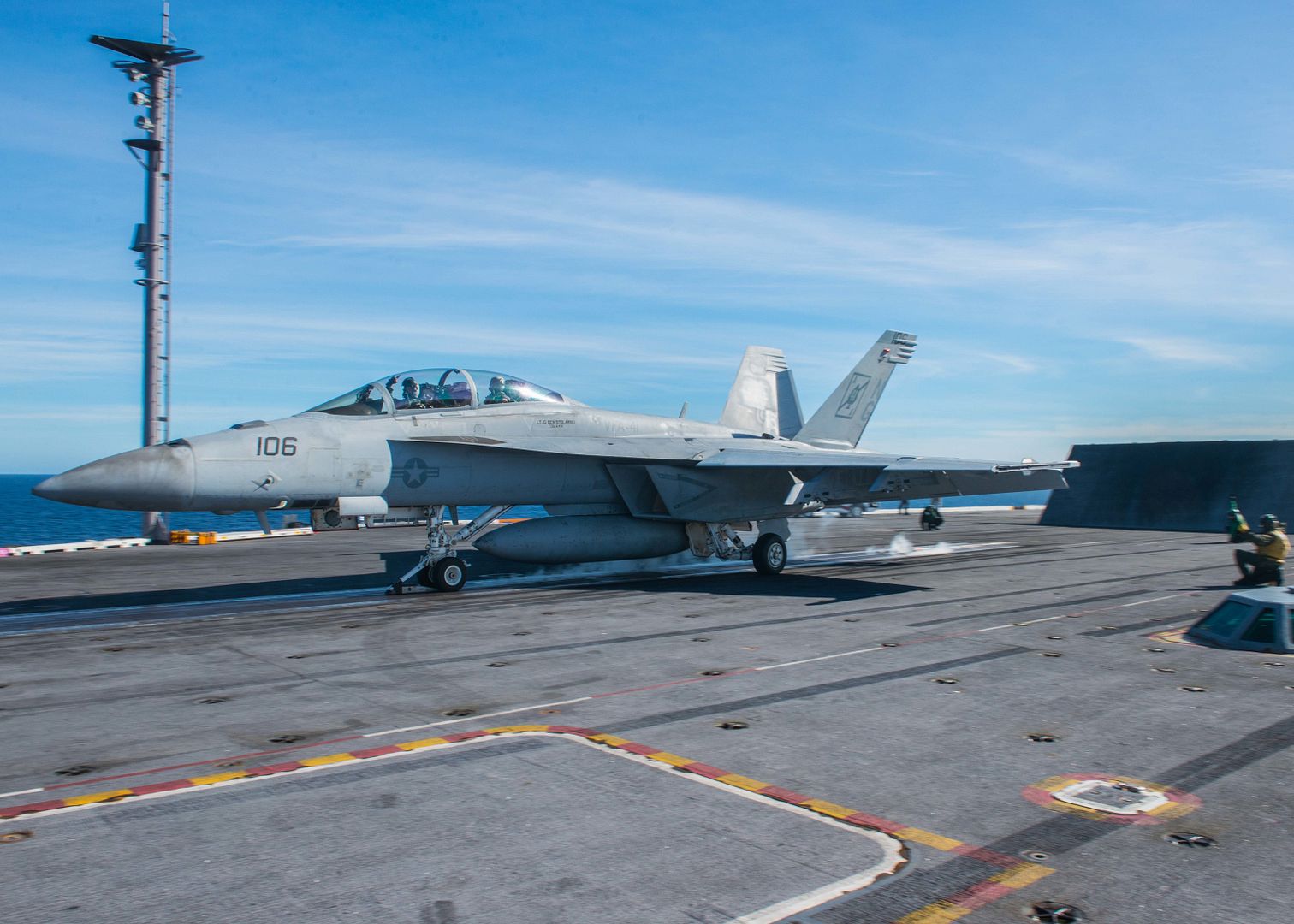
MEDITERRANEAN SEA (Dec. 13, 2016) An F/A-18C Hornet assigned to the Wildcats of Strike Fighter Squadron (VFA) 131 launches from the flight deck of the aircraft carrier USS Dwight D. Eisenhower (CVN 69) (Ike). Ike, currently deployed as part of the Eisenhower Carrier Strike Group, is conducting naval operations in the U.S. 6th Fleet area of operations in support of U.S. national security interests in Europe. (U.S. Navy photo by Petty Officer 3rd Class Anderson W. Branch)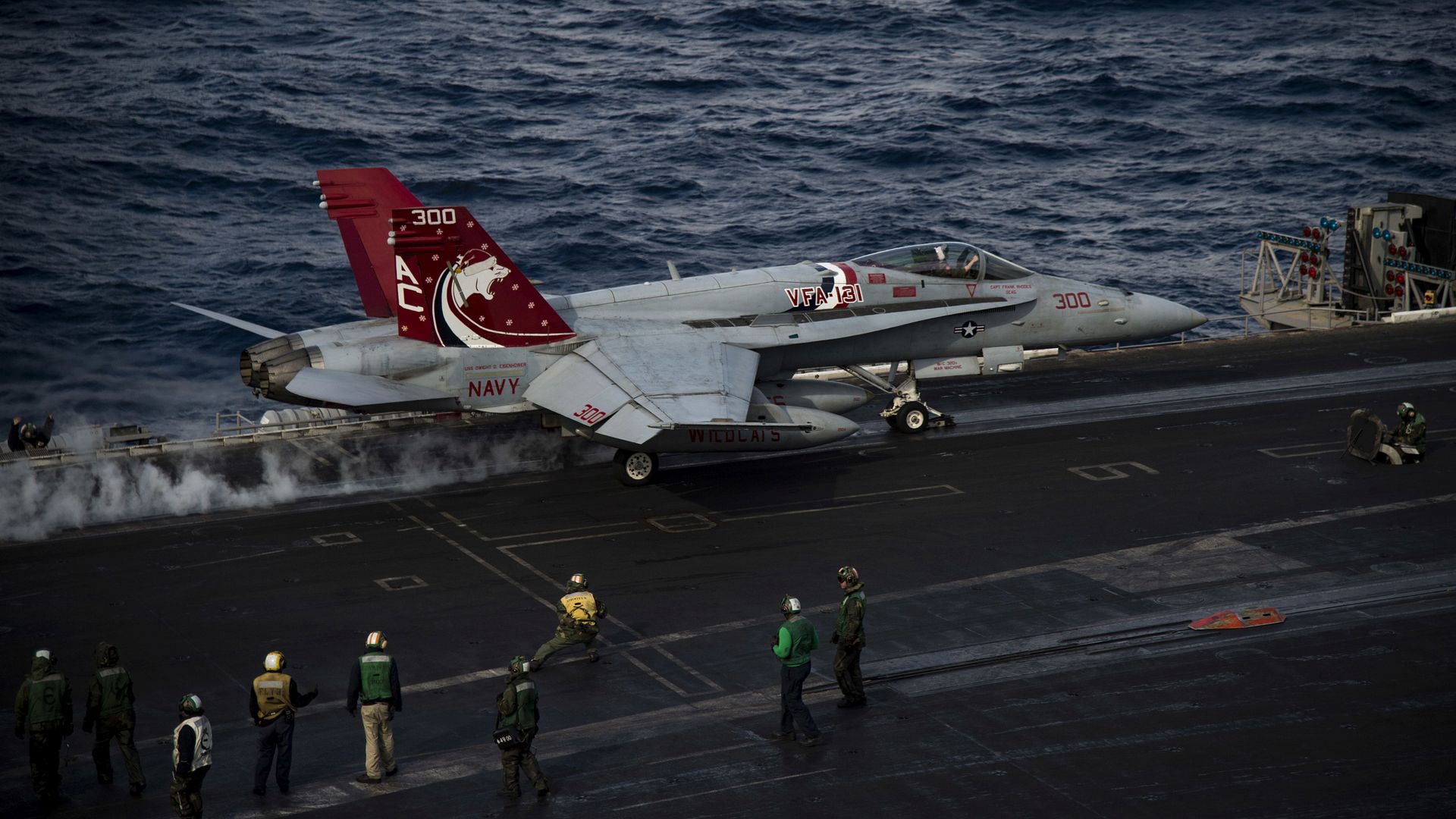
The super moon sets over a frozen flightline of C-130H Hercules in the early morning at the 179th Airlift Wing, Mansfield, Ohio, as maintainers continue to perform their daily morning operations, Dec. 14, 2016. The 179th Airlift Wing is always on a mission to be the first choice to respond to state and federal missions with a trusted team of Airmen. (U.S. Air National Guard photo by Tech. Sgt. Joe Harwood\Released)
U.S. Air Force Maj. Anibal Aguirre, 33rd Rescue Squadron weapons and tactics officer, piloted one of the HH-60G Pave Hawks during the rescue of five MV-22 Osprey crewmembers Dec. 13, 2016. Members of the 33rd RQS participated in the successful rescue of the Marines alongside members of the 31st RQS, Japan Air Self-Defense Force and the Japan Coast Guard following a shallow water landing off the coast of Okinawa near Camp Schwab. (U.S. Air Force photo by Senior Airman Lynette M. Rolen/Released)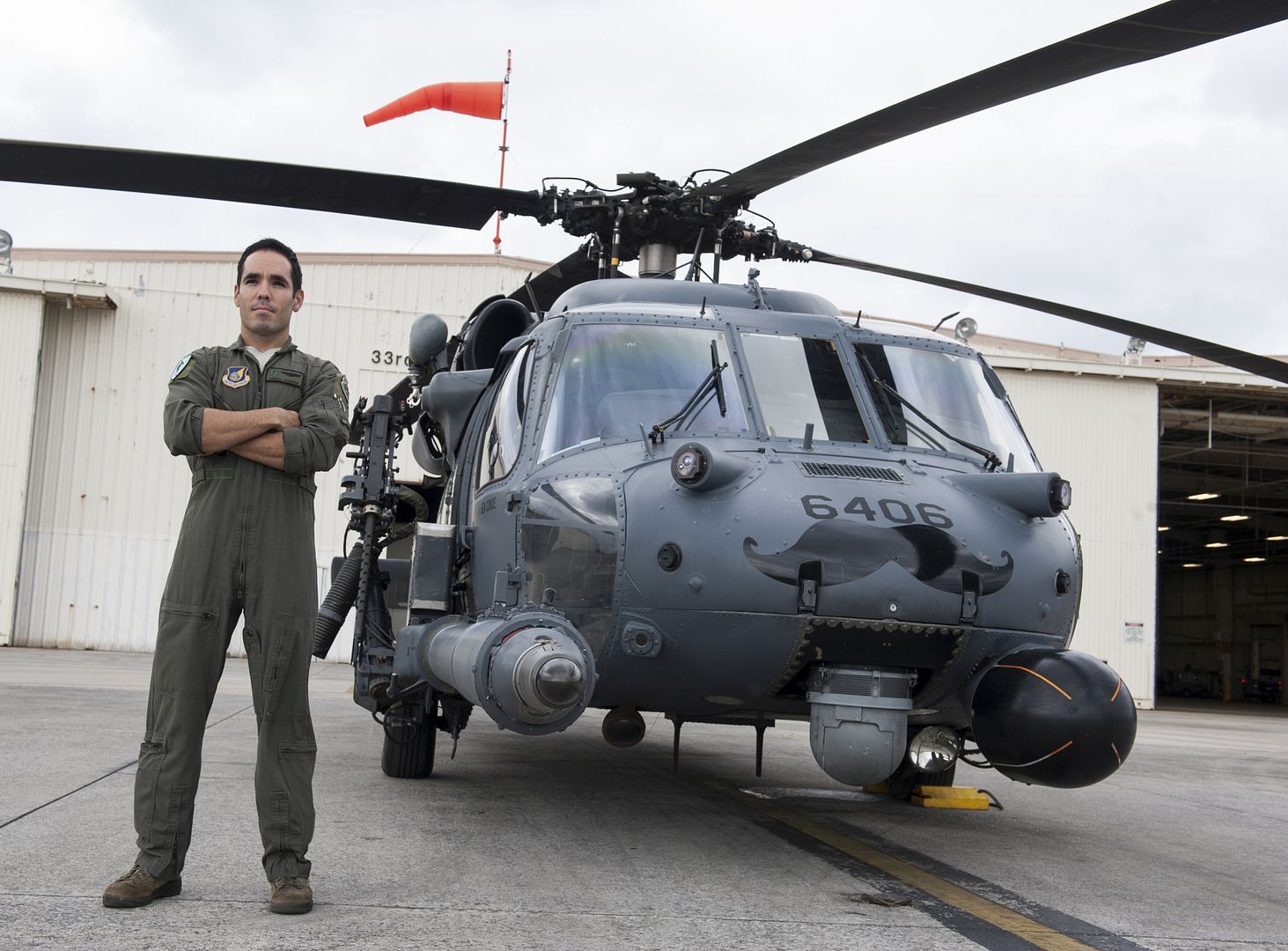
December 14, 2016 Montr?al Commercial Aircraft, Press Release
Bombardier Commercial Aircraft today congratulated launch operator airBaltic on the superb execution of the CS300 aircraft?s first commercial flight. With 120 passengers aboard, including local media, the flight departed Riga and landed in Amsterdam. airBaltic is operating the CS300 aircraft in a 145-seat, two-class configuration. The airline has ordered a total of 20 CS300 aircraft.
?airBaltic has been counting down the days to this landmark moment. During its maiden commercial flight today, the CS300 aircraft performed beyond our expectations and offered a new level of travel experience for our customers,? said Martin Gauss, Chief Executive Officer, airBaltic. ?We look forward to serving many communities across Western Europe and the Eastern markets with the CS300 aircraft ? the largest variant in the world?s most efficient and environmentally friendly family of airliners.?
?As one of the World?s Most Innovative Airlines, airBaltic?s flawless entry-into-service of the state-of-the-art CS300 aircraft signals the airline?s progress with its fleet modernization strategy,? said Fred Cromer, President, Bombardier Commercial Aircraft. ?The CS300 aircraft?s entry-into-service also confirms Bombardier?s successful execution on our commitment to deliver the only all-new family of single-aisle airliners the 100- to 150-seat market in 30 years.?
?Today?s commercial flight highlights the remarkable journey between airBaltic and Bombardier as the CS300 aircraft is brought to market,? said Rob Dewar, Vice President, C Series Aircraft Program, Bombardier Commercial Aircraft. ?We salute airBaltic, our employees, suppliers and industry stakeholders for their steadfast loyalty to the success of the C Series aircraft program.?
Since entering revenue service with SWISS, the CS100 aircraft has completed more than 1,600 flights -- carrying over 156,560 passengers, covering over 1,181 500 km and serving 18 destinations.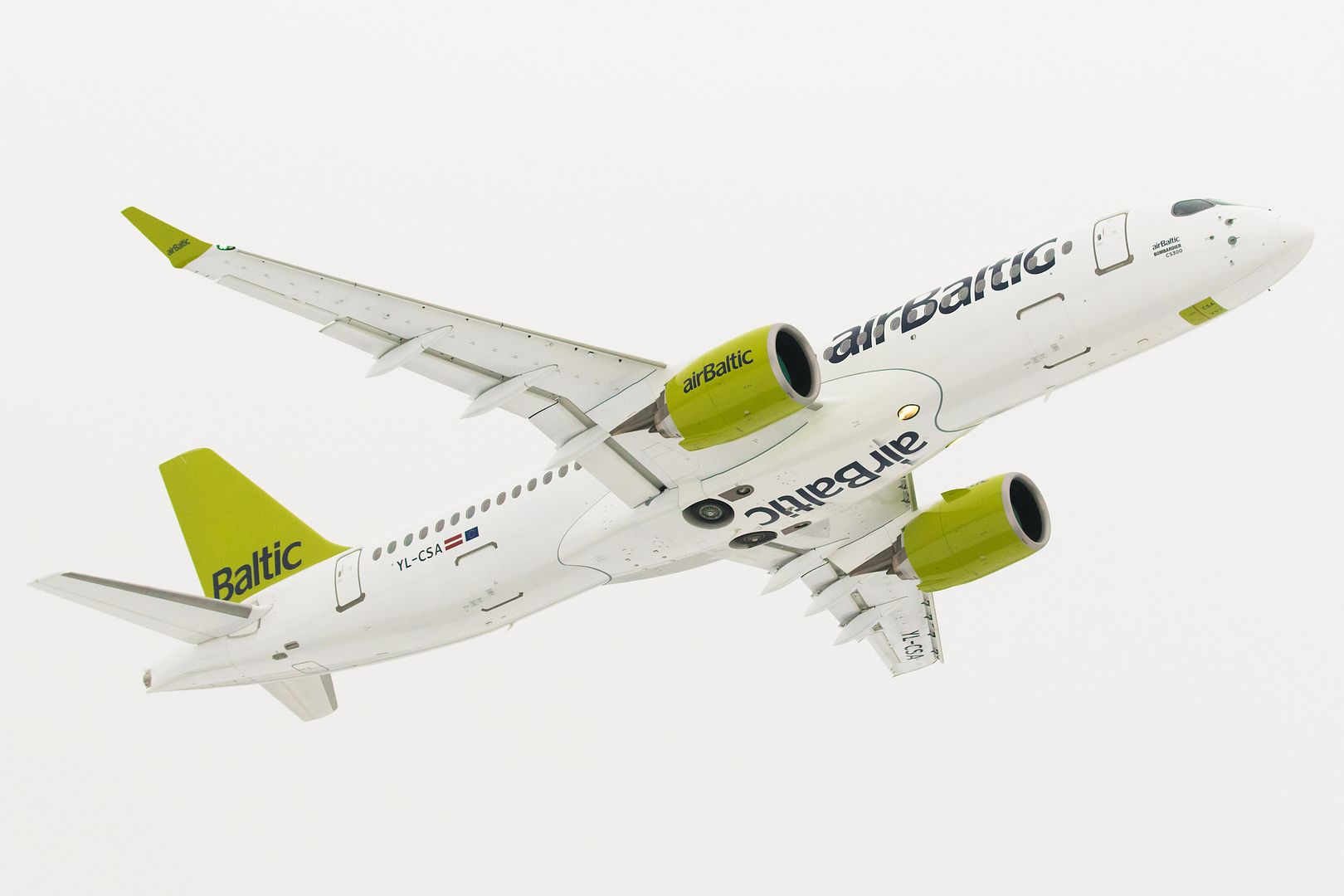
-
 Main AdminThe Orbital ATK L-1011 Stargazer aircraft flies over the Atlantic Ocean carrying the Pegasus XL rocket with eight Cyclone Global Navigation Satellite System spacecraft. The 45th Space Wing supported Orbital ATK?s successful rocket launch Dec. 15 at 8:37 a.m. from the L-1011 carrier aircraft which took off from the Skid Strip at Cape Canaveral Air Force Station, Fla. According to NASA, CYGNSS satellites will make frequent and accurate measurements of ocean surface winds throughout the life cycle of tropical storms and hurricanes. The data that CYGNSS provides will enable scientists to probe key air-sea interaction processes that take place near the core of storms, which are rapidly changing and play a crucial role in the beginning and intensification of hurricanes. (Courtesy photo by NASA/Lori Losey)
Main AdminThe Orbital ATK L-1011 Stargazer aircraft flies over the Atlantic Ocean carrying the Pegasus XL rocket with eight Cyclone Global Navigation Satellite System spacecraft. The 45th Space Wing supported Orbital ATK?s successful rocket launch Dec. 15 at 8:37 a.m. from the L-1011 carrier aircraft which took off from the Skid Strip at Cape Canaveral Air Force Station, Fla. According to NASA, CYGNSS satellites will make frequent and accurate measurements of ocean surface winds throughout the life cycle of tropical storms and hurricanes. The data that CYGNSS provides will enable scientists to probe key air-sea interaction processes that take place near the core of storms, which are rapidly changing and play a crucial role in the beginning and intensification of hurricanes. (Courtesy photo by NASA/Lori Losey)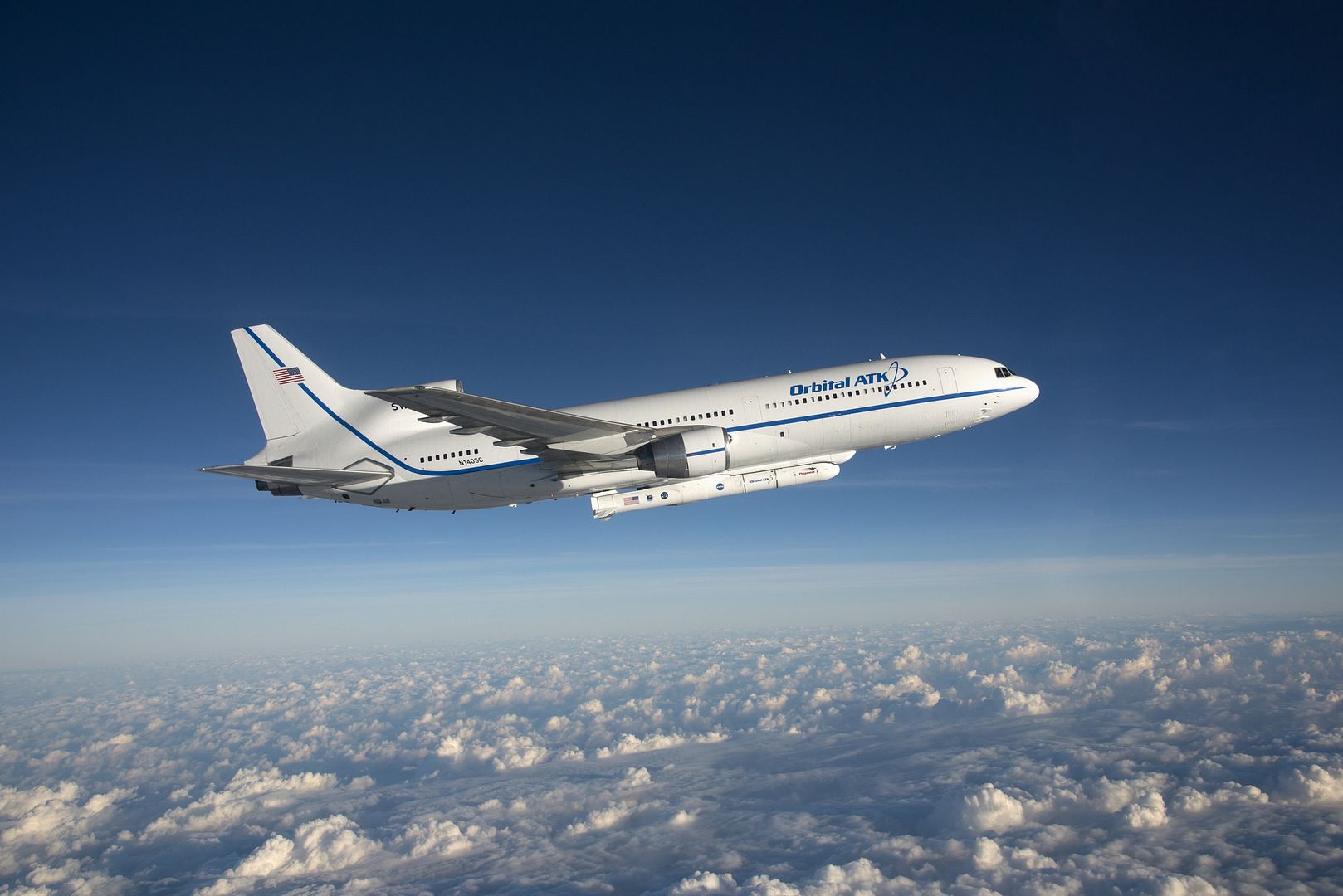
16 December 2016 Press Release
Tokyo-based airline ANA has taken delivery of its first A320neo becoming the first A320neo operator in Japan.
ANA?s A320neo is configured for 146 passengers in a two-class cabin layout with 8 business class seats and 138 economy class seats. It is powered by Pratt & Whitney?s PurePower PW1100G-JM engines. ANA plans to start scheduled commercial services from Japan to Asian cities including China in January next year.
ANA HOLDINGS, the parent company of ANA, placed orders for a total of 37 A320 Family aircraft including seven A320neos, 26 A321neos and four A321ceos in 2014 and 2015. The company also ordered three A380s this year.
The A320neo Family incorporates the latest engines and aerodynamic enhancements, delivering more than 15 percent fuel savings from day one and 20 percent by 2020. With over 4,800 orders received from 89 customers, the A320neo Family has captured over 60 percent market share in its category.
The A320 Family is the world?s best-selling single aisle product line with over 12,800 orders since launch and more than 7,300 aircraft delivered to some 400 customers and operators worldwide. Thanks to their widest cabin, all members of the A320 Family offer unmatched comfort in all classes and Airbus? 18? wide seats in economy as standard.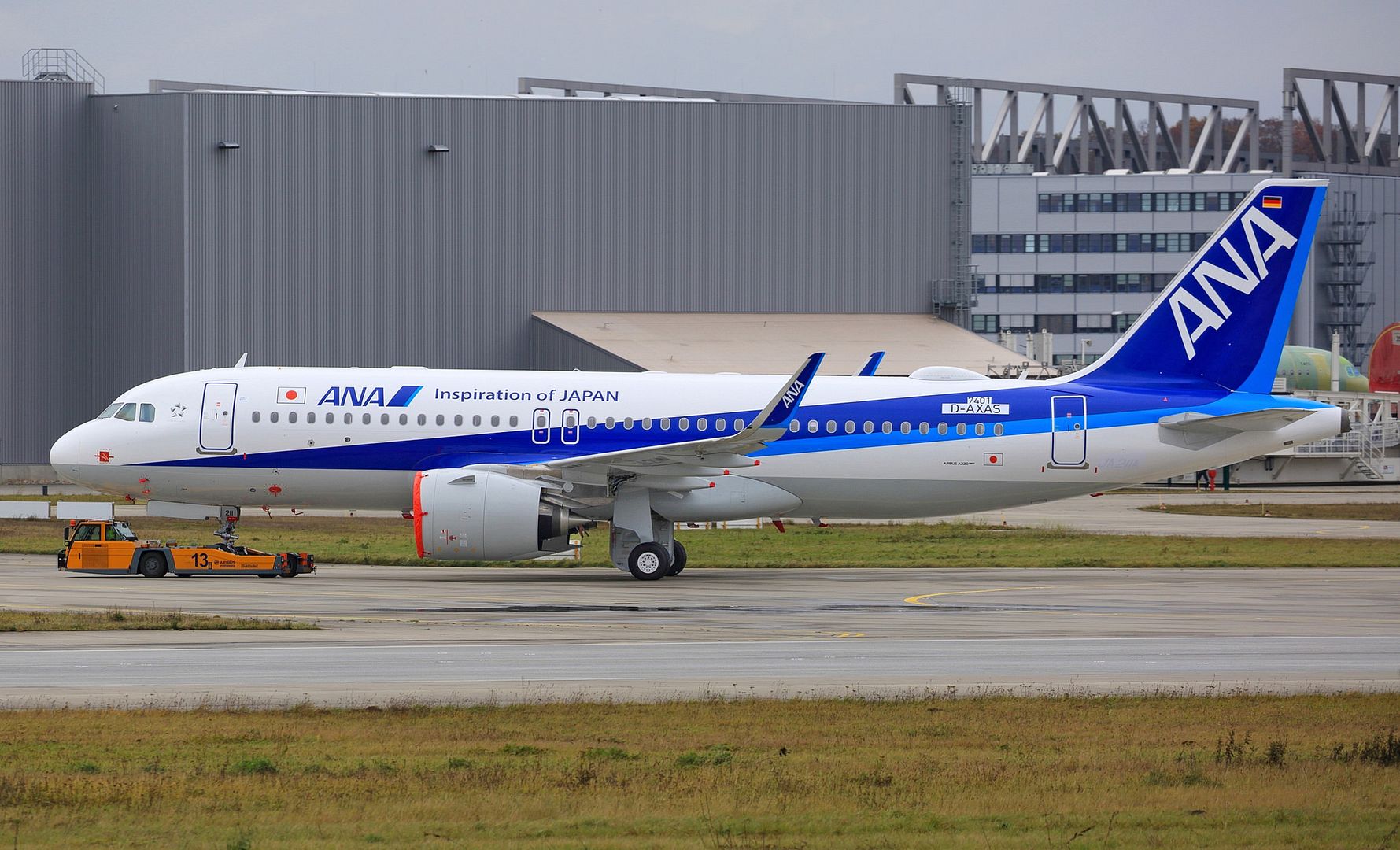
-
 Main AdminPACIFIC OCEAN (Dec. 15, 2016) A C-2A Greyhound from the Providers of Fleet Logistics Combat Support Squadron (VRC) 30, Detachment 4, lands on USS John C. Stennis' (CVN 74) flight deck during flight operations. John C. Stennis is underway to conduct routine training in the 3rd Fleet area of responsibility. (U.S. Navy photo by Petty Officer 3rd Class Cole C. Pielop / Released)
Main AdminPACIFIC OCEAN (Dec. 15, 2016) A C-2A Greyhound from the Providers of Fleet Logistics Combat Support Squadron (VRC) 30, Detachment 4, lands on USS John C. Stennis' (CVN 74) flight deck during flight operations. John C. Stennis is underway to conduct routine training in the 3rd Fleet area of responsibility. (U.S. Navy photo by Petty Officer 3rd Class Cole C. Pielop / Released)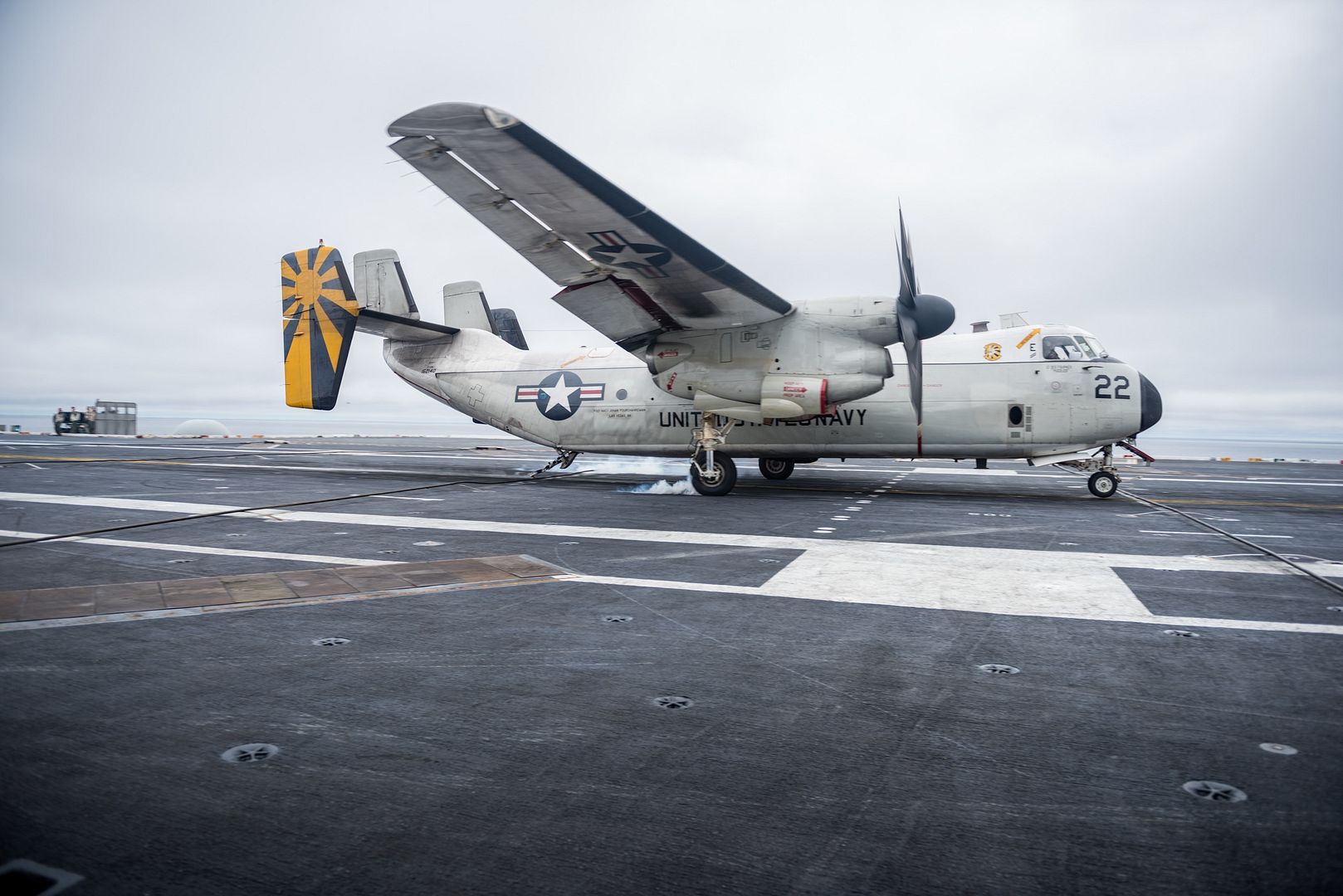
ST. AUGUSTINE, Fla. ? Dec. 15, 2016?Northrop Grumman (NYSE: NOC) has successfully completed the first flight of an E-2D Advanced Hawkeye equipped with aerial refueling (AR).
Under a 2013 engineering, manufacturing, and development (EMD) contract award, Northrop Grumman designed, developed, manufactured, and tested several sub-system upgrades necessary to accommodate an aerial refueling capability.
?The Northrop Grumman aerial refueling team continues to put outstanding effort into bringing this much-needed capability to the E-2D Advanced Hawkeye and our warfighters who rely on it,? said Capt. Keith Hash, program manager, E-2/C-2 Airborne Tactical Data System Program Office (PMA-231).
The aerial refueling capability will allow the E-2D to provide longer on-station times at greater ranges, extending its mission time to better support the warfighter.
The upgrades installed to support aerial refueling include probe and associated piping, electrical and lighting upgrades, and long endurance seats that will enhance field of view in the cockpit and reduce fatigue over longer missions.
?First flight is an exciting day in the journey from concept to an aerial refueling equipped E-2D,? said Jane Bishop, vice president, E-2/C-2 programs, Northrop Grumman. ?This takes the E-2D to another level, which will bring more combat persistence to the U.S. and our allies.?
The aerial refueling program will modify three aircraft for testing planned through 2018. Production cut-in and retrofit plans are scheduled to begin in 2018.
(Photo credit: John Germana, Northrop Grumman)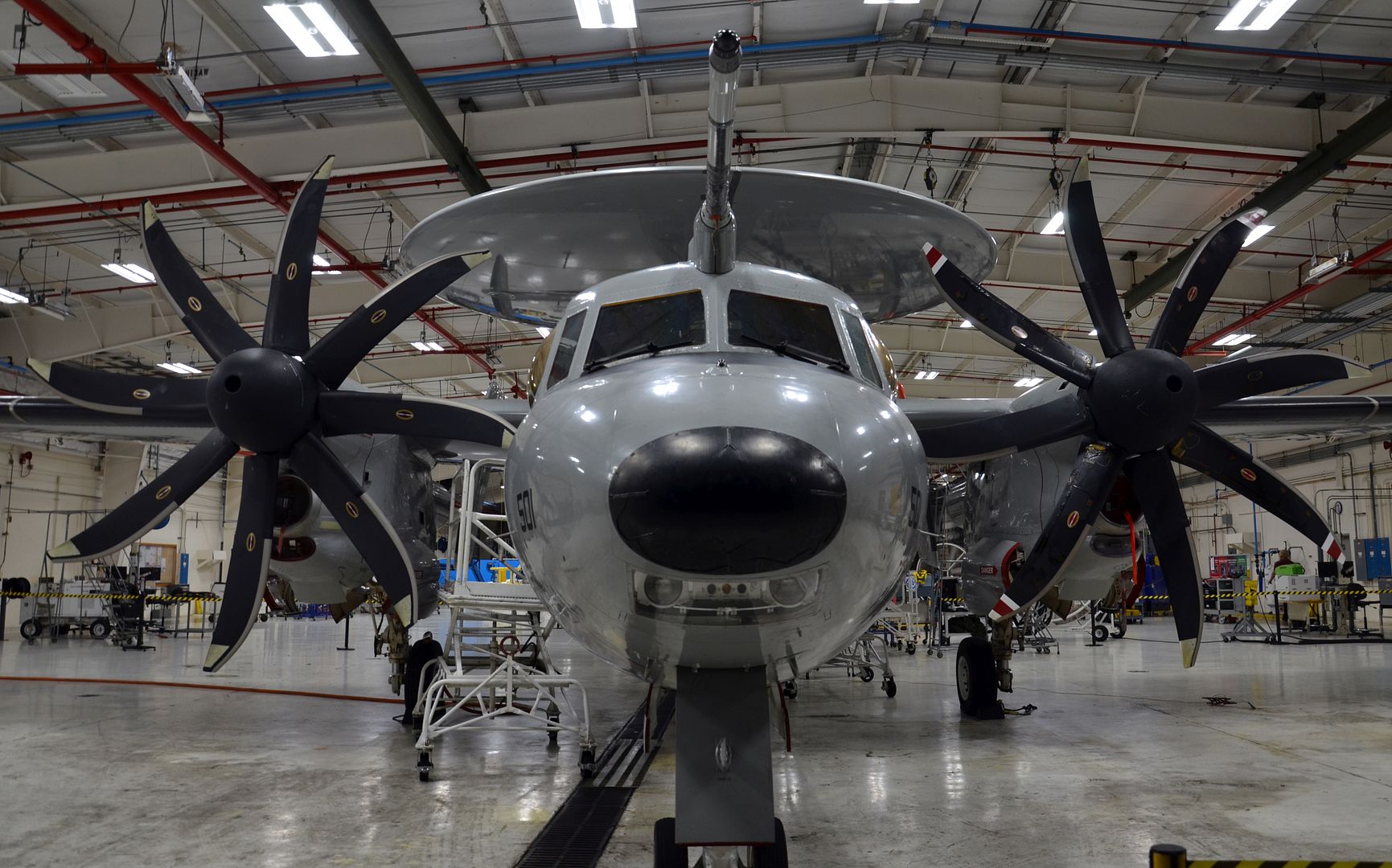
Post a reply
- Go to Next topic
- Go to Welcome
- Go to Introduce Yourself
- Go to General Discussion
- Go to Screenshots, Images and Videos
- Go to Off topic
- Go to Works in Progress
- Go to Skinning Tips / Tutorials
- Go to Skin Requests
- Go to IJAAF Library
- Go to Luftwaffe Library
- Go to RAF Library
- Go to USAAF / USN Library
- Go to Misc Library
- Go to The Ops Room
- Go to Made in Germany
- Go to Campaigns and Missions
- Go to Works in Progress
- Go to Juri's Air-Raid Shelter
- Go to Campaigns and Missions
- Go to Works in Progress
- Go to Skinpacks
- Go to External Projects Discussion
- Go to Books & Resources
